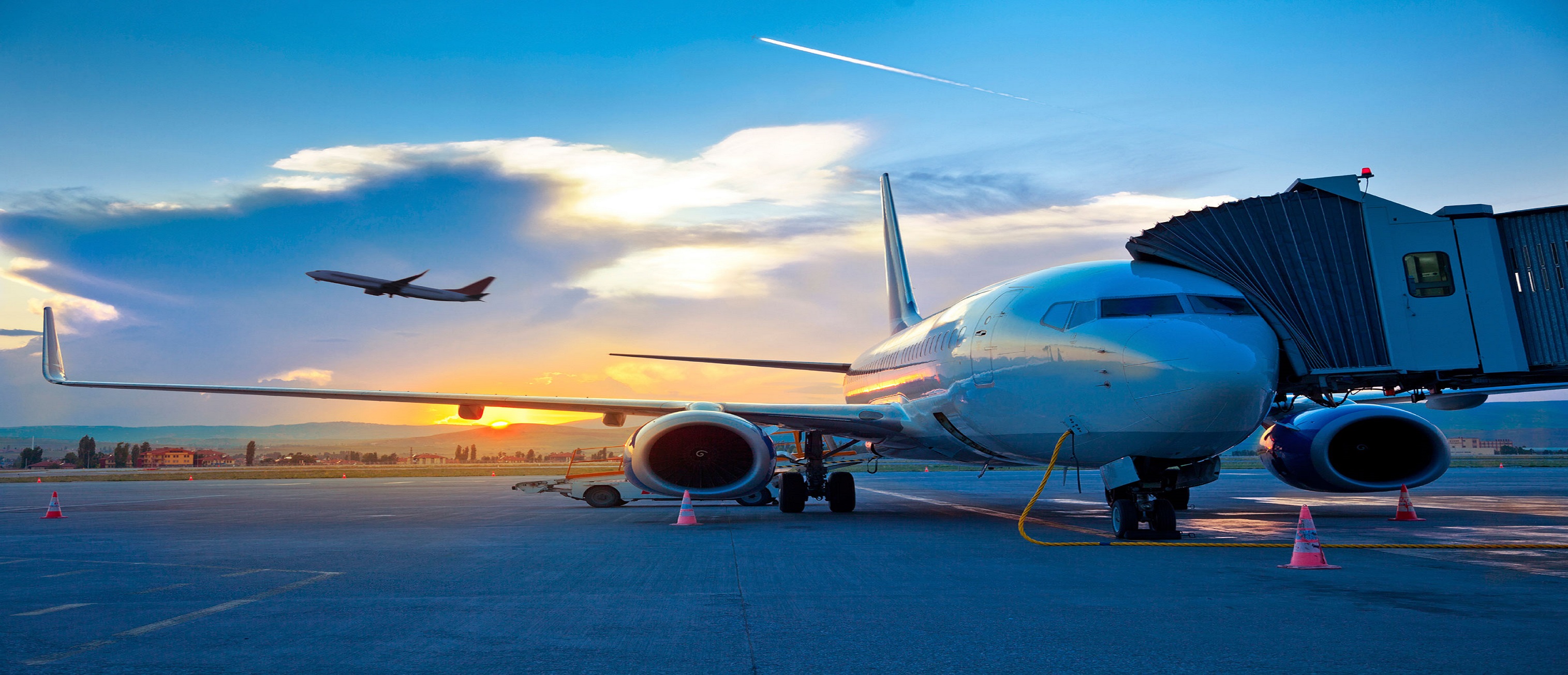FROM
Origin City
Aalborg,Denmark,AAL Aalesund,Norway,AES Aarhus,Denmark,AAR Aasiaat,Greenland,JEG Abadan,Iran,ABD Abaiang,Kiribati,ABF Abakan,Russian Federation,ABA Abbotsford,Canada,YXX Abecher,Chad,AEH Abemama Atoll,Kiribati,AEA Abengourou,Ivory Coast,OGO Aberdeen,United Kingdom,ABZ Aberdeen,United States,ABR Abha,Saudi Arabia,AHB Abidjan,Ivory Coast,ABJ Abilene,United States,ABI Abou Deia,Chad,AOD Abu Dhabi,United Arab Emirates,AUH Abu Dhabi,United Arab Emirates,ZVJ Abu Simbel,Egypt,ABS Abuja,Nigeria,ABV Acandi,Colombia,ACD Acapulco,Mexico,ACA Acarigua,Venezuela,AGV Accra,Ghana,ACC Adak Island,United States,ADK Adana,Turkey,ADA Addis Ababa,Ethiopia,ADD Adelaide,Australia,ADL Aden,Yemen,ADE Adler Sochi,Russian Federation,AER Adrar,Algeria,AZR Aek Godang,Indonesia,AEG Agades,Niger,AJY Agadir,Morocco,AGA Agartala,India,IXA Agatti Island,India,AGX Agaun,Papua New Guinea,AUP Agen,France,AGF Aggeneys,South Africa,AGZ Agra,India,AGR Aguadilla,Puerto Rico,BQN Aguascalientes,Mexico,AGU Aguni,Japan,AGJ Ahmedabad,India,AMD Ahwaz,Iran,AWZ Ailuk Island,Marshall Islands,AIM Aioun El Atrouss,Mauritania,AEO Airlie Beach,Australia,WSY Airok,Marshall Islands,AIC Aitutaki,Cook Islands,AIT Aizawl,India,AJL Ajaccio,France,AJA Akita,Japan,AXT Akjoujt,Mauritania,AJJ Aklavik,Canada,LAK Akola,India,AKD Akron Canton,United States,CAK Aktau,Kazakhstan,SCO Aktyubinsk,Kazakhstan,AKX Akure,Nigeria,AKR Akureyri,Iceland,AEY Akutan,United States,KQA Al Ain,United Arab Emirates,AAN Al Baha,Saudi Arabia,ABT Al Fujairah,United Arab Emirates,FJR Al Ghaydah,Yemen,AAY Al Hoceima,Morocco,AHU Alakanuk,United States,AUK Alamogordo,United States,ALM Alamosa,United States,ALS Albany,United States,ABY Albany,United States,ALB Albenga,Italy,ALL Albi,France,LBI Albuq,Yemen,BUK Albuquerque,United States,ABQ Albury,Australia,ABX Alderney,United Kingdom,ACI Aleknagik,United States,WKK Aleppo,Syrian Arab Republic,ALP Alert Bay,Canada,YAL Alexandra,New Zealand,ALR Alexandria,Egypt,HBE Alexandria,Egypt,ALY Alexandria,United States,ESF Alexandroupolis,Greece,AXD Alghero,Italy,AHO Algiers,Algeria,ALG Alicante,Spain,ALC Alice Springs,Australia,ASP Allahabad,India,IXD Allentown,United States,ABE Alliance,United States,AIA Alma,Canada,YTF Almaty,Kazakhstan,ALA Almeria,Spain,LEI Alor Island,Indonesia,ARD Alor Setar,Malaysia,AOR Alotau,Papua New Guinea,GUR Alpena,United States,APN Alta,Norway,ALF Altamira,Brazil,ATM Altenrhein,Switzerland,ACH Alto Rio Senguerr,Argentina,ARR Altoona,United States,AOO Alula,Somalia,ALU Am Timan,Chad,AMC Amami O Shima,Japan,ASJ Amanab,Papua New Guinea,AMU Amarillo,United States,AMA Amazon Bay,Papua New Guinea,AZB Ambanja,Madagascar,IVA Ambatomainty,Madagascar,AMY Ambilobe,Madagascar,AMB Ambler,United States,ABL Ambon,Indonesia,AMQ Amboseli,Kenya,ASV Ambriz,Angola,AZZ Ambunti,Papua New Guinea,AUJ American River,Australia,RCN Amman,Jordan,ADJ Amman,Jordan,AMM Amook,United States,AOS Ampanihy,Madagascar,AMP Amritsar,India,ATQ Amsterdam,Netherlands,AMS Anaa,French Polynesia,AAA Anaco,Venezuela,AAO Anacortes,United States,OTS Anahim Lake,Canada,YAA Analalava,Madagascar,HVA Anapa,Russian Federation,AAQ Anchorage,United States,MRI Anchorage,United States,ANC Ancona,Italy,AOI Andahuaylas,Peru,ANS Andapa,Madagascar,ZWA Andenes,Norway,ANX Andros Town,Bahamas,ASD Anegada,British Virgin Islands,NGD Aneityum,Vanuatu,AUY Angeles City,Philippines,CRK Angoche,Mozambique,ANO Angouleme,France,ANG Anguilla,Anguilla,AXA Aniak,United States,ANI Aniwa,Vanuatu,AWD Anjouan,Comoros,AJN Ankara,Turkey,ESB Ankavandra,Madagascar,JVA Annaba,Algeria,AAE Annecy,France,NCY Anniston,United States,ANB Antalaha,Madagascar,ANM Antalya,Turkey,AYT Antananarivo,Madagascar,TNR Antigua,Antigua & Barbuda,ANU Antofagasta,Chile,ANF Antsalova,Madagascar,WAQ Antsirabe,Madagascar,ATJ Antsiranana,Madagascar,DIE Antsohihy,Madagascar,WAI Antwerp,Belgium,ANR Anvik,United States,ANV Aomori,Japan,AOJ Apartado,Colombia,APO Apataki,French Polynesia,APK Apia,Samoa,APW Appleton,United States,ATW Aracaju,Brazil,AJU Aractuba,Brazil,ARU Arad,Romania,ARW Aragip,Papua New Guinea,ARP Araguaina,Brazil,AUX Arandis,Namibia,ADI Arapiraca,Brazil,APQ Arar,Saudi Arabia,RAE Araracuara,Colombia,ACR Arauca,Colombia,AUC Arba Mintch,Ethiopia,AMH Arcata,United States,ACV Arctic Bay,Canada,YAB Arctic Village,United States,ARC Arequipa,Peru,AQP Arica,Chile,ARI Arkhangelsk,Russian Federation,ARH Armenia,Colombia,AXM Armidale,Australia,ARM Arorae Island,Kiribati,AIS Arthur's Town,Bahamas,ATC Artigas,Uruguay,ATI Arua,Uganda,RUA Aruba,Aruba,AUA Arutua,French Polynesia,AXR Arvidsjaur,Sweden,AJR Asahikawa,Japan,AKJ Asapa,Papua New Guinea,APP Asheville,United States,AVL Ashgabad,Turkmenistan,ASB Ashland,United States,HTS Asmara,Eritrea,ASM Asosa,Ethiopia,ASO Aspen,United States,ASE Assab,Eritrea,ASA Assiut,Egypt,ATZ Astana,Kazakhstan,TSE Astrakhan,Russian Federation,ASF Asuncion,Paraguay,ASU Aswan,Egypt,ASW Atambua,Indonesia,ABU Ataq,Yemen,AXK Atar,Mauritania,ATR Atbara,Sudan,ATB Athens,Greece,ATH Ati,Chad,ATV Atikokan,Canada,YIB Atiu Island,Cook Islands,AIU Atlanta,United States,ATL Atlantic Cty,United States,AIY Atlantic Cty,United States,ACY Atmautluak,United States,ATT Atqasuk,United States,ATK Attawapiskat,Canada,YAT Atuona,French Polynesia,AUQ Atyrau,Kazakhstan,GUW Auckland,New Zealand,AKL Augusta,United States,DNL Augusta,United States,AUG Augusta,United States,AGS Aupauluk,Canada,YPJ Aurangabad,India,IXU Aurillac,France,AUR Aurukun Mission,Australia,AUU Austin,United States,AUS Avignon,France,AVN Avu Avu,Solomon Islands,AVU Awaba,Papua New Guinea,AWB Awareh,Ethiopia,AWH Awassa,Ethiopia,AWA Axum,Ethiopia,AXU Ayacucho,Peru,AYP Ayawasi,Indonesia,AYW Ayers Rock,Australia,AYQ Babo,Indonesia,BXB Bacolod,Philippines,BCD Bade,Indonesia,BXD Badu Island,Australia,BDD Bafoussam,Cameroon,BFX Bagdogra,India,IXB Baghdad,Iraq,SDA Baghdad,Iraq,BGW Bagotville,Canada,YBG Baguio,Philippines,BAG Bahar Dar,Ethiopia,BJR Bahia Blanca,Argentina,BHI Bahia De Caraquez,Ecuador,BHA Bahia Solano,Colombia,BSC Bahrain,Bahrain,BAH Baia Mare,Romania,BAY Baie Comeau,Canada,YBC Baie Johan Beetz,Canada,YBJ Baimuru,Papua New Guinea,VMU Bairnsdale,Australia,BSJ Bajawa,Indonesia,BJW Bakalalan,Malaysia,BKM Bakel,Senegal,BXE Bakersfield,United States,BFL Bakhtaran,Iran,KSH Bakkafjordur,Iceland,BJD Bakouma,Central African Republic,BMF Baku,Azerbaijan,GYD Balalae,Solomon Islands,BAS Bali,Cameroon,BLC Bali,Indonesia,DPS Balikpapan,Indonesia,BPN Balimo,Papua New Guinea,OPU Ballina,Australia,BNK Bamaga,Australia,ABM Bamako,Mali,BKO Bambari,Central African Republic,BBY Bamburi,Kenya,BMQ Bamenda,Cameroon,BPC Banda Aceh,Indonesia,BTJ Bandar Abbas,Iran,BND Bandar Lampung,Indonesia,TKG Bandar Lengeh,Iran,BDH Bandar Seri Begawan,Brunei Darussalam,BWN Bandundu,Congo (Rep. Dem.),FDU Bandung,Indonesia,BDO Banfora,Burkina Faso,BNR Bangalore,India,BLR Bangassou,Central African Republic,BGU Bangkok,Thailand,DMK Bangkok,Thailand,BKK Bangor,United States,BGR Bangui,Central African Republic,BGF Baniyala,Australia,BYX Banjarmasin,Indonesia,BDJ Banjul,Gambia,BJL Baotou,China,BAV Bar Harbour,United States,BHB Baracoa,Cuba,BCA Barbuda,Antigua & Barbuda,BBQ Barcelona,Venezuela,BLA Barcelona,Spain,BCN Bardufoss,Norway,BDU Bari,Italy,BRI Bariloche,Argentina,BRC Barinas,Venezuela,BNS Bario,Malaysia,BBN Barnaul,Russian Federation,BAX Barquisimeto,Venezuela,BRM Barra,United Kingdom,BRR Barra Do Garcas,Brazil,BPG Barrancabermeja,Colombia,EJA Barrancominas,Colombia,NBB Barranquilla,Colombia,BAQ Barreiras,Brazil,BRA Barrow,United States,BRW Barter Island,United States,BTI Basankusu,Congo (Rep. Dem.),BSU Basel Euroairport,Switzerland,BSL Basel Euroairport,Switzerland,MLH Basra,Iraq,BSR Bastia,France,BIA Bata,Equatorial Guinea,BSG Batangafo,Central African Republic,BTG Bathurst,Australia,BHS Bathurst,Canada,ZBF Bathurst Island,Australia,BRT Batom,Indonesia,BXM Baton Rouge,United States,BTR Batouri,Cameroon,OUR Batsfjord,Norway,BJF Battle Creek,United States,BTL Batu Besar,Indonesia,BTH Batumi,Georgia,BUS Baubau,Indonesia,BUW Bauchi,Nigeria,BCU Bauru,Brazil,BAU Bayamo,Cuba,BYM Bayreuth,Germany,BYU Bealanana,Madagascar,WBE Bearskin Lake,Canada,XBE Beaumont,United States,BPT Beaver,United States,WBQ Bechar,Algeria,CBH Beckley,United States,BKW Beef Island,British Virgin Islands,EIS Befandriana,Madagascar,WBD Beica,Ethiopia,BEI Beida,Libyan Arab Jamahiriya,LAQ Beihai,China,BHY Beihan,Yemen,BHN Beijing,China,PEK Beira,Mozambique,BEW Beirut,Lebanon,BEY Bejaia,Algeria,BJA Bekily,Madagascar,OVA Belaga,Malaysia,BLG Belem,Brazil,BEL Belep Island,New Caledonia,BMY Belfast,United Kingdom,BFS Belfast,United Kingdom,BHD Belfort,France,BOR Belgaum,India,IXG Belgrade,Yugoslavia,BEG Belize City,Belize,BZE Bella Coola,Canada,QBC Bellary,India,BEP Bellingham,United States,BLI Bellona,Solomon Islands,BNY Belmonte,Brazil,BVM Belo,Madagascar,BMD Belo Horizonte,Brazil,CNF Belo Horizonte,Brazil,PLU Bemidji,United States,BJI Benbecula,United Kingdom,BEB Benghazi,Libyan Arab Jamahiriya,BEN Bengkulu,Indonesia,BKS Benguela,Angola,BUG Beni,Congo (Rep. Dem.),BNC Benin City,Nigeria,BNI Bensbach,Papua New Guinea,BSP Berau,Indonesia,BEJ Berbera,Somalia,BBO Berberati,Central African Republic,BBT Bereby,Ivory Coast,BBV Berens River,Canada,YBV Bergen,Norway,BGO Bergen Op Zoom,Netherlands,BZM Bergerac,France,EGC Berlevag,Norway,BVG Berlin,Germany,SXF Berlin,Germany,THF Berlin,Germany,BER Berlin,Germany,TXL Bermejo,Bolivia,BJO Bermuda,Bermuda,BDA Berne,Switzerland,BRN Beroroha,Madagascar,WBO Bertoua,Cameroon,BTA Beru,Kiribati,BEZ Besakoa,Madagascar,BSV Besalampy,Madagascar,BPY Bethel,United States,BET Betioky,Madagascar,BKU Betou,Congo,BTB Bettles,United States,BTT Beziers,France,BZR Bhairawa,Nepal,BWA Bhamo,Myanmar,BMO Bhatinda,India,BUP Bhavnagar,India,BHU Bhojpur,Nepal,BHP Bhopal,India,BHO Bhubaneshwar,India,BBI Bhuj,India,BHJ Bhurban,Pakistan,BHC Biak,Indonesia,BIK Bialla,Papua New Guinea,BAA Biarritz,France,BIQ Bickerton Island,Australia,BCZ Big Creek,Belize,BGK Big Trout,Canada,YTL Bikaner,India,BKB Bikini Atoll,Marshall Islands,BII Bilaspur,India,PAB Bilbao,Spain,BIO Billings,United States,BIL Billund,Denmark,BLL Bima,Indonesia,BMU Bimini,Bahamas,BIM Bimini,Bahamas,NSB Binghamton,United States,BGM Biniguni,Papua New Guinea,XBN Bintulu,Malaysia,BTU Bintuni,Indonesia,NTI Birao,Central African Republic,IRO Biratnagar,Nepal,BIR Birch Creek,United States,KBC Bird Island,Seychelles,BDI Birdsville,Australia,BVI Birmingham,United States,BHM Birmingham,United Kingdom,BHX Birni Nkoni,Niger,BKN Bisha,Saudi Arabia,BHH Bishkek,Kyrgyzstan,FRU Bisho,South Africa,BIY Bishop,United States,BIH Biskra,Algeria,BSK Bismarck,United States,BIS Bitam,Gabon,BMM Black Tickle,Canada,YBI Blackall,Australia,BKQ Blackbush,United Kingdom,BBS Blackpool,United Kingdom,BLK Blackwater,Australia,BLT Blanc Sablon,Canada,YBX Blantyre,Malawi,BLZ Blenheim,New Zealand,BHE Block Island,United States,BID Bloemfontein,South Africa,BFN Bloomington,United States,BMG Bloomington Normal,United States,BMI Bluefield,United States,BLF Bluefields,Nicaragua,BEF Boa Vista,Brazil,BVB Boa Vista,Cape Verde,BVC Bobo Dioulasso,Burkina Faso,BOY Boca Raton,United States,BCT Bocas Del Toro,Panama,BOC Bodo,Norway,BOO Bodrum,Turkey,BJV Boende,Congo (Rep. Dem.),BNB Boghe,Mauritania,BGH Bogota,Colombia,BOG Boigu Island,Australia,GIC Boise,United States,BOI Boke,Guinea,BKJ Bokondini,Indonesia,BUI Bokoro,Chad,BKR Bol,Chad,OTC Bologna,Italy,BLQ Bom Jesus Da Lapa,Brazil,LAZ Boma,Congo (Rep. Dem.),BOA Bonaire,Netherlands Antilles,BON Bonaventure,Canada,YVB Bondoukou,Ivory Coast,BDK Bongor,Chad,OGR Bonthe,Sierra Leone,BTE Booue,Gabon,BGB Bora Bora,French Polynesia,BOB Bordeaux,France,BOD Bordj Badji Mokht,Algeria,BMW Borgarfjordur Eystri,Iceland,BGJ Borkum,Germany,BMK Borlange,Sweden,BLE Bornholm,Denmark,RNN Borroloola,Australia,BOX Bossangoa,Central African Republic,BSN Bossaso,Somalia,BSA Bossembele,Central African Republic,BEM Bost,Afghanistan,BST Boston,United States,BOS Bouake,Ivory Coast,BYK Bouar,Central African Republic,BOP Bouca,Central African Republic,BCF Bouna,Ivory Coast,BQO Boundiali,Ivory Coast,BXI Boundji,Congo,BOE Bourgas,Bulgaria,BOJ Bournemouth,United Kingdom,BOH Bousso,Chad,OUT Boutilimit,Mauritania,OTL Boxborough,United States,BXC Bozeman,United States,BZN Bozoum,Central African Republic,BOZ Bradford,United States,BFD Braganca,Portugal,BGC Brainerd,United States,BRD Brampton Island,Australia,BMP Brandon,Canada,YBR Brasilia,Brazil,BSB Bratislava,Slovakia,BTS Bratsk,Russian Federation,BTK Braunschweig,Germany,BWE Brazzaville,Congo,BZV Breiddalsvik,Iceland,BXV Bremen,Germany,BRE Bremerhaven,Germany,BRV Brest,Belarus (Belorussia),BQT Brest,France,BES Bria,Central African Republic,BIV Bridgeport,United States,BDR Bridgetown,Barbados,BGI Brindisi,Italy,BDS Brisbane,Australia,BNE Bristol,United Kingdom,BRS Bristol,United States,TRI Brive La Gaillard,France,BVE Brno,Czech Republic,BRQ Brochet,Canada,YBT Broken Hill,Australia,BHQ Bronnoysund,Norway,BNN Bronson Creek,Canada,YBM Brookings,United States,BKX Broome,Australia,BME Broughton Island,Canada,YVM Brownsville,United States,BRO Brownwood,United States,BWD Brunswick,United States,BQK Brus Laguna,Honduras,BHG Brussels,Belgium,CRL Brussels,Belgium,BRU Bryce,United States,BCE Bucaramanga,Colombia,BGA Buchanan,Liberia,UCN Bucharest,Romania,OTP Bucharest,Romania,BBU Buckland,United States,BKC Budapest,Hungary,BUD Buenaventura,Colombia,BUN Buenos Aires,Argentina,AEP Buenos Aires,Costa Rica,BAI Buenos Aires,Argentina,EZE Buffalo,United States,BUF Buffalo Narrows,Canada,YVT Buffalo Range,Zimbabwe,BFO Bujumbura,Burundi,BJM Buka,Papua New Guinea,BUA Bukavu,Congo (Rep. Dem.),BKY Bukhara,Uzbekistan,BHK Bukoba,Tanzania,BKZ Bulawayo,Zimbabwe,BUQ Bulchi,Ethiopia,BCY Bulolo,Papua New Guinea,BUL Bumba,Congo (Rep. Dem.),BMB Bundaberg,Australia,BDB Bunia,Congo (Rep. Dem.),BUX Buno Bedelle,Ethiopia,XBL Buol,Indonesia,UOL Burao,Somalia,BUO Burbank,United States,BUR Bureta,Fiji Islands,LEV Burg Feuerstein,Germany,URD Burketown,Australia,BUC Burlington,United States,BBF Burlington,United States,BRL Burlington,United States,BTV Burnie,Australia,BWT Bursa,Turkey,BTZ Bushehr,Iran,BUZ Butaritari,Kiribati,BBG Butte,United States,BTM Butuan,Philippines,BXU Bydgoszcz,Poland,BZG Cabinda,Angola,CAB Caen,France,CFR Cagayan De Oro,Philippines,CGY Cagliari,Italy,CAG Caicara De Oro,Venezuela,CXA Cairns,Australia,CNS Cairo,Egypt,CAI Cajamarca,Peru,CJA Calabar,Nigeria,CBQ Calama,Chile,CJC Calexico,United States,CXL Calgary,Canada,YYC Cali,Colombia,CLO Calicut,India,CCJ Calvi,France,CLY Camaguey,Cuba,CMW Cambridge,United Kingdom,CBG Cambridge Bay,Canada,YCB Camiri,Bolivia,CAM Camp Douglas,United States,VOK Campbell River,Canada,YBL Campbeltown,United Kingdom,CAL Campeche,Mexico,CPE Campina Grande,Brazil,CPV Campinas,Brazil,CPQ Campo Grande,Brazil,CGR Campos,Brazil,CAW Canaima,Venezuela,CAJ Canberra,Australia,CBR Cancun,Mexico,CUN Candilejas,Colombia,CJD Canouan Island,St. Vincent & the Grenadines,CIW Cap Haitien,Haiti,CAP Cap Skirring,Senegal,CSK Cape Dorset,Canada,YTE Cape Girardeau,United States,CGI Cape Palmas,Liberia,CPA Cape Rodney,Papua New Guinea,CPN Cape Town,South Africa,CPT Cape Vogel,Papua New Guinea,CVL Capurgana,Colombia,CPB Caquetania,Colombia,CQT Car Nicobar,India,CBD Caracas,Venezuela,CCS Carajas,Brazil,CKS Caransebes,Romania,CSB Caravelas,Brazil,CRQ Carcassonne,France,CCF Cardiff,United Kingdom,CWL Carimagua,Colombia,CCO Carlisle,United Kingdom,CAX Carlsbad,United States,CNM Carlsbad,United States,CLD Carnarvon,Australia,CVQ Carnot,Central African Republic,CRF Carriacou Island,Grenada,CRU Carson City,United States,CSN Cartagena,Colombia,CTG Cartierville,Canada,YCV Cartwright,Canada,YRF Carupano,Venezuela,CUP Casablanca,Morocco,CMN Cascavel,Brazil,CAC Casper,United States,CPR Castaway,Fiji Islands,CST Castlegar,Canada,YCG Cat Lake,Canada,YAC Catalina Island,United States,AVX Catalina Island,United States,CIB Catamarca,Argentina,CTC Catania,Italy,CTA Catumbela,Angola,CBT Caucasia,Colombia,CAQ Caxias Do Sul,Brazil,CXJ Caye Chapel,Belize,CYC Cayenne,French Guiana,CAY Cayman Brac Island,Cayman Islands,CYB Cazombo,Angola,CAV Cdro Rivadavia,Argentina,CRD Cebu,Philippines,CEB Cedar City,United States,CDC Cedrrap Iowacty,United States,CID Ceduna,Australia,CED Cessnock,Australia,CES Chachapoyas,Peru,CHH Chadron,United States,CDR Chah Bahar,Iran,ZBR Chakcharan,Afghanistan,CCN Chalkyitsik,United States,CIK Chambery,France,CMF Champaign,United States,CMI Chandigarh,India,IXC Chandler,United States,SLJ Changchun,China,CGQ Changsha,China,CSX Changuinola,Panama,CHX Changzhi,China,CIH Changzhou,China,CZX Chania,Greece,CHQ Chapeco,Brazil,XAP Chapleau,Canada,YLD Charleston,United States,CRW Charleville,Australia,CTL Charlo,Canada,YCL Charlotte,United States,CLT Charlottesville,United States,CHO Charlottetown,Canada,YYG Charters Towers,Australia,CXT Chateauroux,France,CHR Chattanooga,United States,CHA Cheju,South Korea,CJU Chelyabinsk,Russian Federation,CEK Chengdu,China,CTU Chennai,India,MAA Cherbourg,France,CER Cherokee,United States,CKK Chesterfield Inle,Canada,YCS Chetumal,Mexico,CTM Chetwynd,Canada,YCQ Chevak,United States,VAK Chevery,Canada,YHR Cheyenne,United States,CYS Chi Mei,Taiwan,CMJ Chiang Mai,Thailand,CNX Chiang Rai,Thailand,CEI Chibougamau,Canada,YMT Chicago,United States,ORD Chicago,United States,MDW Chiclayo,Peru,CIX Chico,United States,CIC Chicopee,United States,CEF chief,United States,CFK Chifeng,China,CIF Chignik,United States,KCQ Chignik,United States,KCG Chignik,United States,KCL Chigorodo,Colombia,IGO Chihuahua,Mexico,CUU Chimbote,Peru,CHM Chimkent,Kazakhstan,CIT Chinju,South Korea,HIN Chino,United States,CNO Chios,Greece,JKH Chipata,Zambia,CIP Chisasibi,Canada,YKU Chisinau,Moldova,KIV Chita,Russian Federation,HTA Chitato,Angola,PGI Chittagong,Bangladesh,CGP Choiseul Bay,Solomon Islands,CHY Chongqing,China,CKG Christchurch,New Zealand,CHC Christianshaab,Greenland,JCH Christmas Island,Kiribati,CXI Chuathbaluk,United States,CHU Chub Cay,Bahamas,CCZ Churchill,Canada,YYQ Churchill Falls,Canada,ZUM Cicia,Fiji Islands,ICI Ciego De Avila,Cuba,AVI Cilacap,Indonesia,CXP Cimitarra,Colombia,CIM Cincinnati,United States,CVG Circle,United States,IRC Cirebon,Indonesia,CBN Ciudad Bolivar,Venezuela,CBL Ciudad Del Carmen,Mexico,CME Ciudad Juarez,Mexico,CJS Ciudad Obregon,Mexico,CEN Ciudad Victoria,Mexico,CVM Clarks Point,United States,CLP Clarksburg,United States,CKB Clermont,Australia,CMQ Clermont Ferrand,France,CFE Cleveland,United States,CLE Cleveland,United States,BKL Cleveland,United States,CGF Cloncurry,Australia,CNJ Clovis,United States,CVN Cluj,Romania,CLJ Clyde River,Canada,YCY Cobija,Bolivia,CIJ Coca,Ecuador,OCC Cochabamba,Bolivia,CBB Cochrane,Canada,YCN Cochstedt,Germany,CSO Coconut Island,Australia,CNC Cody,United States,COD Coen,Australia,CUQ Coeur D'Alene,United States,COE Coffs Harbour,Australia,CFS Coimbatore,India,CJB Cold Bay,United States,CDB Colima,Mexico,CLQ College Park,United States,CGS College Station,United States,CLL Colmar,France,CMR Cologne,Germany,CGN Colombo,Sri Lanka,CMB Colon,Panama,ONX Colonia,Uruguay,CYR Colonia Catriel,Argentina,CCT Colorado Springs,United States,COS Columbia,United States,COU Columbia,United States,CAE Columbus,United States,CSG Columbus,United States,GTR Columbus,United States,OSU Columbus,United States,LCK Columbus,United States,CMH Colville Lake,Canada,YCK Comox,Canada,YQQ Compton,United States,CPM Conakry,Guinea,CKY Conceicao Do Arag,Brazil,CDJ Concepcion,Chile,CCP Concord,United States,CON Concord,United States,CCR Concordia,Argentina,COC Condobolin,Australia,CBX Condoto,Colombia,COG Confreza,Brazil,CFO Constanta,Romania,CND Constantine,Algeria,CZL Contadora,Panama,OTD Coober Pedy,Australia,CPD Cooch Behar,India,COH Cooktown,Australia,CTN Cooma,Australia,OOM Coonabarabran,Australia,COJ Copenhagen,Denmark,RKE Copenhagen,Denmark,CPH Copiapo,Chile,CPO Coppermine,Canada,YCO Coral Harbour,Canada,YZS Cordoba,Argentina,COR Cordova,United States,CDV Cork,Ireland,ORK Coro,Venezuela,CZE Corozal,Colombia,CZU Corozal,Belize,CZH Corpus Christi,United States,CRP Corrientes,Argentina,CNQ Corryong,Australia,CYG Cortez,United States,CEZ Corumba,Brazil,CMG Cotabato,Philippines,CBO Coto 47,Costa Rica,OTR Cotonou,Benin,COO Council,United States,CIL Courchevel,France,CVF Cowra,Australia,CWT Cox's Bazar,Bangladesh,CXB Coyhaique,Chile,GXQ Cozumel,Mexico,CZM Craig Cove,Vanuatu,CCV Cranbrook,Canada,YXC Cravo Norte,Colombia,RAV Crescent City,United States,CEC Crisciuma,Brazil,CCM Crooked Creek,United States,CKD Crooked Island,Bahamas,CRI Cross Lake,Canada,YCR Crotone,Italy,CRV Cruzeiro Do Sul,Brazil,CZS Cuamba,Mozambique,FXO Cucuta,Colombia,CUC Cuddapah,India,CDP Cue,Australia,CUY Cuenca,Ecuador,CUE Cuiaba,Brazil,CGB Culebra,Puerto Rico,CPX Culiacan,Mexico,CUL Culver City,United States,CVR Cumana,Venezuela,CUM Cumberland,United States,CBE Cuneo,Italy,CUF Curacao,Netherlands Antilles,CUR Curitiba,Brazil,CWB Cutral,Argentina,CUT Cuzco,Peru,CUZ Da Nang,Vietnam,DAD Dakar,Senegal,DKR Dakhla,Morocco,VIL Dalaman,Turkey,DLM Dalat,Vietnam,DLI Dalhart,United States,DHT Dalian,China,DLC Dallas,United States,DFW Dallas,United States,DAL Daloa,Ivory Coast,DJO Daman,India,NMB Damascus,Syrian Arab Republic,DAM Dammam,Saudi Arabia,DMS Dammam,Saudi Arabia,DMM Dangriga,Belize,DGA Danville,United States,DAN Dar Es Salaam,Tanzania,DAR Darnley Island,Australia,NLF Daru,Papua New Guinea,DAU Darwin,Australia,DRW Datadawai,Indonesia,DTD Dauphin,Canada,YDN Davao,Philippines,DVO David,Panama,DAV Davis Inlet,Canada,YDI Dawson City,Canada,YDA Dawson Creek,Canada,YDQ Daydream Is,Australia,DDI Dayton,United States,MGY Dayton,United States,DAY Daytona Beach,United States,DAB Deadmans Cay,Bahamas,LGI Dean River,Canada,YRD Dease Lake,Canada,YDL Deauville,France,DOL Debepare,Papua New Guinea,DBP Debra Marcos,Ethiopia,DBM Debra Tabor,Ethiopia,DBT Debrecen,Hungary,DEB Decatur,United States,DEC Decorah,United States,DEH Dedougou,Burkina Faso,DGU Deer Lake,Canada,YVZ Deer Lake,Canada,YDF Deering,United States,DRG Dehra Dun,India,DED Deirezzor,Syrian Arab Republic,DEZ Delhi,India,DEL Delta Downs,Australia,DDN Delta Junction,United States,DJN Dembidollo,Ethiopia,DEM Deniliquin,Australia,DNQ Denis Island,Seychelles,DEI Denizli,Turkey,DNZ Denpasar Bali,Indonesia,DPS Denver,United States,DEN Derim,Papua New Guinea,DER Des Moines,United States,DSM Desroches,Seychelles,DES Dessie,Ethiopia,DSE Detroit,United States,DTW Detroit,United States,YIP Detroit,United States,DET Devonport,Australia,DPO Dhahran,Saudi Arabia,DHA Dhaka,Bangladesh,DAC Dhanbad,India,DBD Dharamsala,India,DHM Dibaa,Oman,BYB Dibrugarh,India,DIB Dijon,France,DIJ Dili,Indonesia,DIL Dillingham,United States,DLG Dillons Bay,Vanuatu,DLY Dimapur,India,DMU Dimbokro,Ivory Coast,DIM Dinard,France,DNR Diomede Island,United States,DIO Dire Dawa,Ethiopia,DIR Diu,India,DIU Diyarbakir,Turkey,DIY Djambala,Congo,DJM Djanet,Algeria,DJG Djerba,Tunisia,DJE Djibouti,Djibouti,JIB Dnepropetrovsk,Ukraine,DNK Doany,Madagascar,DOA Dodge City,United States,DDC Dodoima,Papua New Guinea,DDM Dodoma,Tanzania,DOD Doha,Qatar,DOH Dolbeau,Canada,YDO Dole,France,DLE Dolomi,United States,DLO Dominica,Dominicana,DOM Dominica,Dominicana,DCF Doncaster/Shaffield,United Kingdom,DSA Donegal,Ireland,CFN Donetsk,Ukraine,DOK Dongola,Sudan,DOG Doomadgee,Australia,DMD Dora Bay,United States,DOF Dori,Burkina Faso,DOR Dortmund,Germany,DTM Dothan,United States,DHN Douala,Cameroon,DLA Dourados,Brazil,DOU Dresden,Germany,DRS Dryden,Canada,YHD Dschang,Cameroon,DSC Dubai,United Arab Emirates,DWC Dubai,United Arab Emirates,ZXZ Dubai,United Arab Emirates,DXB Dubai,United Arab Emirates,XNB Dubbo,Australia,DBO Dublin,Ireland,DUB Dubois,United States,DUJ Dubrovnik,Croatia,DBV Dubuque,United States,DBQ Duluth,United States,DLH Dumaguete,Philippines,DGT Dumai,Indonesia,DUM Dundee,United Kingdom,DND Dundo,Angola,DUE Dunedin,New Zealand,DUD Dunhuang,China,DNH Dunk Island,Australia,DKI Durango,Mexico,DGO Durango,United States,DRO Durban,South Africa,VIR Durban,South Africa,DUR Durgapur,India,RDP Dushanbe,Tajikistan,DYU Dusseldorf,Germany,DUS Dusseldorf,Germany,NRN Dwangwa,Malawi,DWA Dysart,Australia,DYA Dzaoudzi,Mayotte,DZA Eagle,United States,EAA Eagle River,United States,EGV Earlton,Canada,YXR East Hampton,United States,HTO East London,South Africa,ELS Easter Island,Chile,IPC Eastsound,United States,ESD Eau Claire,United States,EAU Ebolowa,Cameroon,EBW Eday,United Kingdom,EOI Edinburgh,United Kingdom,EDI Edmonton,Canada,YXD Edmonton,Canada,YEG Edna Bay,United States,EDA Edward River,Australia,EDR Eek,United States,EEK Egegik,United States,EGX Egilsstadir,Iceland,EGS Eia,Papua New Guinea,EIA Eindhoven,Netherlands,EIN Eirunepe,Brazil,ERN Ekaterinburg,Russian Federation,SVX Ekuk,United States,KKU Ekwok,United States,KEK El Bagre,Colombia,EBG El Banco,Colombia,ELB El Bolson,Argentina,EHL El Centro,United States,IPL El Fasher,Sudan,ELF El Golea,Algeria,ELG El Maiten,Argentina,EMX El Obeid,Sudan,EBD El Oued,Algeria,ELU El Paso,United States,ELP El Recreo,Colombia,ELJ El Salvador,Chile,ESR El Yopal,Colombia,EYP Elat,Israel,ETH Elazig,Turkey,EZS Elcho Island,Australia,ELC Eldebba,Sudan,EDB Eldoret,Kenya,EDL Elim,United States,ELI Elizabeth City,United States,ECG Elkins,United States,EKN Elko,United States,EKO Elliot Lake,Canada,YEL Ellisras,South Africa,ELL Elmira,United States,ELM Ely,United States,ELY Emae,Vanuatu,EAE Embessa,Papua New Guinea,EMS Emden,Germany,EME Emerald,Australia,EMD Emmonak,United States,EMK Emo,Papua New Guinea,EMO Enarotali,Indonesia,EWI Ende,Indonesia,ENE Enewetak Island,Marshall Islands,ENT Enfidha,Tunisia,NBE Enid,United States,WDG Enontekio,Finland,ENF Enschede,Netherlands,ENS Entebbe,Uganda,EBB Enugu,Nigeria,ENU Epinal,France,EPL Erbil,Iraq,EBL Ercan,Cyprus,ECN Erfurt,Germany,ERF Erie,United States,ERI Errachidia,Morocco,ERH Erzurum,Turkey,ERZ Esa'ala,Papua New Guinea,ESA Esbjerg,Denmark,EBJ Escanaba,United States,ESC Eskimo Point,Canada,YEK Esmeraldas,Ecuador,ESM Esperance,Australia,EPR Espiritu Santo,Vanuatu,SON Esquel,Argentina,EQS Essen,Germany,ESS Eua,Tonga,EUA Eugene,United States,EUG Evansville,United States,EVV Everett,United States,PAE Ewo,Congo,EWO Exeter,United Kingdom,EXT Fada Ngourma,Burkina Faso,FNG Fagernes,Norway,VDB Fair Isle,United Kingdom,FIE Fairbanks,United States,FAI Fairmont,United States,FRM Faisalabad,Pakistan,LYP Faizabad,Afghanistan,FBD Fajardo,Puerto Rico,FAJ Fak Fak,Indonesia,FKQ Fakahina,French Polynesia,FHZ Fakarava,French Polynesia,FAV False Pass,United States,KFP Fangatau,French Polynesia,FGU Farafangana,Madagascar,RVA Farah,Afghanistan,FAH Faranah,Guinea,FAA Fargo,United States,FAR Farmingdale,United States,FRG Farmington,United States,FMN Faro,Portugal,FAO Faroe Islands,Faroe Islands,FAE Fayetteville,United States,FAY Fderik,Mauritania,FGD Feijo,Brazil,FEJ Fera Island,Solomon Islands,FRE Fergana,Uzbekistan,FEG Fergusons Gulf,Kenya,FER Fernando De Noron,Brazil,FEN Fez,Morocco,FEZ Fianarantsoa,Madagascar,WFI Figari,France,FSC Finkenwerder,Germany,XFW Finschhafen,Papua New Guinea,FIN Fire Cove,United States,FIC Fishers Island,United States,FID Flagstaff,United States,FLG Flat,United States,FLT Flin Flon,Canada,YFO Flinders Island,Australia,FLS Flint,United States,FNT Florence,United States,FLO Florence,Italy,FLR Florencia,Colombia,FLA Flores,Guatemala,FRS Flores Island,Portugal,FLW Florianopolis,Brazil,FLN Floro,Norway,FRO Fond Du Lac,Canada,ZFD Forbes,Australia,FRB Forde,Norway,FDE Forli,Italy,FRL Formosa,Argentina,FMA Fort Albany,Canada,YFA Fort Chipewyan,Canada,YPY Fort Collins Love,United States,FNL Fort Dauphin,Madagascar,FTU Fort De France,Martinique,FDF Fort Dodge,United States,FOD Fort Frances,Canada,YAG Fort Franklin,Canada,YWJ Fort Good Hope,Canada,YGH Fort Hope,Canada,YFH Fort Huachuca,United States,FHU Fort Lauderdale,United States,FLL Fort Mcmurray,Canada,YMM Fort Mcpherson,Canada,ZFM Fort Myers,United States,FMY Fort Myers,United States,RSW Fort Nelson,Canada,YYE Fort Norman,Canada,ZFN Fort Pierce,United States,FPR Fort Resolution,Canada,YFR Fort Severn,Canada,YER Fort Simpson,Canada,YFS Fort Smith,Canada,YSM Fort Smith,United States,FSM Fort St John,Canada,YXJ Fort Wayne,United States,FWA Fortaleza,Brazil,FOR Fougamou,Gabon,FOU Foumban,Cameroon,FOM Fox Harbour,Canada,YFX Franca,Brazil,FRC Franceville,Gabon,MVB Francistown,Botswana,FRW Frankfurt,Germany,HHN Frankfurt,Germany,FRA Franklin,United States,FKL Fredericton,Canada,YFC Frederikshaab,Greenland,JFR Freeport,Bahamas,FPO Freetown,Sierra Leone,FNA Freetown,Sierra Leone,HGS Fresh Water Bay,United States,FRP Fresno,United States,FAT Fria,Guinea,FIG Friday Harbor,United States,FRD Friedrichshafen,Germany,FDH Ftlenwood Tribune,United States,TBN Fuerteventura,Spain,FUE Fukue,Japan,FUJ Fukuoka,Japan,FUK Fullerton,United States,FUL Funafuti Atol,Tuvalu,FUN Funchal,Portugal,FNC Futuna Island,Wallis & Futuna Islands,FUT Futuna Island,Vanuatu,FTA Fuzhou,China,FOC Gaborone,Botswana,GBE Gadsden,United States,GAD Gagnoa,Ivory Coast,GGN Gainesville,United States,GNV Galapagos Islands,Ecuador,GPS Galcaio,Somalia,GLK Galela,Indonesia,GLX Galena,United States,GAL Gallivare,Sweden,GEV Gallup,United States,GUP Galveston,United States,GLS Galway,Ireland,GWY Gamba,Gabon,GAX Gambela,Ethiopia,GMB Gambell,United States,GAM Gambier Island,French Polynesia,GMR Gamboma,Congo,GMM Gander,Canada,YQX Ganzhou,China,KOW Gao,Mali,GAQ Gaoua,Burkina Faso,XGA Garden City,United States,GCK Garden Point,Australia,GPN Gardez,Afghanistan,GRG Garissa,Kenya,GAS Garoe,Somalia,GGR Garoua,Cameroon,GOU Gaspe,Canada,YGP Gassim,Saudi Arabia,ELQ Gasuke,Papua New Guinea,GBC Gatineau,Canada,YND Gavle,Sweden,GVX Gaya,India,GAY Gaziantep,Turkey,GZT Gazipasa,Turkey,GZP Gbadolite,Congo (Rep. Dem.),BDT Gbangbatok,Sierra Leone,GBK Gdansk,Poland,GDN Gdor Gregores,Argentina,GGS Gebe,Indonesia,GEB Gecitkale,Cyprus,GEC Gemena,Congo (Rep. Dem.),GMA Genda Wuha,Ethiopia,ETE Geneina,Sudan,EGN General Roca,Argentina,GNR Geneva,Switzerland,GVA Genoa,Italy,GOA George,South Africa,GRJ George Town,Bahamas,GGT Georgetown,Guyana,GEO Geraldton,Canada,YGQ Geraldton,Australia,GET Gerona,Spain,GRO Gethsemani,Canada,ZGS Gewoya,Papua New Guinea,GEW Ghadames,Libyan Arab Jamahiriya,LTD Ghanzi,Botswana,GNZ Ghardaia,Algeria,GHA Ghat,Libyan Arab Jamahiriya,GHT Ghinnir,Ethiopia,GNN Gibraltar,Gibralter,GIB Gillam,Canada,YGX Gillette,United States,GCC Gillies Bay,Canada,YGB Gisborne,New Zealand,GIS Gisenyi,Ruanda,GYI Gitega,Burundi,GID Gizan,Saudi Arabia,GIZ Gizo,Solomon Islands,GZO Gjoa Haven,Canada,YHK Gladstone,Australia,GLT Glasgow,United Kingdom,PIK Glasgow,United States,GGW Glasgow,United Kingdom,GLA Glen Innes,Australia,GLI Glendive,United States,GDV Gloucester,United Kingdom,GLO Goa,India,GOI Goba,Ethiopia,GOB Godhavn,Greenland,JGO Gods Narrows,Canada,YGO Gods River,Canada,ZGI Goiania,Brazil,GYN Gold Coast,Australia,OOL Golfito,Costa Rica,GLF Golovin,United States,GLV Goma,Congo (Rep. Dem.),GOM Gomel,Belarus (Belorussia),GME Gondar,Ethiopia,GDQ Goodland,United States,GLD Goodnews Mumtrak,United States,GNU Goodyear,United States,GYR Goose Bay,Canada,YYR Gora,Papua New Guinea,GOC Gorakhpur,India,GOP Gordil,Central African Republic,GDI Gore,Ethiopia,GOR Gore Bay,Canada,YZE Gorna Orechovitsa,Bulgaria,GOZ Goroka,Papua New Guinea,GKA Gorom Gorom,Burkina Faso,XGG Gorontalo,Indonesia,GTO Gothenburg,Sweden,GOT Gothenburg,Sweden,GSE Goundam,Mali,GUD Gove,Australia,GOV Governador Valada,Brazil,GVR Governors Harbour,Bahamas,GHB Graciosa Island,Portugal,GRW Grafton,Australia,GFN Gran Canaria,Spain,LPA Granada,Spain,GRX Grand Canyon,United States,GCN Grand Cayman Island,Cayman Islands,GCM Grand Forks,United States,GFK Grand Island,United States,GRI Grand Junction,United States,GJT Grand Rapids,United States,GPZ Grand Rapids,United States,GRR Grand Turk Island,Turcs & Caicos Islands,GDT Grande Prairie,Canada,YQU Grayling,United States,KGX Graz,Austria,GRZ Great Bend,United States,GBD Great Falls,United States,GTF Great Harbour,Bahamas,GHC Great Keppel Island,Australia,GKL Green Bay,United States,GRB Green Island,Taiwan,GNI Green River,Papua New Guinea,GVI Greensboro,United States,GSO Greensboro,United States,INT Greenville,United States,GSP Greenville,United States,GLH Greenville,United States,PGV Grenada,Grenada,GND Grenoble,France,GNB Greybull,United States,GEY Griffith,Australia,GFF Grimsey,Iceland,GRY Grise Fiord,Canada,YGZ Groningen,Netherlands,GRQ Groote Eylandt,Australia,GTE Grootfontein,Namibia,GFY Groton,United States,GON Groznyj,Russian Federation,GRV Guacamaya,Colombia,GCA Guadalajara,Mexico,GDL Guam,Guam,GUM Guanaja,Honduras,GJA Guanambi,Brazil,GNM Guanare,Venezuela,GUQ GUANGDONG,China,ZUI Guangzhou,China,CAN Guantanamo,Cuba,GAO Guapi,Colombia,GPI Guatemala City,Guatemala,GUA Guayaquil,Ecuador,GYE Guayaramerin,Bolivia,GYA Guaymas,Mexico,GYM Guernsey,United Kingdom,GCI Guiglo,Ivory Coast,GGO Guilin,China,KWL Guiria,Venezuela,GUI Guiyang,China,KWE Gulfport,United States,GPT Gunnedah,Australia,GUH Gunnison,United States,GUC Gunungsitoli,Indonesia,GNS Gurayat,Saudi Arabia,URY Gurupi,Brazil,GRP Guwahati,India,GAU Gwalior,India,GWL Gweru,Zimbabwe,GWE Ha'apai,Tonga,HPA Hachijo Jima,Japan,HAC Hagerstown,United States,HGR Haifa,Israel,HFA Haikou,China,HAK Hail,Saudi Arabia,HAS Hailar,China,HLD Hailey,United States,SUN Haines,United States,HNS Hakodate,Japan,HKD Halifax,Canada,YHZ Halifax,Canada,YAW Hall Beach,Canada,YUX Halmstad,Sweden,HAD Hamburg,Germany,LBC Hamburg,Germany,HAM Hamilton,New Zealand,HLZ Hamilton,Canada,YHM Hamilton Island,Australia,HTI Hammerfest,Norway,HFT Hampton,United States,PHF Hana,United States,HNM Hancock,United States,CMX Hangzhou,China,HGH Hanoi,Vietnam,HAN Hanover,Germany,HAJ Hao Island,French Polynesia,HOI Harare,Zimbabwe,HRE Harbin,China,HRB Hargeisa,Somalia,HGA Harlingen,United States,HRL Harrisburg,United States,HAR Harrisburg,United States,MDT Harrison,United States,HRO Harstad-Narvik,Norway,EVE Hartford,United States,BDL Hartford,United States,HFD Hartley Bay,Canada,YTB Hassi Messaoud,Algeria,HME Hastings,United States,HSI Hasvik,Norway,HAA Hat Yai,Thailand,HDY Hateruma,Japan,HTR Haugesund,Norway,HAU Havana,Cuba,HAV Havasupai,United States,HAE Havre,United States,HVR Havre St Pierre,Canada,YGV Hawthorne,United States,HHR Hay,Australia,HXX Hayden,United States,HDN Hayden,United States,SBS Hayman Island,Australia,HIS Hays,United States,HYS Hearst,Canada,YHF Hefei,China,HFE Heho,Myanmar,HEH Heide Buesum,Germany,HEI Helena,United States,HLN Helgoland,Germany,HGL Helsingborg,Sweden,AGH Helsinki,Finland,HEL Hemet,United States,HMT Hengyang,China,HNY Heraklion,Greece,HER Herat,Afghanistan,HEA Hermosillo,Mexico,HMO Hervey Bay,Australia,HVB Hibbing,United States,HIB Hickory,United States,HKY High Level,Canada,YOJ Hilo,United States,ITO Hilton Head,United States,HHH Hiroshima,Japan,HIJ Ho Chi Minh City,Vietnam,SGN Hobart,Australia,HBA Hobbs,United States,HOB Hodeidah,Yemen,HOD Hof,Germany,HOQ Hofuf,Saudi Arabia,HOF Hohhot,China,HET Hokitika,New Zealand,HKK Holguin,Cuba,HOG Hollis,United States,HYL Hollywood,United States,HWO Holman,Canada,YHI Holy Cross,United States,HCR Holyhead,United Kingdom,HLY Homer,United States,HOM Homestead,United States,HST Hong Kong,Hong Kong,HKG Honiara,Solomon Islands,HIR Honningsvag,Norway,HVG Honolulu,United States,HNL Hooker Creek,Australia,HOK Hoolehua,United States,MKK Hoonah,United States,HNH Hooper Bay,United States,HPB Hopedale,Canada,YHO Hornafjordur,Iceland,HFN Hornepayne,Canada,YHN Horta,Portugal,HOR Hoskins,Papua New Guinea,HKN Hot Springs,United States,HOT Houeisay,Lao People's Democratic Republic,HOE Houn,Libyan Arab Jamahiriya,HUQ Houston,United States,AAP Houston,United States,IAH Houston,United States,HOU Houston,United States,EFD Hua Hin,Thailand,HHQ Huahine Island,French Polynesia,HUH Hualien,Taiwan,HUN Huambo,Angola,NOV Huangyan,China,HYN Huatulco,Mexico,HUX Hubli,India,HBX Hudiksvall,Sweden,HUV Hughenden,Australia,HGD Hughes,United States,HUS Hukuntsi,Botswana,HUK Hultsfred,Sweden,HLF Humberside,United Kingdom,HUY Humbert River,Australia,HUB Humera,Ethiopia,HUE Huntsville,United States,HSV Hurghada,Egypt,HRG Huron,United States,HON Husavik,Iceland,HZK Huslia,United States,HSL Hwange National Park,Zimbabwe,HWN Hyannis,United States,HYA Hydaburg,United States,HYG Hyderabad,India,HYD Hyeres,France,TLN Iamalele,Papua New Guinea,IMA Iasi,Romania,IAS Ibadan,Nigeria,IBA Ibague,Colombia,IBE Ibiza,Spain,IBZ Idaho Falls,United States,IDA Igarka,Russian Federation,IAA Igiugig,United States,IGG Igloolik,Canada,YGT Iguassu Falls,Brazil,IGU Iguazu,Argentina,IGR Ihosy,Madagascar,IHO Ihu,Papua New Guinea,IHU Ikela,Congo (Rep. Dem.),IKL Iki,Japan,IKI Ilaka,Madagascar,ILK Ile Des Pins,New Caledonia,ILP Iles De La Madele,Canada,YGR Ilheus,Brazil,IOS Iliamna,United States,ILI Illaga,Indonesia,ILA Illizi,Algeria,VVZ Iloilo,Philippines,ILO Ilorin,Nigeria,ILR Ilu,Indonesia,IUL Ilulisaat,Greenland,JAV Imonda,Papua New Guinea,IMD Imperatriz,Brazil,IMP Impfondo,Congo,ION Imphal,India,IMF In Amenas,Algeria,IAM In Guezzam,Algeria,INF In Salah,Algeria,INZ Inagua,Bahamas,IGA Inanwatan,Indonesia,INX Indagen,Papua New Guinea,IDN Indaselassie,Ethiopia,SHC Indianapolis,United States,IND Indore,India,IDR Ine Island,Marshall Islands,IMI Inhambane,Mozambique,INH Inisheer,Ireland,INQ Inishmaan,Ireland,IIA Inishmore,Ireland,IOR Innsbruck,Austria,INN Inongo,Congo (Rep. Dem.),INO Intl Falls,United States,INL Inukjuak,Canada,YPH Inuvik,Canada,YEV Invercargill,New Zealand,IVC Inverell,Australia,IVR Inverness,United Kingdom,INV Inyokern,United States,IYK Ioannina,Greece,IOA Ioma,Papua New Guinea,IOP Ipatinga,Brazil,IPN Ipiales,Colombia,IPI Ipiranga,Brazil,IPG Ipoh,Malaysia,IPH Ipota,Vanuatu,IPA Iqaluit,Canada,YFB Iquique,Chile,IQQ Iquitos,Peru,IQT Iringa,Tanzania,IRI Irkutsk,Russian Federation,IKT Iron Mountain,United States,IMT Ironwood,United States,IWD Isafjordur,Iceland,IFJ Isfahan,Iran,IFN Ishigaki,Japan,ISG Isiro,Congo (Rep. Dem.),IRP Islamabad,Pakistan,ISB Island Lk Garden,Canada,YIV Islay,United Kingdom,ILY Isle Of Man,United Kingdom,IOM Isles Of Scilly,United Kingdom,ISC Isles Of Scilly,United Kingdom,TSO Islip,United States,ISP Istanbul,Turkey,SAW Istanbul,Turkey,IST Ithaca,United States,ITH Itokama,Papua New Guinea,ITK Ivalo,Finland,IVL Ivano Frankovsk,Ukraine,IFO Ivujivik,Canada,YIK Ixtapa,Mexico,ZIH Izmir,Turkey,ADB Izumo,Japan,IZO Jabalpur,India,JLR Jabot,Marshall Islands,JAT Jackson,United States,JAN Jackson,United States,MKL Jackson,United States,JAC Jacksonville,United States,JAX Jacksonville,United States,OAJ Jacmel,Haiti,JAK Jacobabad,Pakistan,JAG Jagdalpur,India,JGB Jaipur,India,JAI Jaisalmer,India,JSA Jakarta,Indonesia,CGK Jakarta,Indonesia,HLP Jalalabad,Afghanistan,JAA Jaluit Island,Marshall Islands,UIT Jambi,Indonesia,DJB Jamestown,United States,JHW Jammu,India,IXJ Jamnagar,India,JGA Jamshedpur,India,IXW Jandakot,Australia,JAD Jayapura,Indonesia,DJJ Jeddah,Saudi Arabia,JED Jeh,Marshall Islands,JEJ Jenpeg,Canada,ZJG Jerez,Spain,XRY Jersey,United Kingdom,JER Jerusalem,Israel,JRS Jessore,Bangladesh,JSR Jiamusi,China,JMU Jiayuguan,China,JGN Jijel,Algeria,GJL Jimma,Ethiopia,JIM Jinan,China,TNA Jinka,Ethiopia,BCO Joao Pessoa,Brazil,JPA Jodhpur,India,JDH Joensuu,Finland,JOE Johannesburg,South Africa,GCJ Johannesburg,South Africa,JNB Johnston Island,U.S. Minor Outlaying Islands,JON Johnstown,United States,JST Johor Bahru,Malaysia,JHB Joinville,Brazil,JOI Jonesboro,United States,JBR Jonkoping,Sweden,JKG Joplin,United States,JLN Jorhat,India,JRH Jos,Nigeria,JOS Jose D San Martin,Argentina,JSM Jouf,Saudi Arabia,AJF Juanjui,Peru,JJI Juazeiro Do Norte,Brazil,JDO Juba,Sudan,JUB Juist,Germany,JUI Juiz De Fora,Brazil,JDF Jujuy,Argentina,JUJ Julia Creek,Australia,JCK Juliaca,Peru,JUL Juneau,United States,JNU Jwaneng,Botswana,JWA Jyvaskyla,Finland,JYV Kabala,Sierra Leone,KBA Kaben,Marshall Islands,KBT Kabri Dar,Ethiopia,ABK Kabul,Afghanistan,KBL Kabwum,Papua New Guinea,KBM Kaduna,Nigeria,KAD Kaedi,Mauritania,KED Kaele,Cameroon,KLE Kagoshima,Japan,KOJ Kahului,United States,OGG Kailashahar,India,IXH Kaimana,Indonesia,KNG Kaintiba,Papua New Guinea,KZF Kaitaia,New Zealand,KAT Kajaani,Finland,KAJ Kakhonak,United States,KNK Kalamata,Greece,KLX Kalamazoo,United States,AZO Kalaupapa,United States,LUP Kalbarri,Australia,KAX Kalemie,Congo (Rep. Dem.),FMI Kalemyo,Myanmar,KMV Kalgoorlie,Australia,KGI Kalibo,Philippines,KLO Kaliningrad,Russian Federation,KGD Kalispell,United States,FCA Kalkurung,Australia,KFG Kalmar,Sweden,KLR Kalskag,United States,KLG Kaltag,United States,KAL Kambuaya,Indonesia,KBX Kamembe,Ruanda,KME Kameshli,Syrian Arab Republic,KAC Kamloops,Canada,YKA Kamuela,United States,MUE Kananga,Congo (Rep. Dem.),KGA Kandahar,Afghanistan,KDH Kandavu,Fiji Islands,KDV Kandi,Benin,KDC Kandla,India,IXY Kangerlussuaq,Greenland,SFJ Kangiqsualujjuaq,Canada,XGR Kangiqsujuaq,Canada,YWB Kangirsuk,Canada,YKG Kangnung,South Korea,KAG Kankan,Guinea,KNN Kano,Nigeria,KAN Kanpur,India,KNU Kansas City,United States,MCI Kansas City,United States,JCI Kansas City,United States,KCK Kansas City,United States,OJC Kantchari,Burkina Faso,XKA Kaohsiung,Taiwan,KHH Kaolack,Senegal,KLC Kapalua,United States,JHM Kapit,Malaysia,KPI Kapuskasing,Canada,YYU Kar Kar,Papua New Guinea,KRX Karachi,Pakistan,KHI Karaganda,Kazakhstan,KGF Karawari,Papua New Guinea,KRJ Kariba,Zimbabwe,KAB Karlsruhe,Germany,FKB Karlstad,Sweden,KSD Karluk,United States,KYK Karonga,Malawi,KGJ Karpathos,Greece,AOK Karratha,Australia,KTA Karshi,Uzbekistan,KSQ Karumba,Australia,KRB Karup,Denmark,KRP Kasaba Bay,Zambia,ZKB Kasabonika,Canada,XKS Kasama,Zambia,KAA Kasane,Botswana,BBK Kaschechewan,Canada,ZKE Kasese,Uganda,KSE Kashi,China,KHG Kasigluk,United States,KUK Kasos Island,Greece,KSJ Kassala,Sudan,KSL Kastelorizo,Greece,KZS Kastoria,Greece,KSO Katherine,Australia,KTR Kathmandu,Nepal,KTM Katiola,Ivory Coast,KTC Katowice,Poland,KTW Kau,Indonesia,KAZ Kauai Island,United States,HPV Kauai Island,United States,LIH Kaukura Atoll,French Polynesia,KKR Kaunas,Lithuania,KUN Kavala,Greece,KVA Kavieng,Papua New Guinea,KVG Kayes,Mali,KYS Kayseri,Turkey,ASR Kazan,Russian Federation,KZN Kearney,United States,EAR Kebar,Indonesia,KEQ Kedougou,Senegal,KGG Keetmanshoop,Namibia,KMP Kefallinia,Greece,EFL Kegaska,Canada,ZKG Keisah,Indonesia,KEA Kelila,Indonesia,LLN Kelle,Congo,KEE Kelowna,Canada,YLW Kemerovo,Russian Federation,KEJ Kemi/Tornio,Finland,KEM Kempsey,Australia,KPS Kenai,United States,ENA Kendari,Indonesia,KDI Kenema,Sierra Leone,KEN Keng Tung,Myanmar,KET Kenmore Air Harbo,United States,KEH Kenora,Canada,YQK Kericho,Kenya,KEY Kerikeri,New Zealand,KKE Kerio Valley,Kenya,KRV Kerkyra,Greece,CFU Kerman,Iran,KER Kerry County,Ireland,KIR Kerteh,Malaysia,KTE Keshod,India,IXK Ketapang,Indonesia,KTG Ketchikan,United States,KTN Key West,United States,EYW Khabarovsk,Russian Federation,KHV Khajuraho,India,HJR Kharga,Egypt,UVL Kharkov,Ukraine,HRK Khartoum,Sudan,KRT Khasab,Oman,KHS Kherson,Ukraine,KHE Khmelnitskiy,Ukraine,HMJ Khon Kaen,Thailand,KKC Khost,Afghanistan,KHT Khwahan,Afghanistan,KWH Khwai River Lodge,Botswana,KHW Kiana,United States,IAN Kiel,Germany,KEL Kiev,Ukraine,IEV Kiev,Ukraine,KBP Kiffa,Mauritania,KFA Kigali,Ruanda,KGL Kigoma,Tanzania,TKQ Kikaiga Shima,Japan,KKX Kikori,Papua New Guinea,KRI Kilaguni,Kenya,ILU Kili Island,Marshall Islands,KIO Kilimanjaro,Tanzania,JRO Killeen,United States,ILE Kimam,Indonesia,KMM Kimberley,South Africa,KIM Kindamba,Congo,KNJ Kindersley,Canada,YKY Kindu,Congo (Rep. Dem.),KND King Cove,United States,KVC King Island,Australia,KNS King Salmon,United States,AKN Kingfisher Lake,Canada,KIF Kingman,United States,IGM Kingscote,Australia,KGC Kingston,Jamaica,KIN Kingston,Canada,YGK Kingston,Jamaica,KTP Kinmen,Taiwan,KNH Kinshasa,Congo (Rep. Dem.),FIH Kinston,United States,ISO Kira,Papua New Guinea,KIQ Kirakira,Solomon Islands,IRA Kirkenes,Norway,KKN Kirkland Lake,Canada,YKX Kirksville,United States,IRK Kirkwall,United Kingdom,KOI Kirov,Russian Federation,KVX Kiruna,Sweden,KRN Kirundo,Burundi,KRE Kisangani,Congo (Rep. Dem.),FKI Kish Island,Iran,KIH Kismayu,Somalia,KMU Kissidougou,Guinea,KSI Kisumu,Kenya,KIS Kitadaito,Japan,KTD Kitale,Kenya,KTL Kithira,Greece,KIT Kitoi Bay,United States,KKB Kittila,Finland,KTT Kiunga,Papua New Guinea,UNG Kivalina,United States,KVL Kiwayu,Kenya,KWY Klagenfurt,Austria,KLU Klamath Falls,United States,LMT Klawock,United States,KLW Kleinzee,South Africa,KLZ Klemtu,Canada,YKT Knock,Ireland,NOC Knoxville,United States,TYS Kobuk,United States,OBU Kochi,Japan,KCZ Kochi,India,COK Kodiak,United States,ADQ Koh Samui,Thailand,USM Kohat,Pakistan,OHT Kokchetau,Kazakhstan,KOV Kokkola-Pietarsaari,Finland,KOK Kokoda,Papua New Guinea,KKD Kolda,Senegal,KDA Kolhapur,India,KLH Kolkata,India,CCU Komatsu,Japan,KMQ Kona,United States,KOA Kone,New Caledonia,KNQ Konge,Papua New Guinea,KGB Kongiganak,United States,KKH Kongolo,Congo (Rep. Dem.),KOO Konya,Turkey,KYA Kopasker,Iceland,OPA Korhogo,Ivory Coast,HGO Koror,Palau,ROR Kos,Greece,KGS Kosice,Slovakia,KSC Kosrae,Micronesia,KSA Kostanay,Kazakhstan,KSN Kota,India,KTU Kota Bharu,Malaysia,KBR Kota Kinabalu,Malaysia,BKI Kotlik,United States,KOT Kotzebue,United States,OTZ Koulamoutou,Gabon,KOU Koumac,New Caledonia,KOC Koundara,Guinea,SBI Koutaba,Cameroon,KOB Koutiala,Mali,KTX Kowanyama,Australia,KWM Koyuk,United States,KKA Koyukuk,United States,KYU Kozani,Greece,KZI Krabi,Thailand,KBV Krakow,Poland,KRK Kramfors,Sweden,KRF Krasnodar,Russian Federation,KRR Krasnojarsk,Russian Federation,KJA Krasnowodsk,Turkmenistan,KRW Kribi,Cameroon,KBI Kristiansand,Norway,KRS Kristianstad,Sweden,KID Kristiansund,Norway,KSU Krivoy Rog,Ukraine,KWG Kuala Terengganu,Malaysia,TGG Kualalumpur,Malaysia,SZB Kualalumpur,Malaysia,KUL Kuantan,Malaysia,KUA Kubin Island,Australia,KUG Kuching,Malaysia,KCH Kudat,Malaysia,KUD Kufrah,Libyan Arab Jamahiriya,AKF Kuito,Angola,SVP Kulu,India,KUU Kulusuk,Greenland,KUS Kumamoto,Japan,KMJ Kumasi,Ghana,KMS Kumejima,Japan,UEO Kundiawa,Papua New Guinea,CMU Kunduz,Afghanistan,UND Kunming,China,KMG Kununurra,Australia,KNX Kuopio,Finland,KUO Kupang,Indonesia,KOE Kupiano,Papua New Guinea,KUP Kurgan,Russian Federation,KRO Kuria,Kiribati,KUC Kushiro,Japan,KUH Kutaisi,Georgia,KUT Kuujjuaq,Canada,YVP Kuujjuarapik,Canada,YGW Kuusamo,Finland,KAO Kuwait City,Kuwait,KWI Kwajalein,Marshall Islands,KWA Kwangju,South Korea,KWJ Kwethluk,United States,KWT Kwigillingok,United States,KWK Kyaukpyu,Myanmar,KYP Kyzyl,Russian Federation,KYZ La Ceiba,Honduras,LCE La Chorrera,Colombia,LCR La Coloma,Cuba,LCL La Coru?a,Spain,LCG La Crosse,United States,LSE La Desirade,Guadeloupe,DSD La Fria,Venezuela,LFR La Grande,Canada,YGL La Paz,Mexico,LAP La Paz,Bolivia,LPB La Pedrera,Colombia,LPD La Plata,Argentina,LPG La Primavera,Colombia,LPE La Rioja,Argentina,IRJ La Rochelle,France,LRH La Romana,Dominican Republic,LRM La Ronge,Canada,YVC La Serena,Chile,LSC La Tabatiere,Canada,ZLT La Uribe,Colombia,LAT Laayoune,Morocco,EUN Labasa,Fiji Islands,LBS Labe,Guinea,LEK Lablab,Papua New Guinea,LAB Labouchere Bay,United States,WLB Labuan,Malaysia,LBU Labuan Bajo,Indonesia,LBJ Labuha,Indonesia,LAH Lac Brochet,Canada,XLB Lac La Martre,Canada,YLE Laconia,United States,LCI Ladysmith,South Africa,LAY Lae,Papua New Guinea,LAE Lae Island,Marshall Islands,LML Lafayette,United States,LAF Lages,Brazil,LAJ Lago Agrio,Ecuador,LGQ Lago Argentino,Argentina,ING Lagos,Nigeria,LOS Lague,Congo,LCO Lahad Datu,Malaysia,LDU Lahore,Pakistan,LHE Lake Charles,United States,LCH Lake Evella,Australia,LEL Lake Harbour,Canada,YLC Lake Minchumina,United States,LMA Lake Murray,Papua New Guinea,LMY Lake Tahoe South,United States,TVL Lakeba,Fiji Islands,LKB Lakselv,Norway,LKL Lalibela,Ethiopia,LLI Lamacarena,Colombia,LMC Lamap,Vanuatu,LPM Lamar,United States,LAA Lambarene,Gabon,LBQ Lamen Bay,Vanuatu,LNB Lamezia Terme,Italy,SUF Lampang,Thailand,LPT Lampedusa,Italy,LMP Lamu,Kenya,LAU Lanai City,United States,LNY Lancaster,United States,LNS Langgur,Indonesia,LUV Langkawi,Malaysia,LGK Lannion,France,LAI Lanseria,South Africa,HLA Lansing,United States,LAN Lanzarote,Spain,ACE Lappeenranta,Finland,LPP LAR,Iran,LRR Laramie,United States,LAR Larantuka,Indonesia,LKA Laredo,United States,LRD Larisa,Greece,LRA Larnaca,Cyprus,LCA Las Cruces,United States,LRU Las Piedras,Venezuela,LSP Las Tunas,Cuba,VTU Las Vegas,United States,LVS Las Vegas,United States,LAS Lashio,Myanmar,LSH Lastourville,Gabon,LTL Latakia,Syrian Arab Republic,LTK Latrobe,United States,LBE latur,India,ltu Launceston,Australia,LST Laurel,United States,PIB Laurel,United States,LUL Laverton,Australia,LVO Lawton,United States,LAW Lazaro Cardenas,Mexico,LZC Le Havre,France,LEH Le Puy,France,LPY Le Touquet,France,LTQ Leaf Rapids,Canada,YLR Learmonth,Australia,LEA Lebanon,United States,LEB Leeds,United Kingdom,LBA Legaspi,Philippines,LGP Leguizamo,Colombia,LGZ Leh,India,IXL Leigh Creek,Australia,LGH Leinster,Australia,LER Leipzig,Germany,LEJ Leknes,Norway,LKN Lemmon,United States,LEM Lemnos,Greece,LXS Leninakan,Armenia,LWN Leon,Mexico,BJX Leonora,Australia,LNO Lereh,Indonesia,LHI Leribe,Lesotho,LRB Leros,Greece,LRS Lesobeng,Lesotho,LES Lethbridge,Canada,YQL Leticia,Colombia,LET Levelock,United States,KLL Lewisburg,United States,LWB Lewiston,United States,LWS Lewistown,United States,LWT Lewoleba,Indonesia,LWE Lexington,United States,LEX Lhasa,China,LXA Lhoksumawe,Indonesia,LSW Lianyungang,China,LYG Liberal,United States,LBL Libreville,Gabon,LBV Lichinga,Mozambique,VXC Lidkoping,Sweden,LDK Liege,Belgium,LGG Lifou,New Caledonia,LIF Likiep Island,Marshall Islands,LIK Lilabari,India,IXI Lille,France,LIL Lilongwe,Malawi,LLW Lima,Peru,LIM Limbang,Malaysia,LMN Lime Village,United States,LVD Limoges,France,LIG Lincoln,United States,LNK Lindeman Island,Australia,LDC Lindi,Tanzania,LDI Linkoping,Sweden,LPI Lins,Brazil,LIP Linyi,China,LYI Linz,Austria,LNZ Lisala,Congo (Rep. Dem.),LIQ Lisbon,Portugal,LIS Lismore,Australia,LSY Little Cayman,Cayman Islands,LYB Little Port Walte,United States,LPW Little Rock,United States,LIT Liuzhou,China,LZH Liverpool,United Kingdom,LPL Livingstone,Zambia,LVI Livramento,Brazil,LVB Lizard Island,Australia,LZR Ljubljana,Slovenia,LJU Lleida,Spain,ILD Lloydminster,Canada,YLL Lockhart River,Australia,IRG Lodja,Congo (Rep. Dem.),LJA Lodwar,Kenya,LOK Lodz,Poland,LCJ Loei,Thailand,LOE Loen,Marshall Islands,LOF Loikaw,Myanmar,LIW Loja,Ecuador,LOH Lome,Togo,LFW London,United Kingdom,STN London,United Kingdom,LTN London,United Kingdom,LGW London,Canada,YXU London,United Kingdom,LHR London,United Kingdom,LCY Londonderry,United Kingdom,LDY Londrina,Brazil,LDB Long Apung,Indonesia,LPU Long Bawan,Indonesia,LBW Long Beach,United States,LGB Long Island,Australia,HAP Long Island,United States,LIJ Long Lellang,Malaysia,LGL Long Pasia,Malaysia,GSA Long Semado,Malaysia,LSM Long Seridan,Malaysia,ODN Longana,Vanuatu,LOD Longreach,Australia,LRE Longview,United States,GGG Longyearbyen,Norway,LYR Lonorore,Vanuatu,LNE Lop Buri,Thailand,LOP Lopez De Micay,Colombia,LMX Lopez Island,United States,LPS Lord Howe Island,Australia,LDH Loreto,Mexico,LTO Lorient,France,LRT Los Alamos,United States,LAM Los Angeles,United States,LAX Los Angeles,Chile,LSQ Los Mochis,Mexico,LMM Los Roques,Venezuela,LRV Losuia,Papua New Guinea,LSA Loubomo,Congo,DIS Louis Trichardt,South Africa,LCD Louisa,United States,LOW Louisville,United States,SDF Lourdes Tarbes,France,LDE Loyangalani,Kenya,LOY Luanda,Angola,LAD Luang Namtha,Lao People's Democratic Republic,LXG Luang Prabang,Lao People's Democratic Republic,LPQ Luau,Angola,UAL Lubango,Angola,SDD Lubbock,United States,LBB Lubumbashi,Congo,FBM Lucknow,India,LKO Luderitz,Namibia,LUD Ludhiana,India,LUH Luena,Angola,LUO Lufkin,United States,OCH Lugano,Switzerland,LUG Lugansk,Ukraine,VSG Lukla,Nepal,LUA Lulea,Sweden,LLA Lumberton,United States,LBT Lumi,Papua New Guinea,LMI Luoyang,China,LYA Lusaka,Zambia,LUN Lusikisiki,South Africa,LUJ Luwuk,Indonesia,LUW Luxembourg,Luxembourg,LUX Luxor,Egypt,LXR Luzon,Philippines,NCP Lvov,Ukraine,LWO Lycksele,Sweden,LYC Lydd,United Kingdom,LYX Lynchburg,United States,LYH Lynn Lake,Canada,YYL Lyon,France,LYS Lyon,France,LYN M'Banza Congo,Angola,SSY M'Boki,Central African Republic,MKI M?nchengladbach,Germany,MGL Maastricht,Netherlands,MST Mabuiag Island,Australia,UBB Macanal,Colombia,NAD Macapa,Brazil,MCP Macas,Ecuador,XMS Macau,Macau,MFM Maceio,Brazil,MCZ Macenta,Guinea,MCA Machala,Ecuador,MCH Mackay,Australia,MKY Macon,United States,MCN Madang,Papua New Guinea,MAG Madera,United States,MAE Madinah,Saudi Arabia,MED Madison,United States,MSN Madrid,Spain,MAD Madurai,India,IXM Mae Sot,Thailand,MAQ Maewo,Vanuatu,MWF Mafeteng,Lesotho,MFC Mafia,Tanzania,MFA Magadan,Russian Federation,GDX Magdalena,Bolivia,MGD Magnitogorsk,Russian Federation,MQF Mahanoro,Madagascar,VVB Mahe Island,Seychelles,SEZ Mahon,Spain,MAH Maiana,Kiribati,MNK Maiduguri,Nigeria,MIU Maimana,Afghanistan,MMZ Maintirano,Madagascar,MXT Maio,Cape Verde,MMO Maitland,Australia,MTL Majkin,Marshall Islands,MJE Majunga,Madagascar,MJN Majuro,Marshall Islands,MAJ Makabana,Congo,KMK Makale,Ethiopia,MQX Makemo,French Polynesia,MKP Makhachkala,Russian Federation,MCX Makin Island,Kiribati,MTK Makkovik,Canada,YMN Makokou,Gabon,MKU Makoua,Congo,MKJ Makung,Taiwan,MZG Makurdi,Nigeria,MDI Malabo,Equatorial Guinea,SSG Malacca,Malaysia,MKZ Malaga,Spain,AGP Malaimbandy,Madagascar,WML Malalaua,Papua New Guinea,MLQ Malang,Indonesia,MLG Malange,Angola,MEG Malatya,Turkey,MLX Malda,India,LDA Male,Maldives,MLE Maliana,Indonesia,MPT Malindi,Kenya,MYD Mallacoota,Australia,XMC Malmo,Sweden,HMA Malmo,Sweden,MMX Maloelap Island,Marshall Islands,MAV Malololailai,Fiji Islands,PTF Malta,Malta,MLA Mamai,Papua New Guinea,MAP Mamfe,Cameroon,MMF Mammoth Lakes,United States,MMH Mamuju,Indonesia,MJU Man,Ivory Coast,MJC Mana Islands,Fiji Islands,MNF Manado,Indonesia,MDC Managua,Nicaragua,MGA Manakara,Madagascar,WVK Mananara,Madagascar,WMR Mananjary,Madagascar,MNJ Manaus,Brazil,MAO Manchester,United States,MHT Manchester,United Kingdom,MAN Mandabe,Madagascar,WMD Mandalay,Myanmar,MDL Mandera,Kenya,NDE Mandritsara,Madagascar,WMA Mangaia Island,Cook Islands,MGS Mangalore,India,IXE Mangole,Indonesia,MAL Mangrove Cay,Bahamas,MAY Manhattan,United States,MHK Manihi,French Polynesia,XMH Manihiki Island,Cook Islands,MHX Manila,Philippines,MNL Manistee,United States,MBL Manitouwadge,Canada,YMG Manizales,Colombia,MZL Manja,Madagascar,MJA Manley Hot Spring,United States,MLY Manokwari,Indonesia,MKW Manston,United Kingdom,MSE Manta,Ecuador,MEC Manus Island,Papua New Guinea,MAS Manzanillo,Mexico,ZLO Manzanillo,Cuba,MZO Manzini,Swaziland,MTS Mao,Chad,AMO Maota Savaii Island,Samoa,MXS Maputo,Mozambique,MPM Mar Del Plata,Argentina,MDQ Mara Lodges,Kenya,MRE Maraba,Brazil,MAB Maracaibo,Venezuela,MAR Maradi,Niger,MFQ Marakei,Kiribati,MZK Marathon,United States,MTH Marathon,Canada,YSP Marau Sound,Solomon Islands,RUS Marble Bar,Australia,MBB Marco Island,United States,MRK Mare,New Caledonia,MEE Margate,South Africa,MGH Maribor,Slovenia,MBX Marie Galante,Guadeloupe,GBJ Mariehamn,Finland,MHQ Marilia,Brazil,MII Marinette Menomin,United States,MNM Maringa,Brazil,MGF Marion,United States,MWA Mariupol,Ukraine,MPW Maroantsetra,Madagascar,WMN Maroochydore,Australia,MCY Maroua,Cameroon,MVR Marquette,United States,MQT Marrakech,Morocco,RAK Marsa Alam,Egypt,RMF Marsabit,Kenya,RBT Marseille,France,MRS Marsh Harbour,Bahamas,MHH Marshall,United States,MML Marshall Fortuna,United States,MLL Marthas Vineyard,United States,MVY Marudi,Malaysia,MUR Mary's Harbour,Canada,YMH Maryborough,Australia,MBH Masada,Israel,MTZ Maseru,Lesotho,MSU Mashad,Iran,MHD Masirah,Oman,MSH Mason City,United States,MCW Massawa,Eritrea,MSW Massena,United States,MSS Masset,Canada,ZMT Masterton,New Zealand,MRO Masvingo,Zimbabwe,MVZ Matagami,Canada,YNM Mataiva,French Polynesia,MVT Matam,Senegal,MAX Matane,Canada,YME Mataram,Indonesia,AMI Matsumoto,Japan,MMJ Matsuyama,Japan,MYJ Mattoon,United States,MTO Maturin,Venezuela,MUN Mauke Island,Cook Islands,MUK Maulmyine,Myanmar,MNU Maumere,Indonesia,MOF Maun,Botswana,MUB Maupiti,French Polynesia,MAU Mauritius,Mauritius,MRU Mayaguana,Bahamas,MYG Mayaguez,Puerto Rico,MAZ Mayo,Canada,YMA Mayoumba,Gabon,MYB Mazar I Sharif,Afghanistan,MZR Mazatlan,Mexico,MZT Mbambanakira,Solomon Islands,MBU Mbandaka,Congo (Rep. Dem.),MDK Mbigou,Gabon,MBC Mbuji Mayi,Congo (Rep. Dem.),MJM Mcallen,United States,MFE Mccook,United States,MCK Mcgrath,United States,MCG Mcminnville,United States,RNC Medan,Indonesia,KNO Medan,Indonesia,MES Medellin,Colombia,MDE Medford,United States,MFR Medford,United States,MDF Medicine Hat,Canada,YXH Medouneu,Gabon,MDV Meekatharra,Australia,MKR Meghauli,Nepal,MEY Mehamn,Norway,MEH Meixian,China,MXZ Mejit Island,Marshall Islands,MJB Mekambo,Gabon,MKB Mekane Selam,Ethiopia,MKS Mekoryuk,United States,MYU Melangguane,Indonesia,MNA Melbourne,Australia,MEL Melbourne,United States,MLB Melbourne,Australia,MEB Melfi,Chad,MEF Melilla,Spain,MLN Melo,Uruguay,MLZ Memanbetsu,Japan,MMB Memmingen,Germany,FMM Memphis,United States,MEM Mena,Ethiopia,MZX Mendi,Ethiopia,NDM Mendi,Papua New Guinea,MDU Mendoza,Argentina,MDZ Menongue,Angola,SPP Merauke,Indonesia,MKQ Merced,United States,MCE Merdey,Indonesia,RDE Merida,Venezuela,MRD Merida,Mexico,MID Merimbula,Australia,MIM Merowe,Sudan,MWE Mesa,United States,MSC Messina,South Africa,MEZ Metz Nancy,France,ETZ Mexicali,Mexico,MXL Mexico City,Mexico,MEX Mexico City,Mexico,AZP Mexico City,Mexico,TLC Mfuwe,Zambia,MFU Miami,United States,MIA Miandrivazo,Madagascar,ZVA Mianwali,Pakistan,MWD Middle Caicos,Turcs & Caicos Islands,MDS Middlemount,Australia,MMM Midland,United States,MAF Mikkeli,Finland,MIK Mikonos,Greece,JMK Milan,Italy,LIN Milan,Italy,MXP Milan,Italy,BGY Mildura,Australia,MQL Miles City,United States,MLS Milford Sound,New Zealand,MFN Millingimbi,Australia,MGT Milos,Greece,MLO Milwaukee,United States,MKE Minami Daito,Japan,MMD Minatitlan,Mexico,MTT Mindiptana,Indonesia,MDP Mineralnye Vody,Russian Federation,MRV Minna,Nigeria,MXJ Minneapolis,United States,MSP Minocqua,United States,ARV Minot,United States,MOT Minsk,Belarus (Belorussia),MSQ Minto,United States,MNT Minvoul,Gabon,MVX Miracema Do Norte,Brazil,NTM Miramichi,Canada,YCH Miri,Malaysia,MYY Mirnyj,Russian Federation,MJZ Mirpur Khas,Pakistan,MPD Misawa,Japan,MSJ Misima Island,Papua New Guinea,MIS Missoula,United States,MSO Misurata,Libyan Arab Jamahiriya,MRA Mitchell,United States,MHE Mitiaro Island,Cook Islands,MOI Mitu,Colombia,MVP Mitzic,Gabon,MZC Miyake Jima,Japan,MYE Miyako Jima,Japan,MMY Miyazaki,Japan,KMI Mizan Teferi,Ethiopia,MTF Mmabatho,South Africa,MBD Mo I Rana,Norway,MQN Moa,Cuba,MOA Moab,United States,CNY Moabi,Gabon,MGX Moala,Fiji Islands,MFJ Moanamani,Indonesia,ONI Moanda,Gabon,MFF Moanda,Congo (Rep. Dem.),MNB Mobile,United States,MOB Mocimboa Praia,Mozambique,MZB Modesto,United States,MOD Mogadishu,Somalia,MGQ Mogilev,Belarus (Belorussia),MVQ Moheli,Comoros,NWA Mohenjodaro,Pakistan,MJD Mojave,United States,MHV Mokhotlong,Lesotho,MKH Molde,Norway,MOL Moline,United States,MLI Mombasa,Kenya,MBA Mompos,Colombia,MMP Monastir,Tunisia,MIR Monbetsu,Japan,MBE Moncton,Canada,YQM Mong Hsat,Myanmar,MOG Mongo,Chad,MVO Monkey Bay,Malawi,MYZ Mono,Solomon Islands,MNY Monroe,United States,MLU Monrovia,Liberia,ROB Monrovia,Liberia,MLW Mont Joli,Canada,YYY Monte Carlo,Monaco,MCM Montego Bay,Jamaica,MBJ Monterey,United States,MRY Monteria,Colombia,MTR Monterrey,Mexico,MTY Montes Claros,Brazil,MOC Montevideo,Uruguay,MVD Montgomery,United States,MGM Monticello,United States,MSV Montlucon,France,MCU Montpellier,France,MPL Montreal,Canada,YMX Montreal,Canada,YUL Montreal,Canada,YHU Montrose,United States,MTJ Montserrat,Montserrat,MNI Moorabbin,Australia,MBW Moorea,French Polynesia,MOZ Moosonee,Canada,YMO Mopti,Mali,MZI Mora,Sweden,MXX Morafenobe,Madagascar,TVA Moranbah,Australia,MOV Moree,Australia,MRZ Morehead,Papua New Guinea,MHY Morelia,Mexico,MLM Morgantown,United States,MGW Morioka,Japan,HNA Mornington,Australia,ONG Morobe,Papua New Guinea,OBM Morombe,Madagascar,MXM Morondava,Madagascar,MOQ Moroni,Comoros,YVA Moroni,Comoros,HAH Morotai Island,Indonesia,OTI Morristown,United States,MMU Moruya,Australia,MYA Moscow,Russian Federation,DME Moscow,Russian Federation,VKO Moscow,Russian Federation,SVO Moscow,Russian Federation,BKA Moser Bay,United States,KMY Moses Lake,United States,MWH Mosjoen,Norway,MJF Mostar,Bosnia and Herzegowina,OMO Mota,Ethiopia,OTA Mota Lava,Vanuatu,MTV Motueka,New Zealand,MZP Moudjeria,Mauritania,MOM Mougulu,Papua New Guinea,GUV Mouila,Gabon,MJL Moundou,Chad,MQQ Mount Aue,Papua New Guinea,UAE Mount Cook,New Zealand,GTN Mount Cook,New Zealand,MON Mount Gambier,Australia,MGB Mount Hagen,Papua New Guinea,HGU Mount Isa,Australia,ISA Mount Magnet,Australia,MMG Mount Pleasant,Falkland Islands,MPN Mountain Home,United States,WMH Mountain Village,United States,MOU Mouyondzi,Congo,MUY Moyale,Kenya,OYL Mpacha,Namibia,MPA Mt Pleasant,United States,MSD Mt Vernon,United States,MVN Mtwara,Tanzania,MYW Mudgee,Australia,DGE Muenster,Germany,FMO Mui,Ethiopia,MUJ Mukah,Malaysia,MKM Mukalla,Yemen,RIY Mukeiras,Yemen,UKR Mulia,Indonesia,LII Multan,Pakistan,MUX Mumbai,India,BOM Mumias,Kenya,MUM Munbil,Papua New Guinea,LNF Muncie,United States,MIE Munda,Solomon Islands,MUA Munich,Germany,AGB Munich,Germany,MUC Murcia,Spain,MJV Murmansk,Russian Federation,MMK Murray Island,Australia,MYI Muscat,Oman,MCT Muscle Shoals,United States,MSL Muskegon,United States,MKG Muskrat Dam,Canada,MSA Musoma,Tanzania,MUZ Mustique Island,St. Vincent & the Grenadines,MQS Muting,Indonesia,MUF Muzaffarabad,Pakistan,MFG Mwanza,Tanzania,MWZ Myeik,Myanmar,MGZ Myitkyina,Myanmar,MYT Myrtle Beach,United States,MYR Mysore,India,MYQ Mytilene,Greece,MJT Mzamba (Wild Coast),South Africa,MZF Mzuzu,Malawi,ZZU N Bend Coosbay,United States,OTH N'Zeto,Angola,ARZ Naberevnye Chelny,Russian Federation,NBC Nabire,Indonesia,NBX Nacala,Mozambique,MNC Nachingwea,Tanzania,NCH Nadi,Fiji Islands,NAN Nador,Morocco,NDR Nagasaki,Japan,NGS Nagoya,Japan,NGO Nagpur,India,NAG Naha,Indonesia,NAH Nain,Canada,YDP Nairobi,Kenya,WIL Nairobi,Kenya,NBO Najaf,Iraq,NJF Nakashibetsu,Japan,SHB Nakhon Ratchasima,Thailand,NAK Naknek,United States,NNK Nakon Si Thammarat,Thailand,NST Nakuru,Kenya,NUU Nalchik,Russian Federation,NAL Namdrik Island,Marshall Islands,NDK Namibe,Angola,MSZ Nampula,Mozambique,APL Namsos,Norway,OSY Namutoni,Namibia,NNI Nanaimo,Canada,YCD Nanchang,China,KHN Nanded,India,NDC Nanisivik,Canada,YSR Nanjing,China,NKG Nanortalik,Greenland,JNN Nantes,France,NTE Nantucket,United States,ACK Nanyuki,Kenya,NYK Napa,United States,APC Napaiskak,United States,PKA Napier,New Zealand,NPE Naples,United States,APF Naples,Italy,NAP Napuka Island,French Polynesia,NAU Nara,Mali,NRM Narathiwat,Thailand,NAW Nare,Colombia,NAR Narrabri,Australia,NAA Narrandera,Australia,NRA Narsarsuaq,Greenland,UAK Narvik,Norway,NVK Nashik,India,ISK Nashville,United States,BNA Nassau,Bahamas,NAS Nassau,Bahamas,PID Natal,Brazil,NAT Natashquan,Canada,YNA Natitingou,Benin,NAE Natuna Ranai,Indonesia,NTX Naukiti,United States,NKI Nauru Island,Nauru,INU Navegantes,Brazil,NVT Nawabshah,Pakistan,WNS Ndele,Central African Republic,NDL Ndende,Gabon,KDN Ndjamena,Chad,NDJ Ndola,Zambia,NLA Necocli,Colombia,NCI Negage,Angola,GXG Negril,Jamaica,NEG Neiva,Colombia,NVA Nejran,Saudi Arabia,EAM Nekemt,Ethiopia,NEK Nelson,New Zealand,NSN Nelson Lagoon,United States,NLG Nelspruit,South Africa,NLP Nema,Mauritania,EMN Nemiscau,Canada,YNS Nephi,United States,NPH Neryungri,Russian Federation,NER Neuquen,Argentina,NQN Nevers,France,NVS Nevis,St. Kitts and Nevis,NEV New Bedford,United States,EWB New Bern,United States,EWN New Haven,United States,HVN New Iberia,United States,LFT New Koliganek,United States,KGK New Orleans,United States,MSY New Plymouth,New Zealand,NPL New Stuyahok,United States,KNW New York,United States,JFK New York,United States,JRB New York,United States,LGA New York,United States,EWR Newcastle,South Africa,NCS Newcastle,United Kingdom,NCL Newcastle,Australia,NTL Newcastle,Australia,BEO Newman,Australia,ZNE Newport,United States,ONP Newquay,United Kingdom,NQY Newtok,United States,WWT Neyveli,India,NVY Ngaoundere,Cameroon,NGE Ngiva,Angola,NGV Ngukurr,Australia,RPM Niagara Falls,United States,IAG Niamey,Niger,NIM Nice,France,NCE Nieuw Nickerie,Suriname,ICK Nightmute,United States,NME Niigata,Japan,KIJ Nikolai,United States,NIB Nikunau,Kiribati,NIG Nimba,Liberia,NIA Nimes,France,FNI Ningbo,China,NGB Nioro,Mali,NIX Nis,Yugoslavia,INI Niuafo'ou,Tonga,NFO Niuatoputapu,Tonga,NTT Niue Island,Niue,IUE Nizhniy Novgorod,Russian Federation,GOJ Nkaus,Lesotho,NKU Nkayi,Congo,NKY Noatak,United States,WTK Nomad River,Papua New Guinea,NOM Nome,United States,OME Nondalton,United States,NNL Nonouti,Kiribati,NON Noorvik,United States,ORV Noosa,Australia,NSA Norderney,Germany,NRD Nordfjordur,Iceland,NOR Norfolk,United States,OFK Norfolk,United States,ORF Norfolk Island,Norfolk Islands,NLK Norilsk,Russian Federation,NSK Norman Wells,Canada,YVQ Normanton,Australia,NTN Norrkoping,Sweden,NRK Norseman,Australia,NSM Norsup,Vanuatu,NUS North Battleford,Canada,YQW North Bay,Canada,YYB North Caicos,Turcs & Caicos Islands,NCA North Eleuthera,Bahamas,ELH North Platte,United States,LBF North Ronaldsay,United Kingdom,NRL North Spirit Lake,Canada,YNO Norway House,Canada,YNE Norwich,United Kingdom,NWI Nosara Beach,Costa Rica,NOB Nossi Be,Madagascar,NOS Nottingham,United Kingdom,EMA Nouadhibou,Mauritania,NDB Nouakchott,Mauritania,NKC Noumea,New Caledonia,GEA Noumea,New Caledonia,NOU Nouna,Burkina Faso,XNU Novokuznetsk,Russian Federation,NOZ Novosibirsk,Russian Federation,OVB Nowata,Papua New Guinea,NWT Nowra,Australia,NOA Nowy Dwor Mazowiecki,Poland,WMI Nueva Gerona,Cuba,GER Nuevo Laredo,Mexico,NLD Nuiqsut,United States,NUI Nuku,Papua New Guinea,UKU Nuku Hiva,French Polynesia,NHV Nukus,Uzbekistan,NCU Nukutavake,French Polynesia,NUK Nulato,United States,NUL Nullagine,Australia,NLL Numbulwar,Australia,NUB Numfoor,Indonesia,FOO Nunapitchuk,United States,NUP Nuqui,Colombia,NQU Nuremberg,Germany,NUE Nuuk,Greenland,GOH Nyala,Sudan,UYL Nyaung U,Myanmar,NYU Nyeri,Kenya,NYE Nzerekore,Guinea,NZE Oak Harbor,United States,ODW Oakland,United States,OAK Oamaru,New Zealand,OAM Oaxaca,Mexico,OAX Obano,Indonesia,OBD Oberpfaffenhofen,Germany,OBF Obihiro,Japan,OBO Obo,Papua New Guinea,OBX Obock,Djibouti,OBC Ocana,Colombia,OCV Ocean Reef,United States,OCA Ocho Rios,Jamaica,OCJ Ocussi,Indonesia,OEC Odense,Denmark,ODE Odessa,Ukraine,ODS Odienne,Ivory Coast,KEO Ofu,American Samoa,OFU Ogdensburg,United States,OGS Ohrid,Macedonia,OHD Oita,Japan,OIT Okaba,Indonesia,OKQ Okaukuejo,Namibia,OKF Okayama,Japan,OKJ Oki Island,Japan,OKI Okinawa,Japan,OKA Okino Erabu,Japan,OKE Oklahoma City,United States,OKC Okondja,Gabon,OKN Oksapmin,Papua New Guinea,OKP Oksibil,Indonesia,OKL Okushiri,Japan,OIR Olafsfjordur,Iceland,OFJ Olbia,Italy,OLB Old Crow,Canada,YOC Olpoi,Vanuatu,OLJ Olsobip,Papua New Guinea,OLQ Olympia,United States,OLM Olympic Dam,Australia,OLP Omaha,United States,OMA Omboue,Gabon,OMB Omsk,Russian Federation,OMS Ondangwa,Namibia,OND Onotoa,Kiribati,OOT Onslow,Australia,ONS Ontario,United States,ONT Oradea,Romania,OMR Oran,Algeria,ORN Orange Cudal,Australia,OAG Oranjemund,Namibia,OMD Orapa,Botswana,ORP Orbost,Australia,RBS Orchid Island,Taiwan,KYD Ord River,Australia,ODR Orebro,Sweden,ORB Orenburg,Russian Federation,REN Orlando,United States,MCO Orlando,United States,SFB Ormara,Pakistan,ORW Ornskoldsvik,Sweden,OER Orocue,Colombia,ORC Orsta Volda,Norway,HOV Osaka,Japan,KIX Osh,Kyrgyzstan,OSS Oshakati,Namibia,OHI Oshawa,Canada,YOO Oshima,Japan,OIM Oshkosh,United States,OSH Oskarshamn,Sweden,OSK Oslo,Norway,TRF Oslo,Norway,RYG Oslo,Norway,OSL Osorno,Chile,ZOS Ostend,Belgium,OST Ostersund,Sweden,OSD Ottawa,Canada,YOW Ottawa,Canada,YRO Ottumwa,United States,OTM Otu,Colombia,OTU Ouadda,Central African Republic,ODA Ouagadougou,Burkina Faso,OUA Ouahigouya,Burkina Faso,OUG Ouanda Djalle,Central African Republic,ODJ Ouango Fitini,Ivory Coast,OFI Ouargla,Algeria,OGX Ouarzazate,Morocco,OZZ Oudomxay,Lao People's Democratic Republic,ODY Ouesso,Congo,OUE Oujda,Morocco,OUD Oulu,Finland,OUL Oum Hadjer,Chad,OUM Ourinhos,Brazil,OUS Ouvea,New Caledonia,UVE Ovda,Israel,VDA Oviedo,Spain,OVD Owando,Congo,FTX Owensboro,United States,OWB Oxford,United Kingdom,OXF Oxford House,Canada,YOH Oxnard,United States,OXR Oyem,Gabon,OYE Pacific Harbor,Fiji Islands,PHR Padang,Indonesia,PDG Paderborn,Germany,PAD Paducah,United States,PAH Page,United States,PGA Pago Pago,American Samoa,PPG Pakse,Lao People's Democratic Republic,PKZ Pakuashipi,Canada,YIF Pala,Chad,PLF Palanga,Lithuania,PLQ Palangkaraya,Indonesia,PKY Palembang,Indonesia,PLM Palermo,Italy,PMO Palm Springs,United States,PSP Palm Springs,United States,UDD Palma de Mallorca,Spain,PMI Palmar,Costa Rica,PMZ Palmas,Brazil,PMW Palmer,United States,PAQ Palmerston North,New Zealand,PMR Palu,Indonesia,PLW Pamol,Malaysia,PAY Pamplona,Spain,PNA Panama City,Panama,PAC Panama City,United States,PFN Panama City,Panama,PTY Pangkalanbuun,Indonesia,PKN Pangkalpinang,Indonesia,PGK Pangnirtung,Canada,YXP Panjgur,Pakistan,PJG Pantelleria,Italy,PNL Pantnagar,India,PGH Papa Westray,United Kingdom,PPW Papeete,French Polynesia,PPT Paphos,Cyprus,PFO Paraburdoo,Australia,PBO Paradise River,Canada,YDE Parakou,Benin,PKO Paramaribo,Suriname,PBM Paramaribo,Suriname,ORG Paraparaumu,New Zealand,PPQ Parasi,Solomon Islands,PRS Paris,United States,PRX Paris,France,XCR Paris,France,ORY Paris,France,CDG Paris,France,BVA Parkersburg,United States,PKB Parkes,Australia,PKE Parma,Italy,PMF Parndana,Australia,PDN Paro,Bhutan,PBH Paros,Greece,PAS Pasco,United States,PSC Pasni,Pakistan,PSI Paso De Los Libres,Argentina,AOL Passo Fundo,Brazil,PFB Pathankot,India,IXP Patna,India,PAT Patras,Greece,GPA Patreksfjordur,Iceland,PFJ Pattani,Thailand,PAN Pattaya,Thailand,PYX Pau,France,PUF Paulatuk,Canada,YPC Paulo Afonso,Brazil,PAV Pavlodar,Kazakhstan,PWQ Pawi,Ethiopia,PWI Paysandu,Uruguay,PDU Paz De Ariporo,Colombia,PZA Peace River,Canada,YPE Pedro Bay,United States,PDB Pekanbaru,Indonesia,PKU Pellston,United States,PLN Pelly Bay,Canada,YUF Pelly Bay,Canada,YBB Pelotas,Brazil,PET Pemba,Tanzania,PMA Pemba,Mozambique,POL Pembroke,Canada,YTA Penang,Malaysia,PEN Pendleton,United States,PDT Penneshaw,Australia,PEA Penrhyn Island,Cook Islands,PYE Pensacola,United States,PNS Penzance,United Kingdom,PZE Peoria,United States,PIA Pereira,Colombia,PEI Perigueux,France,PGX Perito Moreno,Argentina,PMQ Perm,Russian Federation,PEE Perpignan,France,PGF Perth,Australia,PER Perugia,Italy,PEG Pescara,Italy,PSR Peshawar,Pakistan,PEW Peterborough,Canada,YPQ Petersburg,United States,PSG Petrolina,Brazil,PNZ Petropavlovsk Kam,Russian Federation,PKC Phalaborwa,South Africa,PHW Philadelphia,United States,PHL Philadelphia,United States,PNE Philadelphia,United States,BBX Philippines,Philippines,MPH Phitsanulok,Thailand,PHS Phnom Penh,Cambodia,PNH Phoenix,United States,PHX Phoenix,United States,AZA Phoenix,United States,SCF Phrae,Thailand,PRH Phuket,Thailand,HKT Pickle Lake,Canada,YPL Pico Island,Portugal,PIX Picton,New Zealand,PCN Pierre,United States,PIR Piestany,Slovakia,PZY Pietermaritzburg,South Africa,PZB Pietersburg,South Africa,PTG Pikangikum,Canada,YPM Pilot Point,United States,UGB Pilot Point,United States,PIP Pisa,Italy,PSA Pittsburgh,United States,PIT Pittsburgh,United States,AGC Piura,Peru,PIU Platinum,United States,PTU Plattsburgh,United States,PLB Playa Samara,Costa Rica,PLD Plovdiv,Bulgaria,PDV Plymouth,United Kingdom,PLH Pocatello,United States,PIH Pocos De Caldas,Brazil,POO Podor,Senegal,POD Pohang,South Korea,KPO Pohnpei,Micronesia,PNI Point Hope,United States,PHO Point Lay,United States,PIZ Pointe A Pitre,Guadeloupe,PTP Pointe Noire,Congo,PNR Points North Land,Canada,YNL Poitiers,France,PIS Pokhara,Nepal,PKR Polk Inlet,United States,POQ Pomala,Indonesia,PUM Pompano Beach,United States,PPM Ponca City,United States,PNC Ponce,Puerto Rico,PSE Pond Inlet,Canada,YIO Pondicherry,India,PNY Ponta Delgada Azore,Portugal,PDL Ponta Pora,Brazil,PMG Pontes E Lacerda,Brazil,LCB Pontianak,Indonesia,PNK Popayan,Colombia,PPN Poplar Hill,Canada,YHP Popondetta,Papua New Guinea,PNP Porbandar,India,PBD Porgera,Papua New Guinea,RGE Pori,Finland,POR Porlamar,Venezuela,PMV Port Alberni,Canada,YPB Port Alexander,United States,PTD Port Alice,United States,PTC Port Alsworth,United States,PTA Port Angeles,United States,CLM Port Antonio,Jamaica,POT Port Armstrong,United States,PTL Port Au Prince,Haiti,PAP Port Augusta,Australia,PUG Port Berge,Madagascar,WPB Port Blair,India,IXZ Port Clarence,United States,KPC Port Douglas,Australia,PTI Port Elizabeth,South Africa,PLZ Port Gentil,Gabon,POG Port Graham,United States,PGM Port Harcourt,Nigeria,PHC Port Hardy,Canada,YZT Port Hedland,Australia,PHE Port Heiden,United States,PTH Port Hope Simpson,Canada,YHA Port Hunter,Australia,PHJ Port Huron,United States,PHN Port Lincoln,Australia,PLO Port Macquarie,Australia,PQQ Port Menier,Canada,YPN Port Moresby,Papua New Guinea,POM Port Of Spain,Trinidad and Tobago,POS Port Protection,United States,PPV Port Simpson,Canada,YPI Port Sudan,Sudan,PZU Port Vila,Vanuatu,VLI Portage Creek,United States,PCA Portland,United States,PDX Portland,Australia,PTJ Portland,United States,PWM Porto,Portugal,OPO Porto Alegre,Brazil,POA Porto Amboim,Angola,PBN Porto Nacional,Brazil,PNB Porto Santo,Portugal,PXO Porto Seguro,Brazil,BPS Porto Velho,Brazil,PVH Portoroz,Slovenia,POW Portoviejo,Ecuador,PVO Posadas,Argentina,PSS Poso,Indonesia,PSJ Postville,Canada,YSO Poughkeepsie,United States,SWF Poughkeepsie,United States,POU Povungnituk,Canada,YPX Powell River,Canada,YPW Poza Rica,Mexico,PAZ Poznan,Poland,POZ Prado,Brazil,PDF Prague,Czech Republic,PRG Praia,Cape Verde,RAI Praslin Island,Seychelles,PRI Prato,Italy,QPR Prescott,United States,PRC Presidente Pruden,Brazil,PPB Presque Isle,United States,PQI Pretoria,South Africa,PRY Preveza Lefkas,Greece,PVK Price,United States,PUC Prince Albert,Canada,YPA Prince George,Canada,YXS Prince Rupert,Canada,ZSW Prince Rupert,Canada,YPR Principe,Sao Tome & Principe,PCP Pristina,Yugoslavia,PRN Proserpine,Australia,PPP Providence,United States,PVD Providencia,Colombia,PVA Providenciales,Turcs & Caicos Islands,PLS Provincetown,United States,PVC Provo,United States,PVU Prudhoe Bay Deadh,United States,SCC Pucallpa,Peru,PCL Puebla,Mexico,PBC Puerto Asis,Colombia,PUU Puerto Ayacucho,Venezuela,PYH Puerto Berrio,Colombia,PBE Puerto Cabello,Venezuela,PBL Puerto Cabezas,Nicaragua,PUZ Puerto Carreno,Colombia,PCR Puerto Deseado,Argentina,PUD Puerto Escondido,Mexico,PXM Puerto Inirida,Colombia,PDA Puerto Lempira,Honduras,PEU Puerto Maldonado,Peru,PEM Puerto Montt,Chile,PMC Puerto Ordaz,Venezuela,PZO Puerto Penasco,Mexico,PPE Puerto Plata,Dominican Republic,POP Puerto Princesa,Philippines,PPS Puerto Suarez,Bolivia,PSZ Puerto Vallarta,Mexico,PVR Puka Puka,French Polynesia,PKP Pukarua,French Polynesia,PUK Pukatawagan,Canada,XPK Pula,Croatia,PUY Pullman,United States,PUW Pumani,Papua New Guinea,PMN Pune,India,PNQ Punta Arenas,Chile,PUQ Punta Cana,Dominican Republic,PUJ Punta Del Este,Uruguay,PDP Punta Gorda,Belize,PND Pusan,South Korea,PUS Putao,Myanmar,PBU Pyongyang,Korea (Democratic People's Republic Of),FNJ Pyrgos,Greece,PYR Qachas Nek,Lesotho,UNE Qaisumah,Saudi Arabia,AQI Qala Nau,Afghanistan,LQN Qingdao,China,TAO Qinhuangdao,China,SHP Qishn,Yemen,IHN Qualicum,Canada,XQU Quaqtaq,Canada,YQC Quebec,Canada,YQB Queen,United States,UQE Queenstown,Australia,UEE Queenstown,New Zealand,ZQN Quelimane,Mozambique,UEL Quepos,Costa Rica,XQP Quesnel,Canada,YQZ Quetta,Pakistan,UET Quibdo,Colombia,UIB Quilpie,Australia,ULP Quimper,France,UIP Quincy,United States,UIN Quinhagak,United States,KWN Quirindi,Australia,UIR Quito,Ecuador,UIO Rabaraba,Papua New Guinea,RBP Rabat,Morocco,RBA Rabaul,Papua New Guinea,RAB Rae Lakes,Canada,YRA Rafai,Central African Republic,RFA Rafha,Saudi Arabia,RAH Rahim Yar Khan,Pakistan,RYK Raiatea,French Polynesia,RFP Rainbow Lake,Canada,YOP Raipur,India,RPR Rajahmundry,India,RJA Rajkot,India,RAJ Rajouri,India,RJI Rajshahi,Bangladesh,RJH Raleigh Durham,United States,RDU Ramingining,Australia,RAM Ranchi,India,IXR Rangiroa,French Polynesia,RGI Rankin Inlet,Canada,YRT Rapid City,United States,RAP Rarotonga,Cook Islands,RAR Ras Al Khaimah,United Arab Emirates,RKT Ras An Naqb,Egypt,RAF Rasht,Iran,RAS Raufarhofn,Iceland,RFN Rawala Kot,Pakistan,RAZ Reading,United States,RDG Reao,French Polynesia,REA Rebun,Japan,RBJ Recife,Brazil,REC Red Devil,United States,RDV Red Lake,Canada,YRL Red Sucker Lake,Canada,YRS Redding,United States,RDD Redencao,Brazil,RDC Redmond,United States,RDM Reggio Calabria,Italy,REG Regina,Canada,YQR Reims,France,RHE Rengat,Indonesia,RGT Rennell,Solomon Islands,RNL Rennes,France,RNS Reno,United States,RNO Renton,United States,RNT Repulse Bay,Canada,YUT Resistencia,Argentina,RES Resolute,Canada,YRB Reus,Spain,REU Rewa,India,REW Reykjavik,Iceland,KEF Reynosa,Mexico,REX Rhinelander,United States,RHI Rhodes,Greece,RHO Ribeirao Preto,Brazil,RAO Riberalta,Bolivia,RIB Richard Toll,Senegal,RDT Richards Bay,South Africa,RCB Richfield,United States,RIF Richmond,United States,RIC Richmond,Australia,RCM Riga,Latvia,RIX Rigolet,Canada,YRG Rijeka,Croatia,RJK Rimini,Italy,RMI Rimouski,Canada,YXK Ringi Cove,Solomon Islands,RIN Rio Branco,Brazil,RBR Rio Cuarto,Argentina,RCU Rio De Janeiro,Brazil,GIG Rio De Janeiro,Brazil,SDU Rio Gallegos,Argentina,RGL Rio Grande,Brazil,RIG Rio Grande,Argentina,RGA Rio Mayo,Argentina,ROY Rio Turbio,Argentina,RYO Riohacha,Colombia,RCH Rioja,Peru,RIJ Rishiri,Japan,RIS Rivera,Uruguay,RVY Riverside,United States,RAL Riverside,United States,RIR Riverton,United States,RIW Riyadh,Saudi Arabia,RUJ Riyadh,Saudi Arabia,RUH Roanne,France,RNE Roanoke,United States,ROA Roatan,Honduras,RTB Roberval,Canada,YRJ Robinson River,Papua New Guinea,RNR Roche Harbor,United States,RCE Rochester,United States,ROC Rochester,United States,RST Rock Sound,Bahamas,RSD Rock Springs,United States,RKS Rockford,United States,RFD Rockhampton,Australia,ROK Rockland,United States,RKD Rocky Mount,United States,RWI Rodez,France,RDZ Rodrigues Island,Mauritius,RRG Roervik,Norway,RVK Roma,Australia,RMA Rome,Italy,FCO Rome,Italy,CIA Rondon,Colombia,RON Rondonopolis,Brazil,ROO Ronneby,Sweden,RNB Roros,Norway,RRS Rosario,Argentina,ROS Roseires,Sudan,RSS Rosh Pina,Israel,RPN Ross River,Canada,XRR Rost,Norway,RET Rostov,Russian Federation,ROV Roswell,United States,ROW Rota,Northern Mariana Islands,ROP Roti,Indonesia,RTI Rotorua,New Zealand,ROT Rotterdam,Netherlands,RTM Rottnest Island,Australia,RTS Rotuma Island,Fiji Islands,RTA Rouen,France,URO Round Lake,Canada,ZRJ Rourkela,India,RRK Rousse,Bulgaria,ROU Rouyn,Canada,YUY Rovaniemi,Finland,RVN Rowan Bay,United States,RWB Ruby,United States,RBY Ruhengeri,Ruanda,RHG Rundu,Namibia,NDU Rurrenabaque,Bolivia,RBQ Rurutu,French Polynesia,RUR Russian Mission,United States,RSH Ruteng,Indonesia,RTG Rzeszow,Poland,RZE S Fern De Apure,Venezuela,SFD Saarbrucken,Germany,SCN Saba Island,Netherlands Antilles,SAB Sachigo Lake,Canada,ZPB Sachs Harbour,Canada,YSY Sacramento,United States,SAC Sacramento,United States,SMF Safi,Morocco,SFI Safia,Papua New Guinea,SFU Saginaw Baycity,United States,MBS Sahabat 16,Malaysia,SXS Saibai Island,Australia,SBR Saidpur,Bangladesh,SPD Saidu Sharif,Pakistan,SDT Saint George,United States,SGU Saint John,Canada,YSJ Saint Marys,United States,KSM Saint Paul Island,United States,SNP Sainte Marie,Madagascar,SMS Saipan,Northern Mariana Islands,SPN Sakon Nakhon,Thailand,SNO Sal,Cape Verde,SID Salalah,Oman,SLL Salamo,Papua New Guinea,SAM Salem,India,SXV Salem,United States,SLE Salima,Malawi,LMB Salina,United States,SLN Salina,United States,SBO Salisbury-Ocean City,United States,SBY Salluit,Canada,YZG Salmon Arm,Canada,YSN Salt Cay,Turcs & Caicos Islands,SLX Salt Lake City,United States,SLC Salta,Argentina,SLA Salto,Uruguay,STY Salvador,Brazil,SSA Salzburg,Austria,SZG Samara,Russian Federation,KUF Samarinda,Indonesia,SRI Samarkand,Uzbekistan,SKD Sambava,Madagascar,SVB Samburu,Kenya,UAS Samos,Greece,SMI San Andres Island,Colombia,ADZ San Andros,Bahamas,SAQ San Angelo,United States,SJT San Antonio,Venezuela,SVZ San Antonio,United States,SAT San Antonio Oeste,Argentina,OES San Borja,Bolivia,SRJ San Diego,United States,SDM San Diego,United States,SAN San Diego,United States,MYF San Felipe,Mexico,SFH San Francisco,United States,SFO San Ignacio De Ve,Bolivia,SNG San Joaquin,Bolivia,SJB San Jose,Costa Rica,SJO San Jose,Philippines,SJI San Jose,United States,SJC San Jose Cabo,Mexico,SJD San Jose Del Gua,Colombia,SJE San Juan,Puerto Rico,SJU San Juan,Puerto Rico,SIG San Juan,Argentina,UAQ San Luis,United States,CSL San Luis,United States,SBP San Luis,Argentina,LUQ San Luis Potosi,Mexico,SLP San Luis Rio Colorado,Mexico,UAC San Martin de Los Andes,Argentina,CPC San Miguel,Panama,NMG San Pedro,Belize,SPR San Pedro,Ivory Coast,SPY San Pedro Sula,Honduras,SAP San Rafael,Argentina,AFA San Salvador,El Salvador,SAL San Salvador,Bahamas,ZSA San Sebastian,Spain,EAS San Tome,Venezuela,SOM San Vicente,Colombia,SVI Sanaa,Yemen,SAH Sand Point,United States,SDP Sandakan,Malaysia,SDK Sandane,Norway,SDN Sanday,United Kingdom,NDY Sandnessjoen,Norway,SSJ Sandspit,Canada,YZP Sandy Lake,Canada,ZSJ Sanikiluaq,Canada,YSK Santa Ana,Solomon Islands,NNB Santa Ana,United States,SNA Santa Barbara,United States,SBA Santa Barbara Ed,Venezuela,STB Santa Clara,Cuba,SNU Santa Cruz,Bolivia,VVI Santa Cruz,Argentina,RZA Santa Cruz,Bolivia,SRZ Santa Cruz de la Palma,Spain,SPC Santa Cruz Island,Solomon Islands,SCZ Santa Fe,United States,SAF Santa Katarina,Egypt,SKV Santa Maria,United States,SMX Santa Maria,Portugal,SMA Santa Maria,Brazil,RIA Santa Marta,Colombia,SMR Santa Monica,United States,SMO Santa Rosa,United States,STS Santa Rosa,Argentina,RSA Santa Terezinha,Brazil,STZ Santana Do Aragua,Brazil,CMP Santana Ramos,Colombia,SRO Santander,Spain,SDR Santarem,Brazil,STM Santiago,Dominican Republic,STI Santiago,Argentina,SDE Santiago,Chile,SCL Santiago,Cuba,SCU Santiago,Spain,SCQ Santo Angelo,Brazil,GEL Santo Domingo,Venezuela,STD Santo Domingo,Dominican Republic,SDQ Santo Domingo,Dominican Republic,HEX Sanya,China,SYX Sao Felix Do Arag,Brazil,SXO Sao Jorge Island,Portugal,SJZ Sao Jose Do Rio Preto,Brazil,SJP Sao Jose Dos Campos,Brazil,SJK Sao Luiz,Brazil,SLZ Sao Nicolau,Cape Verde,SNE Sao Paulo,Brazil,CGH Sao Paulo,Brazil,VCP Sao Paulo,Brazil,GRU Sao Tome Island,Sao Tome & Principe,TMS Sao Vicente,Cape Verde,VXE Sapporo,Japan,CTS Sapporo,Japan,OKD Sara,Vanuatu,SSR Sarajevo,Bosnia and Herzegowina,SJJ Saranac Lake,United States,SLK Sarasota,United States,SRQ Saratov,Russian Federation,RTW Saravane,Lao People's Democratic Republic,VNA Saravena,Colombia,RVE Sarh,Chad,SRH Sarmi,Indonesia,ZRM Sarnia,Canada,YZR Saskatoon,Canada,YXE Sassandra,Ivory Coast,ZSS Satna,India,TNI Satu Mare,Romania,SUJ Satwag,Papua New Guinea,SWG Saudarkrokur,Iceland,SAK Sault Ste Marie,Canada,YAM Sault Ste Marie,United States,CIU Saurimo,Angola,VHC Savannah,United States,SAV Savannakhet,Lao People's Democratic Republic,ZVK Savonlinna,Finland,SVL Savoonga,United States,SVA Savusavu,Fiji Islands,SVU Sawu,Indonesia,SAU Sayaboury,Lao People's Democratic Republic,ZBY Schefferville,Canada,YKL Scone,Australia,NSO Scottsbluff,United States,BFF Scranton,United States,AVP Seal Bay,United States,SYB Seattle,United States,SEA Sebha,Libyan Arab Jamahiriya,SEB Sechelt,Canada,YHS Sedona,United States,SDX Sege,Solomon Islands,EGM Seguela,Ivory Coast,SEO Sehonghong,Lesotho,SHK Sehulea,Papua New Guinea,SXH Seiyun,Yemen,GXF Selawik,United States,WLK Selbang,Papua New Guinea,SBC Seldovia,United States,SOV Selebi Phikwe,Botswana,PKW Selibaby,Mauritania,SEY Semarang,Indonesia,SRG Semipalatinsk,Kazakhstan,PLX Semongkong,Lesotho,SOK Semporna,Malaysia,SMM Sendai,Japan,SDJ Senggeh,Indonesia,SEH Seoul,South Korea,ICN Seoul,South Korea,GMP Sept Iles,Canada,YZV Sert,Libyan Arab Jamahiriya,SRX Serui,Indonesia,ZRI Sette Cama,Gabon,ZKM Sevilla,Spain,SVQ Seward,United States,SWD Sfax,Tunisia,SFA Shageluk,United States,SHX Shakawe,Botswana,SWX Shakiso,Ethiopia,SKR Shaktoolik,United States,SKK Shamattawa,Canada,ZTM Shangai,China,PVG Shanghai,China,SHA Shannon,Ireland,SNN Shantou,China,SWA Sharjah,United Arab Emirates,SHJ Sharm El Sheikh,Egypt,SSH Shashi,China,SHS Sheghnan,Afghanistan,SGA Shenyang,China,SHE Shenzhen,China,SZX Sheridan,United States,SHR Shetland Islands,United Kingdom,LWK Shetland Islands,United Kingdom,LSI Shijiazhuang,China,SJW Shillong,India,SHL Shimla,India,SLV Shimojishima,Japan,SHI Shinyanga,Tanzania,SHY Shirahama,Japan,SHM Shiraz,Iran,SYZ Shirdi Maharashtra,India,SAG Shishmaref,United States,SHH Sholapur,India,SSE Shoreham By Sea,United Kingdom,ESH Shreveport,United States,SHV Shungnak,United States,SHG Sialkot,Pakistan,SKT Siassi,Papua New Guinea,SSS Sibiti,Congo,SIB Sibiu,Romania,SBZ Sibu,Malaysia,SBW Sidney,United States,SDY Sidney,United States,SNY Siem Reap,Cambodia,REP Sierra Grande,Argentina,SGV Siglufjordur,Iceland,SIJ Siguiri,Guinea,GII Sikasso,Mali,KSS Sikkim,India,PYG Silchar,India,IXS Silistra,Bulgaria,SLS Silver City,United States,SVC Simenti,Senegal,SMY Simferopol,Ukraine,SIP Singapore,Singapore,SIN Singapore,Singapore,XSP Singapore,Singapore,QPG Singkep,Indonesia,SIQ Sinoe,Liberia,SNI Sion,Switzerland,SIR Sioux City,United States,SUX Sioux Falls,United States,FSD Sioux Lookout,Canada,YXL Sishen,South Africa,SIS Sisimiut,Greenland,JHS Sitia,Greece,JSH Sitiawan,Malaysia,SWY Sitka,United States,SIT Sittwe,Myanmar,AKY Siuna,Nicaragua,SIU Sivas,Turkey,VAS Skagway,United States,SGY Skelleftea,Sweden,SFT Skiathos,Greece,JSI Skien,Norway,SKE Skiros,Greece,SKU Skopje,Macedonia,SKP Skovde,Sweden,KVB Skukuza,South Africa,SZK Sleetmute,United States,SLQ Sliac,Slovakia,SLD Sligo,Ireland,SXL Smara,Morocco,SMW Smith Cove,United States,SCJ Smithers,Canada,YYD Smithton,Australia,SIO Snake Bay,Australia,SNB Snowdrift,Canada,YSG Soalala,Madagascar,DWB Socotra,Yemen,SCT Sodankyla,Finland,SOT Soddu,Ethiopia,SXU Soderhamn,Sweden,SOO Sofia,Bulgaria,SOF Sogndal,Norway,SOG Sokcho,South Korea,SHO Sokoto,Nigeria,SKO Sola,Vanuatu,SLH Solano,Colombia,SQF Solo City,Indonesia,SOC Sonderborg,Denmark,SGD Songea,Tanzania,SGX Sophia Antipolis,France,SXD Sorkjosen,Norway,SOJ Sorong,Indonesia,SOQ Souanke,Congo,SOE South Andros,Bahamas,TZN South Bend,United States,SBN South Caicos,Turcs & Caicos Islands,XSC South Indian Lake,Canada,XSI South Molle Island,Australia,SOI South Naknek,United States,WSN South West Bay,Vanuatu,SWJ Southampton,United Kingdom,SOU Southend,United Kingdom,SEN Southern Cross,Australia,SQC Soyo,Angola,SZA Spearfish,United States,SPF Spencer,United States,SPW Split,Croatia,SPU Spokane,United States,SFF Spokane,United States,GEG Spring Point,Bahamas,AXP Springbok,South Africa,SBU Springfield,United States,SGF Springfield,United States,SPI Squamish,Canada,YSE Srinagar,India,SXR St Anthony,Canada,YAY St Barthelemy,Guadeloupe,SBH St Brieuc,France,SBK St Croix Island,Virgin Islands (US),STX St Denis,Reunion,RUN St Etienne,France,EBU St Eustatius,Netherlands Antilles,EUX St George Island,United States,STG St Jean,Canada,YJN St Johns,Canada,YYT St Kitts,St. Kitts and Nevis,SKB St Louis,United States,STL St Louis,Senegal,XLS St Lucia,Saint Lucia,SLU St Lucia,Saint Lucia,UVF St Maarten,Netherlands Antilles,SXM St Martin,Guadeloupe,SFG St Michael,United States,SMK St Moritz,Switzerland,SMV St Paul,United States,STP St Petersburg,Russian Federation,LED St Petersburg,United States,PIE St Pierre,St. Pierre & Miquelon,FSP St Pierre De La Reunion,Reunion,ZSE St Thomas,Virgin Islands (US),STT St Vincent,St. Vincent & the Grenadines,SVD State College,United States,SCE Stauning,Denmark,STA Staunton,United States,SHD Stavanger,Norway,SVG Stavropol,Russian Federation,STW Ste Therese Point,Canada,YST Stebbins,United States,WBB Stella Maris,Bahamas,SML Stephenville,Canada,YJT Sterling Rockfls,United States,SQI Stevens Village,United States,SVS Stewart Island,New Zealand,SZS Stockholm,Sweden,ARN Stockholm,Sweden,BMA Stockholm,Sweden,NYO Stockton,United States,SCK Stokmarknes,Norway,SKN Stony Rapids,Canada,YSF Stony River,United States,SRV Stornoway,United Kingdom,SYY Strahan,Australia,SRN Strasbourg,France,SXB Streaky Bay,Australia,KBY Stronsay,United Kingdom,SOY Stuart,United States,SUA Sturdee,Canada,YTC Sturgeon Bay,United States,SUE Stuttgart,Germany,STR Suabi,Papua New Guinea,SBE Subic Bay,Philippines,SFS Suceava,Romania,SCV Sucre,Bolivia,SRE Sudbury,Canada,YSB Sue Island,Australia,SYU Sui,Pakistan,SUL Sukhothai,Thailand,THS Sukhumi,Georgia,SUI Suki,Papua New Guinea,SKC Sukkur,Pakistan,SKZ Sulaymaniyah,Iraq,ISU Sumbawa,Indonesia,SWQ Sumbawanga,Tanzania,SUT Sun City,South Africa,NTY Sundsvall,Sweden,SDL Sunyani,Ghana,NYI Sur,Oman,SUH Surabaya,Indonesia,SUB Surat,India,STV Surat Thani,Thailand,URT SURFACE,India,RNK Surgut,Russian Federation,SGC Suva,Fiji Islands,SUV Sveg,Sweden,EVG Svolvaer,Norway,SVJ Swakopmund,Namibia,SWP Swift Current,Canada,YYN Sydney,Canada,YQY Sydney,Australia,SYD Syktyvkar,Russian Federation,SCW Sylhet,Bangladesh,ZYL Syracuse,United States,SYR Szczecin,Poland,SZZ Taba,Egypt,TCP Tabatinga,Brazil,TBT Tabiteuea North,Kiribati,TBF Tabiteuea South,Kiribati,TSU Tabora,Tanzania,TBO Tabou,Ivory Coast,TXU Tabriz,Iran,TBZ Tabubil,Papua New Guinea,TBG Tabuk,Saudi Arabia,TUU Tachilek,Myanmar,THL Tacloban,Philippines,TAC Tacna,Peru,TCQ Tacuarembo,Uruguay,TAW Tadjoura,Djibouti,TDJ Tadoule Lake,Canada,XTL Taegu,South Korea,TAE Tahoua,Niger,THZ Taichung,Taiwan,TXG Taif,Saudi Arabia,TIF Tainan,Taiwan,TNN Taipei,Taiwan,TSA Taipei,Taiwan,TPE Taitung,Taiwan,TTT Taiyuan,China,TYN Taiz,Yemen,TAI Takamatsu,Japan,TAK Takapoto,French Polynesia,TKP Takaroa,French Polynesia,TKX Takoradi,Ghana,TKD Takotna,United States,TCT Talara,Peru,TYL Tallahassee,United States,TLH Tallinn,Estonia,TLL Taloyoak,Canada,YYH Tamale,Ghana,TML Taman Negara,Malaysia,SXT Tamana Island,Kiribati,TMN Tamanrasset,Algeria,TMR Tamatave,Madagascar,TMM Tambacounda,Senegal,TUD Tambohorano,Madagascar,WTA Tambolaka,Indonesia,TMC Tamchakett,Mauritania,THT Tame,Colombia,TME Tampa,United States,TPA Tampere,Finland,TMP Tampico,Mexico,TAM Tamworth,Australia,TMW Tan Tan,Morocco,TTA Tana Toraja,Indonesia,TTR Tanahmerah,Indonesia,TMH Tanana,United States,TAL Tanandava,Madagascar,TDV Tandjung Pandan,Indonesia,TJQ Tanegashima,Japan,TNE Tanga,Tanzania,TGT Tangier,Morocco,TNG Tanjung Pinang,Indonesia,TNJ Tanjung Selor,Indonesia,TJS Tanna,Vanuatu,TAH Taos,United States,TSM Tapachula Intl,Mexico,TAP Tarakan,Indonesia,TRK Tarapoa,Ecuador,TPC Tarapoto,Peru,TPP Tarawa,Kiribati,TRW Tarcoola,Australia,TAQ Taree,Australia,TRO Targovishte,Bulgaria,TGV Tari,Papua New Guinea,TIZ Tarija,Bolivia,TJA Tashauz,Turkmenistan,TAZ Tashkent,Uzbekistan,TAS Tasiujuaq,Canada,YTQ Tatakoto,French Polynesia,TKV Tatry Poprad,Slovakia,TAT Tau,American Samoa,TAV Taupo,New Zealand,TUO Tauranga,New Zealand,TRG Taveuni,Fiji Islands,TVU Tawau,Malaysia,TWU Tbessa,Algeria,TEE Tbilisi,Georgia,TBS Tchibanga,Gabon,TCH Tchien,Liberia,THC Te Anau,New Zealand,TEU Teesside,United Kingdom,MME Tefe,Brazil,TFF Tegucigalpa,Honduras,TGU Tehran,Iran,THR Tehran,Iran,IKA Tel Aviv,Israel,SDV Tel Aviv,Israel,TLV Telefomin,Papua New Guinea,TFM Telegraph Creek,Canada,YTX Telfer,Australia,TEF Teller,United States,TLA Teller Mission,United States,KTS Telluride,United States,TEX Tembagapura,Indonesia,TIM Teminabuan,Indonesia,TXM Temuco,Chile,ZCO Tenerife,Spain,TFN Tenerife,Spain,TFS Tenkodogo,Burkina Faso,TEG Tennant Creek,Australia,TCA Teofilo Otoni,Brazil,TFL Tepic,Mexico,TPQ Terapo,Papua New Guinea,TEO Terceira Island,Portugal,TER Teresina,Brazil,THE Ternate,Indonesia,TTE Terrace,Canada,YXT Terrace Bay,Canada,YTJ Terre De Haut,Guadeloupe,LSS Terre Haute,United States,HUF Tessenei,Eritrea,TES Tetabedi,Papua New Guinea,TDB Tete,Mozambique,TET Tete A La Baleine,Canada,ZTB Teterboro,United States,TEB Tetuan,Morocco,TTU Texarkana,United States,TXK Tezpur,India,TEZ Tezu,India,TEI Thaba Nchu,South Africa,TCU Thakhek,Lao People's Democratic Republic,THK Thandwe,Myanmar,SNW Thangool,Australia,THG The Pas,Canada,YQD Thessaloniki,Greece,SKG Thief River Falls,United States,TVF Thingeyri,Iceland,TEY Thira,Greece,JTR Thisted,Denmark,TED Thohoyandou,South Africa,THY Thompson,Canada,YTH Thorne Bay,United States,KTB Thorshofn,Iceland,THO Three Rivers,United States,HAI Thunder Bay,Canada,YQT Thursday Island,Australia,TIS Tianjin,China,TSN Tiaret,Algeria,TID Tichitt,Mauritania,THI Tidjikja,Mauritania,TIY Tiga,New Caledonia,TGJ Tijuana,Mexico,TIJ Tikehau Atoll,French Polynesia,TIH Tiko,Cameroon,TKC Tiksi,Russian Federation,IKS Timaru,New Zealand,TIU Timbedra,Mauritania,TMD Timbunke,Papua New Guinea,TBE Timisoara,Romania,TSR Timmins,Canada,YTS Tinak Island,Marshall Islands,TIC Tindouf,Algeria,TIN Tingo Maria,Peru,TGI Tinian,Northern Mariana Islands,TIQ Tiom,Indonesia,TMY Tioman,Malaysia,TOD Tippi,Ethiopia,TIE Tirana,Albania,TIA Tiree,United Kingdom,TRE Tirgu Mures,Romania,TGM Tirinkot,Afghanistan,TII Tiruchirapally,India,TRZ Tirupati,India,TIR Tisdale,Canada,YTT Titusville,United States,TIX Tivat,Yugoslavia,TIV Tlemcen,Algeria,TLM Tobago,Trinidad and Tobago,TAB Tobruk,Libyan Arab Jamahiriya,TOB Togiak Village,United States,TOG Tok,United States,TKJ Tokeen,United States,TKI Toksook Bay,United States,OOK Tokunoshima,Japan,TKN Tokushima,Japan,TKS Tokyo,Japan,HND Tokyo,Japan,NRT Toledo,United States,TOL Tolitoli,Indonesia,TLI Tomanggong,Malaysia,TMG Tombouctou,Mali,TOM Tomsk,Russian Federation,TOF Tongatapu,Tonga,TBU Tongliao,China,TGO Tongoa,Vanuatu,TGH Toowoomba,Australia,TWB Topeka,United States,TOP Toronto,Canada,YKZ Toronto,Canada,YTZ Toronto,Canada,YYZ Torrance,United States,TOA Torreon,Mexico,TRC Torres,Vanuatu,TOH Tortoli,Italy,TTB Tottori,Japan,TTJ Touba,Ivory Coast,TOZ Touggourt,Algeria,TGR Touho,New Caledonia,TOU Toulouse,France,TLS Tour Sinai City,Egypt,ELT Tours,France,TUF Townsville,Australia,TSV Toyama,Japan,TOY Tozeur,Tunisia,TOE Trabzon,Turkey,TZX Trang,Thailand,TST Trapani,Italy,TPS Traralgon,Australia,TGN Traverse City,United States,TVC Treasure Cay,Bahamas,TCB Trelew,Argentina,REL Trenton,United States,TTN Trenton,Canada,YTR Trieste,Italy,TRS Trinidad,Bolivia,TDD Trinidad,Colombia,TDA Tripoli,Libyan Arab Jamahiriya,TIP Tripoli,Lebanon,KYE Trivandrum,India,TRV Trollhattan,Sweden,THN Trombetas,Brazil,TMT Tromso,Norway,TOS Trondheim,Norway,TRD Truckee,United States,TKF Trujillo,Peru,TRU Truk,Micronesia,TKK Tsabong,Botswana,TBY Tsaratanana,Madagascar,TTS Tshikapa,Congo (Rep. Dem.),TSH Tshipise,South Africa,TSD Tsiroanomandidy,Madagascar,WTS Tsumeb,Namibia,TSB Tsushima,Japan,TSJ Tubuai,French Polynesia,TUB Tucson,United States,TUS Tucson,United States,AVW Tucuma,Brazil,TUZ Tucuman,Argentina,TUC Tucupita,Venezuela,TUV Tucurui,Brazil,TUR Tufi,Papua New Guinea,TFI Tuktoyaktuk,Canada,YUB Tulcan,Ecuador,TUA Tulear,Madagascar,TLE Tuli Lodge,Botswana,TLD Tulsa,United States,TUL Tuluksak,United States,TLT Tum,Ethiopia,TUJ Tumaco,Colombia,TCO Tumbes,Peru,TBP Tumolbil,Papua New Guinea,TLP Tumut,Australia,TUM Tunis,Tunisia,TUN Tuntutuliak,United States,WTL Tununak,United States,TNK Tunxi,China,TXN Tupelo,United States,TUP Turbat,Pakistan,TUK Turbo,Colombia,TRB Turin,Italy,TRN Turku,Finland,TKU Tuscaloosa,United States,TCL Tuticorin,India,TCR Tuxtla Gutierrez,Mexico,TGZ Twin Falls,United States,TWF Twin Hills,United States,TWA Tyler,United States,TYR Tyumen,Russian Federation,TJM Ua Huka,French Polynesia,UAH Ua Pou,French Polynesia,UAP Ube,Japan,UBJ Uberaba,Brazil,UBA Uberlandia,Brazil,UDI Ubon Ratchathani,Thailand,UBP Udaipur,India,UDR Udon Thani,Thailand,UTH Ufa,Russian Federation,UFA Uganik,United States,UGI Uige,Angola,UGO Ujae Island,Marshall Islands,UJE Ujung Pandang,Indonesia,UPG Ukhta,Russian Federation,UCT Ulan Bator,Mongolia,ULN Ulan Ude,Russian Federation,UUD Ulanhot,China,HLH Ulei,Vanuatu,ULB Ulsan,South Korea,USN Ulyanovsk,Russian Federation,ULY Umea,Sweden,UME Umiujaq,Canada,YUD Umtata,South Africa,UTT Una,Brazil,UNA Unalakleet,United States,UNK Union Island,St. Vincent & the Grenadines,UNI Upington,South Africa,UTN Uranium City,Canada,YBE Urgench,Uzbekistan,UGC Urmieh,Iran,OMH Urrao,Colombia,URR Uruapan,Mexico,UPN Urubupunga,Brazil,URB Uruguaiana,Brazil,URG Urumqi,China,URC Useless Loop,Australia,USL Ushuaia,Argentina,USH Ust Kamenogorsk,Kazakhstan,UKK Utapao,Thailand,UTP Utica,United States,UCA Utila,Honduras,UII Utirik Island,Marshall Islands,UTK Uummannaq,Greenland,UMD Uzhgorod,Ukraine,UDJ Vaasa,Finland,VAA Vadodara,India,BDQ Vadso,Norway,VDS Vahitahi,French Polynesia,VHZ Vail Eagle,United States,EGE Val D'Or,Canada,YVO Valdez,United States,VDZ Valdivia,Chile,ZAL Valdosta,United States,VLD Valence,France,VAF Valencia,Spain,VLC Valencia,Venezuela,VLN Valera,Venezuela,VLV Valesdir,Vanuatu,VLS Valladolid,Spain,VLL Valle De Pascua,Venezuela,VDP Valledupar,Colombia,VUP Valparaiso,United States,VPS Van,Turkey,VAN Vancouver,Canada,CXH Vancouver,Canada,YVR Vancouver,Canada,YDT Vanimo,Papua New Guinea,VAI Varadero,Cuba,VRA Varanasi,India,VNS Vardoe,Norway,VAW Varginha,Brazil,VAG Varkaus,Finland,VRK Varna,Bulgaria,VAR Vasteras,Sweden,VST Vatomandry,Madagascar,VAT Vava'u,Tonga,VAV Vaxjo,Sweden,VXO Venetie,United States,VEE Venice,Italy,VCE Venice,Italy,TSF Venice,United States,VNC Veracruz,Mexico,VER Vernal,United States,VEL Vernon,Canada,YVE Vero Beach,United States,VRB Verona,Italy,VRN Vestmannaeyjar,Iceland,VEY Victoria,Canada,YWH Victoria,United States,VCT Victoria,Canada,YYJ Victoria Falls,Zimbabwe,VFA Victoria River Do,Australia,VCD Vidin,Bulgaria,VID Viedma,Argentina,VDM Viengxay,Lao People's Democratic Republic,VNG Vienna,Austria,VIE Vientiane,Lao People's Democratic Republic,VTE Vieques,Puerto Rico,VQS Vigo,Spain,VGO Vijayawada,India,VGA Vila Real,Portugal,VRL Vilanculos,Mozambique,VNX Vilhelmina,Sweden,VHM Vilhena,Brazil,BVH Villa Gesell,Argentina,VLG Villagarzon,Colombia,VGZ Villahermosa,Mexico,VSA Villavicencio,Colombia,VVC Vilnius,Lithuania,VNO Virgin Gorda,British Virgin Islands,VIJ Visalia,United States,VIS Visby,Sweden,VBY Vishakhapatnam,India,VTZ Vitoria,Spain,VIT Vitoria,Brazil,VIX Vitoria Da Cnquis,Brazil,VDC Vivigani,Papua New Guinea,VIV Vladikavkaz,Russian Federation,OGZ Vladivostok,Russian Federation,VVO Vohemar,Madagascar,VOH Vojens,Denmark,SKS Volgograd,Russian Federation,VOG Volos,Greece,VOL Vopnafjordur,Iceland,VPN Vorkuta,Russian Federation,VKT Voronezh,Russian Federation,VOZ Vryheid,South Africa,VYD Wabush,Canada,YWK Waca,Ethiopia,WAC Waco,United States,ACT Waco,United States,CNW Waco Kungo,Angola,CEO Wagethe,Indonesia,WET Wagga Wagga,Australia,WGA Waingapu,Indonesia,WGP Wainwright,United States,AIN Wajir,Kenya,WJR Wakkanai,Japan,WKJ Walaha,Vanuatu,WLH Walker's Cay,Bahamas,WKR Walla Walla,United States,ALW Wallis Island,Wallis & Futuna Islands,WLS Waltham,United States,WLM Walvis Bay,Namibia,WVB Wamena,Indonesia,WMX Wanaka,New Zealand,WKA Wanganui,New Zealand,WAG Wangaratta,Australia,WGT Wangerooge,Germany,AGE Wapenamanda,Papua New Guinea,WBM Warder,Ethiopia,WRA Warrawagine,Australia,WRW Warsaw,Poland,WAW Washington,United States,DCA Washington,United States,IAD Washington,United States,BWI Wasilla,United States,WWA Waskaganish,Canada,YKQ Wasu,Papua New Guinea,WSU Waterford,Ireland,WAT Waterloo,United States,ALO Watertown,United States,ART Watertown,United States,ATY Watson Lake,Canada,YQH Wau,Papua New Guinea,WUG Waukegan,United States,UGN Wausau,United States,CWA Wawa,Canada,YXZ Webequie,Canada,YWP Wedau,Papua New Guinea,WED Weipa,Australia,WEI Welkom,South Africa,WEL Wellington,New Zealand,WLG Welshpool,Australia,WHL Wemindji,Canada,YNC Wenatchee,United States,EAT Wenzhou,China,WNZ West Palm Beach,United States,PBI West Wyalong,Australia,WWY West Yellowstone,United States,WYS Westchester County,United States,HPN Westerland,Germany,GWT Westerly,United States,WST Westport,New Zealand,WSZ Westray,United Kingdom,WRY Westsound,United States,WSX Wewak,Papua New Guinea,WWK Whakatane,New Zealand,WHK Whale Cove,Canada,YXN Whale Pass,United States,WWP Whangarei,New Zealand,WRE Whistler,Canada,YWS White Mountain,United States,WMO Whitehorse,Canada,YXY Whyalla,Australia,WYA Wichita,United States,ICT Wichita,United States,CEA Wichita,United States,BEC Wick,United Kingdom,WIC Wildwood,United States,WWD Williams Lake,Canada,YWL Williamsport,United States,IPT Williston,United States,ISN Wilmington,United States,ILM Wilmington,United States,ILG Wiluna,Australia,WUN Windhoek,Namibia,WDH Windorah,Australia,WNR Windsor,Canada,YQG Winnipeg,Canada,YWG Winton,Australia,WIN Wipim,Papua New Guinea,WPM Woja,Marshall Islands,WJA Wolf Point,United States,OLF Wollaston Lake,Canada,ZWL Wonan,Taiwan,WOT Woomera,Australia,UMR Worcester,United States,ORH Worland,United States,WRL Wotho Island,Marshall Islands,WTO Wotje Island,Marshall Islands,WTE Wrigley,Canada,YWY Wroclaw,Poland,WRO Wuhan,China,WUH Wuvulu Island,Papua New Guinea,WUV Wyk Auf Foehr,Germany,OHR Xangongo,Angola,XGN Xi An (Xiguan),China,SIA Xi An (Xiguan),China,XIY Xiamen,China,XMN Xieng Khouang,Lao People's Democratic Republic,XKH Xilinhot,China,XIL Yacuiba,Bolivia,BYC Yagoua,Cameroon,GXX Yaguara,Colombia,AYG Yakima,United States,YKM Yakushima,Japan,KUM Yakutat,United States,YAK Yakutsk,Russian Federation,YKS Yalinga,Central African Republic,AIG Yalumet,Papua New Guinea,KYX Yam Island,Australia,XMY Yamagata,Japan,GAJ Yamoussoukro,Ivory Coast,ASK Yanbo,Saudi Arabia,YNB Yandina,Solomon Islands,XYA Yangon,Myanmar,RGN Yankton,United States,YKN Yantai,China,YNT Yaounde,Cameroon,YAO Yap,Micronesia,YAP Yapsiei,Papua New Guinea,KPE Yarmouth,Canada,YQI Yazd,Iran,AZD Yechon,South Korea,YEC Yelimane,Mali,EYL Yellowknife,Canada,YZF Yengema,Sierra Leone,WYE Yerevan,Armenia,EVN Yichang,China,YIH Yinchuan,China,INC Yiwu,China,YIW Yogyakarta,Indonesia,JOG Yola,Nigeria,YOL Yonago,Japan,YGJ Yonaguni Jima,Japan,OGN Yorke Island,Australia,OKR Yorkton,Canada,YQV Yoronjima,Japan,RNJ Yosu,South Korea,RSU Youngstown Warren,United States,YNG Yucca Flat,United States,UCC Yuma,United States,YUM Yurimaguas,Peru,YMS Yuzhno Sakhalinsk,Russian Federation,UUS Zacatecas,Mexico,ZCL Zadar,Croatia,ZAD Zagreb,Croatia,ZAG Zahedan,Iran,ZAH Zakinthos Island,Greece,ZTH Zakouma,Chad,AKM Zamboanga,Philippines,ZAM Zamora,Mexico,ZMM Zanzibar,Tanzania,ZNZ Zapala,Argentina,APZ Zaporozhye,Ukraine,OZH Zaragoza,Spain,ZAZ Zaranj,Afghanistan,ZAJ Zaria,Nigeria,ZAR Zemio,Central African Republic,IMO Zhambyl,Kazakhstan,DMB Zhanjiang,China,ZHA Zhengzhou,China,CGO Zhob,Pakistan,PZH Ziguinchor,Senegal,ZIG Zinder,Niger,ZND Zouerate,Mauritania,OUZ Zurich,Switzerland,ZRH
TO
Destination oll City
Aalborg,Denmark,AAL Aalesund,Norway,AES Aarhus,Denmark,AAR Aasiaat,Greenland,JEG Abadan,Iran,ABD Abaiang,Kiribati,ABF Abakan,Russian Federation,ABA Abbotsford,Canada,YXX Abecher,Chad,AEH Abemama Atoll,Kiribati,AEA Abengourou,Ivory Coast,OGO Aberdeen,United Kingdom,ABZ Aberdeen,United States,ABR Abha,Saudi Arabia,AHB Abidjan,Ivory Coast,ABJ Abilene,United States,ABI Abou Deia,Chad,AOD Abu Dhabi,United Arab Emirates,AUH Abu Dhabi,United Arab Emirates,ZVJ Abu Simbel,Egypt,ABS Abuja,Nigeria,ABV Acandi,Colombia,ACD Acapulco,Mexico,ACA Acarigua,Venezuela,AGV Accra,Ghana,ACC Adak Island,United States,ADK Adana,Turkey,ADA Addis Ababa,Ethiopia,ADD Adelaide,Australia,ADL Aden,Yemen,ADE Adler Sochi,Russian Federation,AER Adrar,Algeria,AZR Aek Godang,Indonesia,AEG Agades,Niger,AJY Agadir,Morocco,AGA Agartala,India,IXA Agatti Island,India,AGX Agaun,Papua New Guinea,AUP Agen,France,AGF Aggeneys,South Africa,AGZ Agra,India,AGR Aguadilla,Puerto Rico,BQN Aguascalientes,Mexico,AGU Aguni,Japan,AGJ Ahmedabad,India,AMD Ahwaz,Iran,AWZ Ailuk Island,Marshall Islands,AIM Aioun El Atrouss,Mauritania,AEO Airlie Beach,Australia,WSY Airok,Marshall Islands,AIC Aitutaki,Cook Islands,AIT Aizawl,India,AJL Ajaccio,France,AJA Akita,Japan,AXT Akjoujt,Mauritania,AJJ Aklavik,Canada,LAK Akola,India,AKD Akron Canton,United States,CAK Aktau,Kazakhstan,SCO Aktyubinsk,Kazakhstan,AKX Akure,Nigeria,AKR Akureyri,Iceland,AEY Akutan,United States,KQA Al Ain,United Arab Emirates,AAN Al Baha,Saudi Arabia,ABT Al Fujairah,United Arab Emirates,FJR Al Ghaydah,Yemen,AAY Al Hoceima,Morocco,AHU Alakanuk,United States,AUK Alamogordo,United States,ALM Alamosa,United States,ALS Albany,United States,ABY Albany,United States,ALB Albenga,Italy,ALL Albi,France,LBI Albuq,Yemen,BUK Albuquerque,United States,ABQ Albury,Australia,ABX Alderney,United Kingdom,ACI Aleknagik,United States,WKK Aleppo,Syrian Arab Republic,ALP Alert Bay,Canada,YAL Alexandra,New Zealand,ALR Alexandria,Egypt,HBE Alexandria,Egypt,ALY Alexandria,United States,ESF Alexandroupolis,Greece,AXD Alghero,Italy,AHO Algiers,Algeria,ALG Alicante,Spain,ALC Alice Springs,Australia,ASP Allahabad,India,IXD Allentown,United States,ABE Alliance,United States,AIA Alma,Canada,YTF Almaty,Kazakhstan,ALA Almeria,Spain,LEI Alor Island,Indonesia,ARD Alor Setar,Malaysia,AOR Alotau,Papua New Guinea,GUR Alpena,United States,APN Alta,Norway,ALF Altamira,Brazil,ATM Altenrhein,Switzerland,ACH Alto Rio Senguerr,Argentina,ARR Altoona,United States,AOO Alula,Somalia,ALU Am Timan,Chad,AMC Amami O Shima,Japan,ASJ Amanab,Papua New Guinea,AMU Amarillo,United States,AMA Amazon Bay,Papua New Guinea,AZB Ambanja,Madagascar,IVA Ambatomainty,Madagascar,AMY Ambilobe,Madagascar,AMB Ambler,United States,ABL Ambon,Indonesia,AMQ Amboseli,Kenya,ASV Ambriz,Angola,AZZ Ambunti,Papua New Guinea,AUJ American River,Australia,RCN Amman,Jordan,ADJ Amman,Jordan,AMM Amook,United States,AOS Ampanihy,Madagascar,AMP Amritsar,India,ATQ Amsterdam,Netherlands,AMS Anaa,French Polynesia,AAA Anaco,Venezuela,AAO Anacortes,United States,OTS Anahim Lake,Canada,YAA Analalava,Madagascar,HVA Anapa,Russian Federation,AAQ Anchorage,United States,MRI Anchorage,United States,ANC Ancona,Italy,AOI Andahuaylas,Peru,ANS Andapa,Madagascar,ZWA Andenes,Norway,ANX Andros Town,Bahamas,ASD Anegada,British Virgin Islands,NGD Aneityum,Vanuatu,AUY Angeles City,Philippines,CRK Angoche,Mozambique,ANO Angouleme,France,ANG Anguilla,Anguilla,AXA Aniak,United States,ANI Aniwa,Vanuatu,AWD Anjouan,Comoros,AJN Ankara,Turkey,ESB Ankavandra,Madagascar,JVA Annaba,Algeria,AAE Annecy,France,NCY Anniston,United States,ANB Antalaha,Madagascar,ANM Antalya,Turkey,AYT Antananarivo,Madagascar,TNR Antigua,Antigua & Barbuda,ANU Antofagasta,Chile,ANF Antsalova,Madagascar,WAQ Antsirabe,Madagascar,ATJ Antsiranana,Madagascar,DIE Antsohihy,Madagascar,WAI Antwerp,Belgium,ANR Anvik,United States,ANV Aomori,Japan,AOJ Apartado,Colombia,APO Apataki,French Polynesia,APK Apia,Samoa,APW Appleton,United States,ATW Aracaju,Brazil,AJU Aractuba,Brazil,ARU Arad,Romania,ARW Aragip,Papua New Guinea,ARP Araguaina,Brazil,AUX Arandis,Namibia,ADI Arapiraca,Brazil,APQ Arar,Saudi Arabia,RAE Araracuara,Colombia,ACR Arauca,Colombia,AUC Arba Mintch,Ethiopia,AMH Arcata,United States,ACV Arctic Bay,Canada,YAB Arctic Village,United States,ARC Arequipa,Peru,AQP Arica,Chile,ARI Arkhangelsk,Russian Federation,ARH Armenia,Colombia,AXM Armidale,Australia,ARM Arorae Island,Kiribati,AIS Arthur's Town,Bahamas,ATC Artigas,Uruguay,ATI Arua,Uganda,RUA Aruba,Aruba,AUA Arutua,French Polynesia,AXR Arvidsjaur,Sweden,AJR Asahikawa,Japan,AKJ Asapa,Papua New Guinea,APP Asheville,United States,AVL Ashgabad,Turkmenistan,ASB Ashland,United States,HTS Asmara,Eritrea,ASM Asosa,Ethiopia,ASO Aspen,United States,ASE Assab,Eritrea,ASA Assiut,Egypt,ATZ Astana,Kazakhstan,TSE Astrakhan,Russian Federation,ASF Asuncion,Paraguay,ASU Aswan,Egypt,ASW Atambua,Indonesia,ABU Ataq,Yemen,AXK Atar,Mauritania,ATR Atbara,Sudan,ATB Athens,Greece,ATH Ati,Chad,ATV Atikokan,Canada,YIB Atiu Island,Cook Islands,AIU Atlanta,United States,ATL Atlantic Cty,United States,AIY Atlantic Cty,United States,ACY Atmautluak,United States,ATT Atqasuk,United States,ATK Attawapiskat,Canada,YAT Atuona,French Polynesia,AUQ Atyrau,Kazakhstan,GUW Auckland,New Zealand,AKL Augusta,United States,DNL Augusta,United States,AUG Augusta,United States,AGS Aupauluk,Canada,YPJ Aurangabad,India,IXU Aurillac,France,AUR Aurukun Mission,Australia,AUU Austin,United States,AUS Avignon,France,AVN Avu Avu,Solomon Islands,AVU Awaba,Papua New Guinea,AWB Awareh,Ethiopia,AWH Awassa,Ethiopia,AWA Axum,Ethiopia,AXU Ayacucho,Peru,AYP Ayawasi,Indonesia,AYW Ayers Rock,Australia,AYQ Babo,Indonesia,BXB Bacolod,Philippines,BCD Bade,Indonesia,BXD Badu Island,Australia,BDD Bafoussam,Cameroon,BFX Bagdogra,India,IXB Baghdad,Iraq,SDA Baghdad,Iraq,BGW Bagotville,Canada,YBG Baguio,Philippines,BAG Bahar Dar,Ethiopia,BJR Bahia Blanca,Argentina,BHI Bahia De Caraquez,Ecuador,BHA Bahia Solano,Colombia,BSC Bahrain,Bahrain,BAH Baia Mare,Romania,BAY Baie Comeau,Canada,YBC Baie Johan Beetz,Canada,YBJ Baimuru,Papua New Guinea,VMU Bairnsdale,Australia,BSJ Bajawa,Indonesia,BJW Bakalalan,Malaysia,BKM Bakel,Senegal,BXE Bakersfield,United States,BFL Bakhtaran,Iran,KSH Bakkafjordur,Iceland,BJD Bakouma,Central African Republic,BMF Baku,Azerbaijan,GYD Balalae,Solomon Islands,BAS Bali,Cameroon,BLC Bali,Indonesia,DPS Balikpapan,Indonesia,BPN Balimo,Papua New Guinea,OPU Ballina,Australia,BNK Bamaga,Australia,ABM Bamako,Mali,BKO Bambari,Central African Republic,BBY Bamburi,Kenya,BMQ Bamenda,Cameroon,BPC Banda Aceh,Indonesia,BTJ Bandar Abbas,Iran,BND Bandar Lampung,Indonesia,TKG Bandar Lengeh,Iran,BDH Bandar Seri Begawan,Brunei Darussalam,BWN Bandundu,Congo (Rep. Dem.),FDU Bandung,Indonesia,BDO Banfora,Burkina Faso,BNR Bangalore,India,BLR Bangassou,Central African Republic,BGU Bangkok,Thailand,DMK Bangkok,Thailand,BKK Bangor,United States,BGR Bangui,Central African Republic,BGF Baniyala,Australia,BYX Banjarmasin,Indonesia,BDJ Banjul,Gambia,BJL Baotou,China,BAV Bar Harbour,United States,BHB Baracoa,Cuba,BCA Barbuda,Antigua & Barbuda,BBQ Barcelona,Venezuela,BLA Barcelona,Spain,BCN Bardufoss,Norway,BDU Bari,Italy,BRI Bariloche,Argentina,BRC Barinas,Venezuela,BNS Bario,Malaysia,BBN Barnaul,Russian Federation,BAX Barquisimeto,Venezuela,BRM Barra,United Kingdom,BRR Barra Do Garcas,Brazil,BPG Barrancabermeja,Colombia,EJA Barrancominas,Colombia,NBB Barranquilla,Colombia,BAQ Barreiras,Brazil,BRA Barrow,United States,BRW Barter Island,United States,BTI Basankusu,Congo (Rep. Dem.),BSU Basel Euroairport,Switzerland,BSL Basel Euroairport,Switzerland,MLH Basra,Iraq,BSR Bastia,France,BIA Bata,Equatorial Guinea,BSG Batangafo,Central African Republic,BTG Bathurst,Australia,BHS Bathurst,Canada,ZBF Bathurst Island,Australia,BRT Batom,Indonesia,BXM Baton Rouge,United States,BTR Batouri,Cameroon,OUR Batsfjord,Norway,BJF Battle Creek,United States,BTL Batu Besar,Indonesia,BTH Batumi,Georgia,BUS Baubau,Indonesia,BUW Bauchi,Nigeria,BCU Bauru,Brazil,BAU Bayamo,Cuba,BYM Bayreuth,Germany,BYU Bealanana,Madagascar,WBE Bearskin Lake,Canada,XBE Beaumont,United States,BPT Beaver,United States,WBQ Bechar,Algeria,CBH Beckley,United States,BKW Beef Island,British Virgin Islands,EIS Befandriana,Madagascar,WBD Beica,Ethiopia,BEI Beida,Libyan Arab Jamahiriya,LAQ Beihai,China,BHY Beihan,Yemen,BHN Beijing,China,PEK Beira,Mozambique,BEW Beirut,Lebanon,BEY Bejaia,Algeria,BJA Bekily,Madagascar,OVA Belaga,Malaysia,BLG Belem,Brazil,BEL Belep Island,New Caledonia,BMY Belfast,United Kingdom,BFS Belfast,United Kingdom,BHD Belfort,France,BOR Belgaum,India,IXG Belgrade,Yugoslavia,BEG Belize City,Belize,BZE Bella Coola,Canada,QBC Bellary,India,BEP Bellingham,United States,BLI Bellona,Solomon Islands,BNY Belmonte,Brazil,BVM Belo,Madagascar,BMD Belo Horizonte,Brazil,CNF Belo Horizonte,Brazil,PLU Bemidji,United States,BJI Benbecula,United Kingdom,BEB Benghazi,Libyan Arab Jamahiriya,BEN Bengkulu,Indonesia,BKS Benguela,Angola,BUG Beni,Congo (Rep. Dem.),BNC Benin City,Nigeria,BNI Bensbach,Papua New Guinea,BSP Berau,Indonesia,BEJ Berbera,Somalia,BBO Berberati,Central African Republic,BBT Bereby,Ivory Coast,BBV Berens River,Canada,YBV Bergen,Norway,BGO Bergen Op Zoom,Netherlands,BZM Bergerac,France,EGC Berlevag,Norway,BVG Berlin,Germany,SXF Berlin,Germany,THF Berlin,Germany,BER Berlin,Germany,TXL Bermejo,Bolivia,BJO Bermuda,Bermuda,BDA Berne,Switzerland,BRN Beroroha,Madagascar,WBO Bertoua,Cameroon,BTA Beru,Kiribati,BEZ Besakoa,Madagascar,BSV Besalampy,Madagascar,BPY Bethel,United States,BET Betioky,Madagascar,BKU Betou,Congo,BTB Bettles,United States,BTT Beziers,France,BZR Bhairawa,Nepal,BWA Bhamo,Myanmar,BMO Bhatinda,India,BUP Bhavnagar,India,BHU Bhojpur,Nepal,BHP Bhopal,India,BHO Bhubaneshwar,India,BBI Bhuj,India,BHJ Bhurban,Pakistan,BHC Biak,Indonesia,BIK Bialla,Papua New Guinea,BAA Biarritz,France,BIQ Bickerton Island,Australia,BCZ Big Creek,Belize,BGK Big Trout,Canada,YTL Bikaner,India,BKB Bikini Atoll,Marshall Islands,BII Bilaspur,India,PAB Bilbao,Spain,BIO Billings,United States,BIL Billund,Denmark,BLL Bima,Indonesia,BMU Bimini,Bahamas,BIM Bimini,Bahamas,NSB Binghamton,United States,BGM Biniguni,Papua New Guinea,XBN Bintulu,Malaysia,BTU Bintuni,Indonesia,NTI Birao,Central African Republic,IRO Biratnagar,Nepal,BIR Birch Creek,United States,KBC Bird Island,Seychelles,BDI Birdsville,Australia,BVI Birmingham,United States,BHM Birmingham,United Kingdom,BHX Birni Nkoni,Niger,BKN Bisha,Saudi Arabia,BHH Bishkek,Kyrgyzstan,FRU Bisho,South Africa,BIY Bishop,United States,BIH Biskra,Algeria,BSK Bismarck,United States,BIS Bitam,Gabon,BMM Black Tickle,Canada,YBI Blackall,Australia,BKQ Blackbush,United Kingdom,BBS Blackpool,United Kingdom,BLK Blackwater,Australia,BLT Blanc Sablon,Canada,YBX Blantyre,Malawi,BLZ Blenheim,New Zealand,BHE Block Island,United States,BID Bloemfontein,South Africa,BFN Bloomington,United States,BMG Bloomington Normal,United States,BMI Bluefield,United States,BLF Bluefields,Nicaragua,BEF Boa Vista,Brazil,BVB Boa Vista,Cape Verde,BVC Bobo Dioulasso,Burkina Faso,BOY Boca Raton,United States,BCT Bocas Del Toro,Panama,BOC Bodo,Norway,BOO Bodrum,Turkey,BJV Boende,Congo (Rep. Dem.),BNB Boghe,Mauritania,BGH Bogota,Colombia,BOG Boigu Island,Australia,GIC Boise,United States,BOI Boke,Guinea,BKJ Bokondini,Indonesia,BUI Bokoro,Chad,BKR Bol,Chad,OTC Bologna,Italy,BLQ Bom Jesus Da Lapa,Brazil,LAZ Boma,Congo (Rep. Dem.),BOA Bonaire,Netherlands Antilles,BON Bonaventure,Canada,YVB Bondoukou,Ivory Coast,BDK Bongor,Chad,OGR Bonthe,Sierra Leone,BTE Booue,Gabon,BGB Bora Bora,French Polynesia,BOB Bordeaux,France,BOD Bordj Badji Mokht,Algeria,BMW Borgarfjordur Eystri,Iceland,BGJ Borkum,Germany,BMK Borlange,Sweden,BLE Bornholm,Denmark,RNN Borroloola,Australia,BOX Bossangoa,Central African Republic,BSN Bossaso,Somalia,BSA Bossembele,Central African Republic,BEM Bost,Afghanistan,BST Boston,United States,BOS Bouake,Ivory Coast,BYK Bouar,Central African Republic,BOP Bouca,Central African Republic,BCF Bouna,Ivory Coast,BQO Boundiali,Ivory Coast,BXI Boundji,Congo,BOE Bourgas,Bulgaria,BOJ Bournemouth,United Kingdom,BOH Bousso,Chad,OUT Boutilimit,Mauritania,OTL Boxborough,United States,BXC Bozeman,United States,BZN Bozoum,Central African Republic,BOZ Bradford,United States,BFD Braganca,Portugal,BGC Brainerd,United States,BRD Brampton Island,Australia,BMP Brandon,Canada,YBR Brasilia,Brazil,BSB Bratislava,Slovakia,BTS Bratsk,Russian Federation,BTK Braunschweig,Germany,BWE Brazzaville,Congo,BZV Breiddalsvik,Iceland,BXV Bremen,Germany,BRE Bremerhaven,Germany,BRV Brest,Belarus (Belorussia),BQT Brest,France,BES Bria,Central African Republic,BIV Bridgeport,United States,BDR Bridgetown,Barbados,BGI Brindisi,Italy,BDS Brisbane,Australia,BNE Bristol,United Kingdom,BRS Bristol,United States,TRI Brive La Gaillard,France,BVE Brno,Czech Republic,BRQ Brochet,Canada,YBT Broken Hill,Australia,BHQ Bronnoysund,Norway,BNN Bronson Creek,Canada,YBM Brookings,United States,BKX Broome,Australia,BME Broughton Island,Canada,YVM Brownsville,United States,BRO Brownwood,United States,BWD Brunswick,United States,BQK Brus Laguna,Honduras,BHG Brussels,Belgium,CRL Brussels,Belgium,BRU Bryce,United States,BCE Bucaramanga,Colombia,BGA Buchanan,Liberia,UCN Bucharest,Romania,OTP Bucharest,Romania,BBU Buckland,United States,BKC Budapest,Hungary,BUD Buenaventura,Colombia,BUN Buenos Aires,Argentina,AEP Buenos Aires,Costa Rica,BAI Buenos Aires,Argentina,EZE Buffalo,United States,BUF Buffalo Narrows,Canada,YVT Buffalo Range,Zimbabwe,BFO Bujumbura,Burundi,BJM Buka,Papua New Guinea,BUA Bukavu,Congo (Rep. Dem.),BKY Bukhara,Uzbekistan,BHK Bukoba,Tanzania,BKZ Bulawayo,Zimbabwe,BUQ Bulchi,Ethiopia,BCY Bulolo,Papua New Guinea,BUL Bumba,Congo (Rep. Dem.),BMB Bundaberg,Australia,BDB Bunia,Congo (Rep. Dem.),BUX Buno Bedelle,Ethiopia,XBL Buol,Indonesia,UOL Burao,Somalia,BUO Burbank,United States,BUR Bureta,Fiji Islands,LEV Burg Feuerstein,Germany,URD Burketown,Australia,BUC Burlington,United States,BBF Burlington,United States,BRL Burlington,United States,BTV Burnie,Australia,BWT Bursa,Turkey,BTZ Bushehr,Iran,BUZ Butaritari,Kiribati,BBG Butte,United States,BTM Butuan,Philippines,BXU Bydgoszcz,Poland,BZG Cabinda,Angola,CAB Caen,France,CFR Cagayan De Oro,Philippines,CGY Cagliari,Italy,CAG Caicara De Oro,Venezuela,CXA Cairns,Australia,CNS Cairo,Egypt,CAI Cajamarca,Peru,CJA Calabar,Nigeria,CBQ Calama,Chile,CJC Calexico,United States,CXL Calgary,Canada,YYC Cali,Colombia,CLO Calicut,India,CCJ Calvi,France,CLY Camaguey,Cuba,CMW Cambridge,United Kingdom,CBG Cambridge Bay,Canada,YCB Camiri,Bolivia,CAM Camp Douglas,United States,VOK Campbell River,Canada,YBL Campbeltown,United Kingdom,CAL Campeche,Mexico,CPE Campina Grande,Brazil,CPV Campinas,Brazil,CPQ Campo Grande,Brazil,CGR Campos,Brazil,CAW Canaima,Venezuela,CAJ Canberra,Australia,CBR Cancun,Mexico,CUN Candilejas,Colombia,CJD Canouan Island,St. Vincent & the Grenadines,CIW Cap Haitien,Haiti,CAP Cap Skirring,Senegal,CSK Cape Dorset,Canada,YTE Cape Girardeau,United States,CGI Cape Palmas,Liberia,CPA Cape Rodney,Papua New Guinea,CPN Cape Town,South Africa,CPT Cape Vogel,Papua New Guinea,CVL Capurgana,Colombia,CPB Caquetania,Colombia,CQT Car Nicobar,India,CBD Caracas,Venezuela,CCS Carajas,Brazil,CKS Caransebes,Romania,CSB Caravelas,Brazil,CRQ Carcassonne,France,CCF Cardiff,United Kingdom,CWL Carimagua,Colombia,CCO Carlisle,United Kingdom,CAX Carlsbad,United States,CNM Carlsbad,United States,CLD Carnarvon,Australia,CVQ Carnot,Central African Republic,CRF Carriacou Island,Grenada,CRU Carson City,United States,CSN Cartagena,Colombia,CTG Cartierville,Canada,YCV Cartwright,Canada,YRF Carupano,Venezuela,CUP Casablanca,Morocco,CMN Cascavel,Brazil,CAC Casper,United States,CPR Castaway,Fiji Islands,CST Castlegar,Canada,YCG Cat Lake,Canada,YAC Catalina Island,United States,AVX Catalina Island,United States,CIB Catamarca,Argentina,CTC Catania,Italy,CTA Catumbela,Angola,CBT Caucasia,Colombia,CAQ Caxias Do Sul,Brazil,CXJ Caye Chapel,Belize,CYC Cayenne,French Guiana,CAY Cayman Brac Island,Cayman Islands,CYB Cazombo,Angola,CAV Cdro Rivadavia,Argentina,CRD Cebu,Philippines,CEB Cedar City,United States,CDC Cedrrap Iowacty,United States,CID Ceduna,Australia,CED Cessnock,Australia,CES Chachapoyas,Peru,CHH Chadron,United States,CDR Chah Bahar,Iran,ZBR Chakcharan,Afghanistan,CCN Chalkyitsik,United States,CIK Chambery,France,CMF Champaign,United States,CMI Chandigarh,India,IXC Chandler,United States,SLJ Changchun,China,CGQ Changsha,China,CSX Changuinola,Panama,CHX Changzhi,China,CIH Changzhou,China,CZX Chania,Greece,CHQ Chapeco,Brazil,XAP Chapleau,Canada,YLD Charleston,United States,CRW Charleville,Australia,CTL Charlo,Canada,YCL Charlotte,United States,CLT Charlottesville,United States,CHO Charlottetown,Canada,YYG Charters Towers,Australia,CXT Chateauroux,France,CHR Chattanooga,United States,CHA Cheju,South Korea,CJU Chelyabinsk,Russian Federation,CEK Chengdu,China,CTU Chennai,India,MAA Cherbourg,France,CER Cherokee,United States,CKK Chesterfield Inle,Canada,YCS Chetumal,Mexico,CTM Chetwynd,Canada,YCQ Chevak,United States,VAK Chevery,Canada,YHR Cheyenne,United States,CYS Chi Mei,Taiwan,CMJ Chiang Mai,Thailand,CNX Chiang Rai,Thailand,CEI Chibougamau,Canada,YMT Chicago,United States,ORD Chicago,United States,MDW Chiclayo,Peru,CIX Chico,United States,CIC Chicopee,United States,CEF chief,United States,CFK Chifeng,China,CIF Chignik,United States,KCQ Chignik,United States,KCG Chignik,United States,KCL Chigorodo,Colombia,IGO Chihuahua,Mexico,CUU Chimbote,Peru,CHM Chimkent,Kazakhstan,CIT Chinju,South Korea,HIN Chino,United States,CNO Chios,Greece,JKH Chipata,Zambia,CIP Chisasibi,Canada,YKU Chisinau,Moldova,KIV Chita,Russian Federation,HTA Chitato,Angola,PGI Chittagong,Bangladesh,CGP Choiseul Bay,Solomon Islands,CHY Chongqing,China,CKG Christchurch,New Zealand,CHC Christianshaab,Greenland,JCH Christmas Island,Kiribati,CXI Chuathbaluk,United States,CHU Chub Cay,Bahamas,CCZ Churchill,Canada,YYQ Churchill Falls,Canada,ZUM Cicia,Fiji Islands,ICI Ciego De Avila,Cuba,AVI Cilacap,Indonesia,CXP Cimitarra,Colombia,CIM Cincinnati,United States,CVG Circle,United States,IRC Cirebon,Indonesia,CBN Ciudad Bolivar,Venezuela,CBL Ciudad Del Carmen,Mexico,CME Ciudad Juarez,Mexico,CJS Ciudad Obregon,Mexico,CEN Ciudad Victoria,Mexico,CVM Clarks Point,United States,CLP Clarksburg,United States,CKB Clermont,Australia,CMQ Clermont Ferrand,France,CFE Cleveland,United States,CLE Cleveland,United States,BKL Cleveland,United States,CGF Cloncurry,Australia,CNJ Clovis,United States,CVN Cluj,Romania,CLJ Clyde River,Canada,YCY Cobija,Bolivia,CIJ Coca,Ecuador,OCC Cochabamba,Bolivia,CBB Cochrane,Canada,YCN Cochstedt,Germany,CSO Coconut Island,Australia,CNC Cody,United States,COD Coen,Australia,CUQ Coeur D'Alene,United States,COE Coffs Harbour,Australia,CFS Coimbatore,India,CJB Cold Bay,United States,CDB Colima,Mexico,CLQ College Park,United States,CGS College Station,United States,CLL Colmar,France,CMR Cologne,Germany,CGN Colombo,Sri Lanka,CMB Colon,Panama,ONX Colonia,Uruguay,CYR Colonia Catriel,Argentina,CCT Colorado Springs,United States,COS Columbia,United States,COU Columbia,United States,CAE Columbus,United States,CSG Columbus,United States,GTR Columbus,United States,OSU Columbus,United States,LCK Columbus,United States,CMH Colville Lake,Canada,YCK Comox,Canada,YQQ Compton,United States,CPM Conakry,Guinea,CKY Conceicao Do Arag,Brazil,CDJ Concepcion,Chile,CCP Concord,United States,CON Concord,United States,CCR Concordia,Argentina,COC Condobolin,Australia,CBX Condoto,Colombia,COG Confreza,Brazil,CFO Constanta,Romania,CND Constantine,Algeria,CZL Contadora,Panama,OTD Coober Pedy,Australia,CPD Cooch Behar,India,COH Cooktown,Australia,CTN Cooma,Australia,OOM Coonabarabran,Australia,COJ Copenhagen,Denmark,RKE Copenhagen,Denmark,CPH Copiapo,Chile,CPO Coppermine,Canada,YCO Coral Harbour,Canada,YZS Cordoba,Argentina,COR Cordova,United States,CDV Cork,Ireland,ORK Coro,Venezuela,CZE Corozal,Colombia,CZU Corozal,Belize,CZH Corpus Christi,United States,CRP Corrientes,Argentina,CNQ Corryong,Australia,CYG Cortez,United States,CEZ Corumba,Brazil,CMG Cotabato,Philippines,CBO Coto 47,Costa Rica,OTR Cotonou,Benin,COO Council,United States,CIL Courchevel,France,CVF Cowra,Australia,CWT Cox's Bazar,Bangladesh,CXB Coyhaique,Chile,GXQ Cozumel,Mexico,CZM Craig Cove,Vanuatu,CCV Cranbrook,Canada,YXC Cravo Norte,Colombia,RAV Crescent City,United States,CEC Crisciuma,Brazil,CCM Crooked Creek,United States,CKD Crooked Island,Bahamas,CRI Cross Lake,Canada,YCR Crotone,Italy,CRV Cruzeiro Do Sul,Brazil,CZS Cuamba,Mozambique,FXO Cucuta,Colombia,CUC Cuddapah,India,CDP Cue,Australia,CUY Cuenca,Ecuador,CUE Cuiaba,Brazil,CGB Culebra,Puerto Rico,CPX Culiacan,Mexico,CUL Culver City,United States,CVR Cumana,Venezuela,CUM Cumberland,United States,CBE Cuneo,Italy,CUF Curacao,Netherlands Antilles,CUR Curitiba,Brazil,CWB Cutral,Argentina,CUT Cuzco,Peru,CUZ Da Nang,Vietnam,DAD Dakar,Senegal,DKR Dakhla,Morocco,VIL Dalaman,Turkey,DLM Dalat,Vietnam,DLI Dalhart,United States,DHT Dalian,China,DLC Dallas,United States,DFW Dallas,United States,DAL Daloa,Ivory Coast,DJO Daman,India,NMB Damascus,Syrian Arab Republic,DAM Dammam,Saudi Arabia,DMS Dammam,Saudi Arabia,DMM Dangriga,Belize,DGA Danville,United States,DAN Dar Es Salaam,Tanzania,DAR Darnley Island,Australia,NLF Daru,Papua New Guinea,DAU Darwin,Australia,DRW Datadawai,Indonesia,DTD Dauphin,Canada,YDN Davao,Philippines,DVO David,Panama,DAV Davis Inlet,Canada,YDI Dawson City,Canada,YDA Dawson Creek,Canada,YDQ Daydream Is,Australia,DDI Dayton,United States,MGY Dayton,United States,DAY Daytona Beach,United States,DAB Deadmans Cay,Bahamas,LGI Dean River,Canada,YRD Dease Lake,Canada,YDL Deauville,France,DOL Debepare,Papua New Guinea,DBP Debra Marcos,Ethiopia,DBM Debra Tabor,Ethiopia,DBT Debrecen,Hungary,DEB Decatur,United States,DEC Decorah,United States,DEH Dedougou,Burkina Faso,DGU Deer Lake,Canada,YVZ Deer Lake,Canada,YDF Deering,United States,DRG Dehra Dun,India,DED Deirezzor,Syrian Arab Republic,DEZ Delhi,India,DEL Delta Downs,Australia,DDN Delta Junction,United States,DJN Dembidollo,Ethiopia,DEM Deniliquin,Australia,DNQ Denis Island,Seychelles,DEI Denizli,Turkey,DNZ Denpasar Bali,Indonesia,DPS Denver,United States,DEN Derim,Papua New Guinea,DER Des Moines,United States,DSM Desroches,Seychelles,DES Dessie,Ethiopia,DSE Detroit,United States,DTW Detroit,United States,YIP Detroit,United States,DET Devonport,Australia,DPO Dhahran,Saudi Arabia,DHA Dhaka,Bangladesh,DAC Dhanbad,India,DBD Dharamsala,India,DHM Dibaa,Oman,BYB Dibrugarh,India,DIB Dijon,France,DIJ Dili,Indonesia,DIL Dillingham,United States,DLG Dillons Bay,Vanuatu,DLY Dimapur,India,DMU Dimbokro,Ivory Coast,DIM Dinard,France,DNR Diomede Island,United States,DIO Dire Dawa,Ethiopia,DIR Diu,India,DIU Diyarbakir,Turkey,DIY Djambala,Congo,DJM Djanet,Algeria,DJG Djerba,Tunisia,DJE Djibouti,Djibouti,JIB Dnepropetrovsk,Ukraine,DNK Doany,Madagascar,DOA Dodge City,United States,DDC Dodoima,Papua New Guinea,DDM Dodoma,Tanzania,DOD Doha,Qatar,DOH Dolbeau,Canada,YDO Dole,France,DLE Dolomi,United States,DLO Dominica,Dominicana,DOM Dominica,Dominicana,DCF Doncaster/Shaffield,United Kingdom,DSA Donegal,Ireland,CFN Donetsk,Ukraine,DOK Dongola,Sudan,DOG Doomadgee,Australia,DMD Dora Bay,United States,DOF Dori,Burkina Faso,DOR Dortmund,Germany,DTM Dothan,United States,DHN Douala,Cameroon,DLA Dourados,Brazil,DOU Dresden,Germany,DRS Dryden,Canada,YHD Dschang,Cameroon,DSC Dubai,United Arab Emirates,DWC Dubai,United Arab Emirates,ZXZ Dubai,United Arab Emirates,DXB Dubai,United Arab Emirates,XNB Dubbo,Australia,DBO Dublin,Ireland,DUB Dubois,United States,DUJ Dubrovnik,Croatia,DBV Dubuque,United States,DBQ Duluth,United States,DLH Dumaguete,Philippines,DGT Dumai,Indonesia,DUM Dundee,United Kingdom,DND Dundo,Angola,DUE Dunedin,New Zealand,DUD Dunhuang,China,DNH Dunk Island,Australia,DKI Durango,Mexico,DGO Durango,United States,DRO Durban,South Africa,VIR Durban,South Africa,DUR Durgapur,India,RDP Dushanbe,Tajikistan,DYU Dusseldorf,Germany,DUS Dusseldorf,Germany,NRN Dwangwa,Malawi,DWA Dysart,Australia,DYA Dzaoudzi,Mayotte,DZA Eagle,United States,EAA Eagle River,United States,EGV Earlton,Canada,YXR East Hampton,United States,HTO East London,South Africa,ELS Easter Island,Chile,IPC Eastsound,United States,ESD Eau Claire,United States,EAU Ebolowa,Cameroon,EBW Eday,United Kingdom,EOI Edinburgh,United Kingdom,EDI Edmonton,Canada,YXD Edmonton,Canada,YEG Edna Bay,United States,EDA Edward River,Australia,EDR Eek,United States,EEK Egegik,United States,EGX Egilsstadir,Iceland,EGS Eia,Papua New Guinea,EIA Eindhoven,Netherlands,EIN Eirunepe,Brazil,ERN Ekaterinburg,Russian Federation,SVX Ekuk,United States,KKU Ekwok,United States,KEK El Bagre,Colombia,EBG El Banco,Colombia,ELB El Bolson,Argentina,EHL El Centro,United States,IPL El Fasher,Sudan,ELF El Golea,Algeria,ELG El Maiten,Argentina,EMX El Obeid,Sudan,EBD El Oued,Algeria,ELU El Paso,United States,ELP El Recreo,Colombia,ELJ El Salvador,Chile,ESR El Yopal,Colombia,EYP Elat,Israel,ETH Elazig,Turkey,EZS Elcho Island,Australia,ELC Eldebba,Sudan,EDB Eldoret,Kenya,EDL Elim,United States,ELI Elizabeth City,United States,ECG Elkins,United States,EKN Elko,United States,EKO Elliot Lake,Canada,YEL Ellisras,South Africa,ELL Elmira,United States,ELM Ely,United States,ELY Emae,Vanuatu,EAE Embessa,Papua New Guinea,EMS Emden,Germany,EME Emerald,Australia,EMD Emmonak,United States,EMK Emo,Papua New Guinea,EMO Enarotali,Indonesia,EWI Ende,Indonesia,ENE Enewetak Island,Marshall Islands,ENT Enfidha,Tunisia,NBE Enid,United States,WDG Enontekio,Finland,ENF Enschede,Netherlands,ENS Entebbe,Uganda,EBB Enugu,Nigeria,ENU Epinal,France,EPL Erbil,Iraq,EBL Ercan,Cyprus,ECN Erfurt,Germany,ERF Erie,United States,ERI Errachidia,Morocco,ERH Erzurum,Turkey,ERZ Esa'ala,Papua New Guinea,ESA Esbjerg,Denmark,EBJ Escanaba,United States,ESC Eskimo Point,Canada,YEK Esmeraldas,Ecuador,ESM Esperance,Australia,EPR Espiritu Santo,Vanuatu,SON Esquel,Argentina,EQS Essen,Germany,ESS Eua,Tonga,EUA Eugene,United States,EUG Evansville,United States,EVV Everett,United States,PAE Ewo,Congo,EWO Exeter,United Kingdom,EXT Fada Ngourma,Burkina Faso,FNG Fagernes,Norway,VDB Fair Isle,United Kingdom,FIE Fairbanks,United States,FAI Fairmont,United States,FRM Faisalabad,Pakistan,LYP Faizabad,Afghanistan,FBD Fajardo,Puerto Rico,FAJ Fak Fak,Indonesia,FKQ Fakahina,French Polynesia,FHZ Fakarava,French Polynesia,FAV False Pass,United States,KFP Fangatau,French Polynesia,FGU Farafangana,Madagascar,RVA Farah,Afghanistan,FAH Faranah,Guinea,FAA Fargo,United States,FAR Farmingdale,United States,FRG Farmington,United States,FMN Faro,Portugal,FAO Faroe Islands,Faroe Islands,FAE Fayetteville,United States,FAY Fderik,Mauritania,FGD Feijo,Brazil,FEJ Fera Island,Solomon Islands,FRE Fergana,Uzbekistan,FEG Fergusons Gulf,Kenya,FER Fernando De Noron,Brazil,FEN Fez,Morocco,FEZ Fianarantsoa,Madagascar,WFI Figari,France,FSC Finkenwerder,Germany,XFW Finschhafen,Papua New Guinea,FIN Fire Cove,United States,FIC Fishers Island,United States,FID Flagstaff,United States,FLG Flat,United States,FLT Flin Flon,Canada,YFO Flinders Island,Australia,FLS Flint,United States,FNT Florence,United States,FLO Florence,Italy,FLR Florencia,Colombia,FLA Flores,Guatemala,FRS Flores Island,Portugal,FLW Florianopolis,Brazil,FLN Floro,Norway,FRO Fond Du Lac,Canada,ZFD Forbes,Australia,FRB Forde,Norway,FDE Forli,Italy,FRL Formosa,Argentina,FMA Fort Albany,Canada,YFA Fort Chipewyan,Canada,YPY Fort Collins Love,United States,FNL Fort Dauphin,Madagascar,FTU Fort De France,Martinique,FDF Fort Dodge,United States,FOD Fort Frances,Canada,YAG Fort Franklin,Canada,YWJ Fort Good Hope,Canada,YGH Fort Hope,Canada,YFH Fort Huachuca,United States,FHU Fort Lauderdale,United States,FLL Fort Mcmurray,Canada,YMM Fort Mcpherson,Canada,ZFM Fort Myers,United States,FMY Fort Myers,United States,RSW Fort Nelson,Canada,YYE Fort Norman,Canada,ZFN Fort Pierce,United States,FPR Fort Resolution,Canada,YFR Fort Severn,Canada,YER Fort Simpson,Canada,YFS Fort Smith,Canada,YSM Fort Smith,United States,FSM Fort St John,Canada,YXJ Fort Wayne,United States,FWA Fortaleza,Brazil,FOR Fougamou,Gabon,FOU Foumban,Cameroon,FOM Fox Harbour,Canada,YFX Franca,Brazil,FRC Franceville,Gabon,MVB Francistown,Botswana,FRW Frankfurt,Germany,HHN Frankfurt,Germany,FRA Franklin,United States,FKL Fredericton,Canada,YFC Frederikshaab,Greenland,JFR Freeport,Bahamas,FPO Freetown,Sierra Leone,FNA Freetown,Sierra Leone,HGS Fresh Water Bay,United States,FRP Fresno,United States,FAT Fria,Guinea,FIG Friday Harbor,United States,FRD Friedrichshafen,Germany,FDH Ftlenwood Tribune,United States,TBN Fuerteventura,Spain,FUE Fukue,Japan,FUJ Fukuoka,Japan,FUK Fullerton,United States,FUL Funafuti Atol,Tuvalu,FUN Funchal,Portugal,FNC Futuna Island,Wallis & Futuna Islands,FUT Futuna Island,Vanuatu,FTA Fuzhou,China,FOC Gaborone,Botswana,GBE Gadsden,United States,GAD Gagnoa,Ivory Coast,GGN Gainesville,United States,GNV Galapagos Islands,Ecuador,GPS Galcaio,Somalia,GLK Galela,Indonesia,GLX Galena,United States,GAL Gallivare,Sweden,GEV Gallup,United States,GUP Galveston,United States,GLS Galway,Ireland,GWY Gamba,Gabon,GAX Gambela,Ethiopia,GMB Gambell,United States,GAM Gambier Island,French Polynesia,GMR Gamboma,Congo,GMM Gander,Canada,YQX Ganzhou,China,KOW Gao,Mali,GAQ Gaoua,Burkina Faso,XGA Garden City,United States,GCK Garden Point,Australia,GPN Gardez,Afghanistan,GRG Garissa,Kenya,GAS Garoe,Somalia,GGR Garoua,Cameroon,GOU Gaspe,Canada,YGP Gassim,Saudi Arabia,ELQ Gasuke,Papua New Guinea,GBC Gatineau,Canada,YND Gavle,Sweden,GVX Gaya,India,GAY Gaziantep,Turkey,GZT Gazipasa,Turkey,GZP Gbadolite,Congo (Rep. Dem.),BDT Gbangbatok,Sierra Leone,GBK Gdansk,Poland,GDN Gdor Gregores,Argentina,GGS Gebe,Indonesia,GEB Gecitkale,Cyprus,GEC Gemena,Congo (Rep. Dem.),GMA Genda Wuha,Ethiopia,ETE Geneina,Sudan,EGN General Roca,Argentina,GNR Geneva,Switzerland,GVA Genoa,Italy,GOA George,South Africa,GRJ George Town,Bahamas,GGT Georgetown,Guyana,GEO Geraldton,Canada,YGQ Geraldton,Australia,GET Gerona,Spain,GRO Gethsemani,Canada,ZGS Gewoya,Papua New Guinea,GEW Ghadames,Libyan Arab Jamahiriya,LTD Ghanzi,Botswana,GNZ Ghardaia,Algeria,GHA Ghat,Libyan Arab Jamahiriya,GHT Ghinnir,Ethiopia,GNN Gibraltar,Gibralter,GIB Gillam,Canada,YGX Gillette,United States,GCC Gillies Bay,Canada,YGB Gisborne,New Zealand,GIS Gisenyi,Ruanda,GYI Gitega,Burundi,GID Gizan,Saudi Arabia,GIZ Gizo,Solomon Islands,GZO Gjoa Haven,Canada,YHK Gladstone,Australia,GLT Glasgow,United Kingdom,PIK Glasgow,United States,GGW Glasgow,United Kingdom,GLA Glen Innes,Australia,GLI Glendive,United States,GDV Gloucester,United Kingdom,GLO Goa,India,GOI Goba,Ethiopia,GOB Godhavn,Greenland,JGO Gods Narrows,Canada,YGO Gods River,Canada,ZGI Goiania,Brazil,GYN Gold Coast,Australia,OOL Golfito,Costa Rica,GLF Golovin,United States,GLV Goma,Congo (Rep. Dem.),GOM Gomel,Belarus (Belorussia),GME Gondar,Ethiopia,GDQ Goodland,United States,GLD Goodnews Mumtrak,United States,GNU Goodyear,United States,GYR Goose Bay,Canada,YYR Gora,Papua New Guinea,GOC Gorakhpur,India,GOP Gordil,Central African Republic,GDI Gore,Ethiopia,GOR Gore Bay,Canada,YZE Gorna Orechovitsa,Bulgaria,GOZ Goroka,Papua New Guinea,GKA Gorom Gorom,Burkina Faso,XGG Gorontalo,Indonesia,GTO Gothenburg,Sweden,GOT Gothenburg,Sweden,GSE Goundam,Mali,GUD Gove,Australia,GOV Governador Valada,Brazil,GVR Governors Harbour,Bahamas,GHB Graciosa Island,Portugal,GRW Grafton,Australia,GFN Gran Canaria,Spain,LPA Granada,Spain,GRX Grand Canyon,United States,GCN Grand Cayman Island,Cayman Islands,GCM Grand Forks,United States,GFK Grand Island,United States,GRI Grand Junction,United States,GJT Grand Rapids,United States,GPZ Grand Rapids,United States,GRR Grand Turk Island,Turcs & Caicos Islands,GDT Grande Prairie,Canada,YQU Grayling,United States,KGX Graz,Austria,GRZ Great Bend,United States,GBD Great Falls,United States,GTF Great Harbour,Bahamas,GHC Great Keppel Island,Australia,GKL Green Bay,United States,GRB Green Island,Taiwan,GNI Green River,Papua New Guinea,GVI Greensboro,United States,GSO Greensboro,United States,INT Greenville,United States,GSP Greenville,United States,GLH Greenville,United States,PGV Grenada,Grenada,GND Grenoble,France,GNB Greybull,United States,GEY Griffith,Australia,GFF Grimsey,Iceland,GRY Grise Fiord,Canada,YGZ Groningen,Netherlands,GRQ Groote Eylandt,Australia,GTE Grootfontein,Namibia,GFY Groton,United States,GON Groznyj,Russian Federation,GRV Guacamaya,Colombia,GCA Guadalajara,Mexico,GDL Guam,Guam,GUM Guanaja,Honduras,GJA Guanambi,Brazil,GNM Guanare,Venezuela,GUQ GUANGDONG,China,ZUI Guangzhou,China,CAN Guantanamo,Cuba,GAO Guapi,Colombia,GPI Guatemala City,Guatemala,GUA Guayaquil,Ecuador,GYE Guayaramerin,Bolivia,GYA Guaymas,Mexico,GYM Guernsey,United Kingdom,GCI Guiglo,Ivory Coast,GGO Guilin,China,KWL Guiria,Venezuela,GUI Guiyang,China,KWE Gulfport,United States,GPT Gunnedah,Australia,GUH Gunnison,United States,GUC Gunungsitoli,Indonesia,GNS Gurayat,Saudi Arabia,URY Gurupi,Brazil,GRP Guwahati,India,GAU Gwalior,India,GWL Gweru,Zimbabwe,GWE Ha'apai,Tonga,HPA Hachijo Jima,Japan,HAC Hagerstown,United States,HGR Haifa,Israel,HFA Haikou,China,HAK Hail,Saudi Arabia,HAS Hailar,China,HLD Hailey,United States,SUN Haines,United States,HNS Hakodate,Japan,HKD Halifax,Canada,YHZ Halifax,Canada,YAW Hall Beach,Canada,YUX Halmstad,Sweden,HAD Hamburg,Germany,LBC Hamburg,Germany,HAM Hamilton,New Zealand,HLZ Hamilton,Canada,YHM Hamilton Island,Australia,HTI Hammerfest,Norway,HFT Hampton,United States,PHF Hana,United States,HNM Hancock,United States,CMX Hangzhou,China,HGH Hanoi,Vietnam,HAN Hanover,Germany,HAJ Hao Island,French Polynesia,HOI Harare,Zimbabwe,HRE Harbin,China,HRB Hargeisa,Somalia,HGA Harlingen,United States,HRL Harrisburg,United States,HAR Harrisburg,United States,MDT Harrison,United States,HRO Harstad-Narvik,Norway,EVE Hartford,United States,BDL Hartford,United States,HFD Hartley Bay,Canada,YTB Hassi Messaoud,Algeria,HME Hastings,United States,HSI Hasvik,Norway,HAA Hat Yai,Thailand,HDY Hateruma,Japan,HTR Haugesund,Norway,HAU Havana,Cuba,HAV Havasupai,United States,HAE Havre,United States,HVR Havre St Pierre,Canada,YGV Hawthorne,United States,HHR Hay,Australia,HXX Hayden,United States,HDN Hayden,United States,SBS Hayman Island,Australia,HIS Hays,United States,HYS Hearst,Canada,YHF Hefei,China,HFE Heho,Myanmar,HEH Heide Buesum,Germany,HEI Helena,United States,HLN Helgoland,Germany,HGL Helsingborg,Sweden,AGH Helsinki,Finland,HEL Hemet,United States,HMT Hengyang,China,HNY Heraklion,Greece,HER Herat,Afghanistan,HEA Hermosillo,Mexico,HMO Hervey Bay,Australia,HVB Hibbing,United States,HIB Hickory,United States,HKY High Level,Canada,YOJ Hilo,United States,ITO Hilton Head,United States,HHH Hiroshima,Japan,HIJ Ho Chi Minh City,Vietnam,SGN Hobart,Australia,HBA Hobbs,United States,HOB Hodeidah,Yemen,HOD Hof,Germany,HOQ Hofuf,Saudi Arabia,HOF Hohhot,China,HET Hokitika,New Zealand,HKK Holguin,Cuba,HOG Hollis,United States,HYL Hollywood,United States,HWO Holman,Canada,YHI Holy Cross,United States,HCR Holyhead,United Kingdom,HLY Homer,United States,HOM Homestead,United States,HST Hong Kong,Hong Kong,HKG Honiara,Solomon Islands,HIR Honningsvag,Norway,HVG Honolulu,United States,HNL Hooker Creek,Australia,HOK Hoolehua,United States,MKK Hoonah,United States,HNH Hooper Bay,United States,HPB Hopedale,Canada,YHO Hornafjordur,Iceland,HFN Hornepayne,Canada,YHN Horta,Portugal,HOR Hoskins,Papua New Guinea,HKN Hot Springs,United States,HOT Houeisay,Lao People's Democratic Republic,HOE Houn,Libyan Arab Jamahiriya,HUQ Houston,United States,AAP Houston,United States,IAH Houston,United States,HOU Houston,United States,EFD Hua Hin,Thailand,HHQ Huahine Island,French Polynesia,HUH Hualien,Taiwan,HUN Huambo,Angola,NOV Huangyan,China,HYN Huatulco,Mexico,HUX Hubli,India,HBX Hudiksvall,Sweden,HUV Hughenden,Australia,HGD Hughes,United States,HUS Hukuntsi,Botswana,HUK Hultsfred,Sweden,HLF Humberside,United Kingdom,HUY Humbert River,Australia,HUB Humera,Ethiopia,HUE Huntsville,United States,HSV Hurghada,Egypt,HRG Huron,United States,HON Husavik,Iceland,HZK Huslia,United States,HSL Hwange National Park,Zimbabwe,HWN Hyannis,United States,HYA Hydaburg,United States,HYG Hyderabad,India,HYD Hyeres,France,TLN Iamalele,Papua New Guinea,IMA Iasi,Romania,IAS Ibadan,Nigeria,IBA Ibague,Colombia,IBE Ibiza,Spain,IBZ Idaho Falls,United States,IDA Igarka,Russian Federation,IAA Igiugig,United States,IGG Igloolik,Canada,YGT Iguassu Falls,Brazil,IGU Iguazu,Argentina,IGR Ihosy,Madagascar,IHO Ihu,Papua New Guinea,IHU Ikela,Congo (Rep. Dem.),IKL Iki,Japan,IKI Ilaka,Madagascar,ILK Ile Des Pins,New Caledonia,ILP Iles De La Madele,Canada,YGR Ilheus,Brazil,IOS Iliamna,United States,ILI Illaga,Indonesia,ILA Illizi,Algeria,VVZ Iloilo,Philippines,ILO Ilorin,Nigeria,ILR Ilu,Indonesia,IUL Ilulisaat,Greenland,JAV Imonda,Papua New Guinea,IMD Imperatriz,Brazil,IMP Impfondo,Congo,ION Imphal,India,IMF In Amenas,Algeria,IAM In Guezzam,Algeria,INF In Salah,Algeria,INZ Inagua,Bahamas,IGA Inanwatan,Indonesia,INX Indagen,Papua New Guinea,IDN Indaselassie,Ethiopia,SHC Indianapolis,United States,IND Indore,India,IDR Ine Island,Marshall Islands,IMI Inhambane,Mozambique,INH Inisheer,Ireland,INQ Inishmaan,Ireland,IIA Inishmore,Ireland,IOR Innsbruck,Austria,INN Inongo,Congo (Rep. Dem.),INO Intl Falls,United States,INL Inukjuak,Canada,YPH Inuvik,Canada,YEV Invercargill,New Zealand,IVC Inverell,Australia,IVR Inverness,United Kingdom,INV Inyokern,United States,IYK Ioannina,Greece,IOA Ioma,Papua New Guinea,IOP Ipatinga,Brazil,IPN Ipiales,Colombia,IPI Ipiranga,Brazil,IPG Ipoh,Malaysia,IPH Ipota,Vanuatu,IPA Iqaluit,Canada,YFB Iquique,Chile,IQQ Iquitos,Peru,IQT Iringa,Tanzania,IRI Irkutsk,Russian Federation,IKT Iron Mountain,United States,IMT Ironwood,United States,IWD Isafjordur,Iceland,IFJ Isfahan,Iran,IFN Ishigaki,Japan,ISG Isiro,Congo (Rep. Dem.),IRP Islamabad,Pakistan,ISB Island Lk Garden,Canada,YIV Islay,United Kingdom,ILY Isle Of Man,United Kingdom,IOM Isles Of Scilly,United Kingdom,ISC Isles Of Scilly,United Kingdom,TSO Islip,United States,ISP Istanbul,Turkey,SAW Istanbul,Turkey,IST Ithaca,United States,ITH Itokama,Papua New Guinea,ITK Ivalo,Finland,IVL Ivano Frankovsk,Ukraine,IFO Ivujivik,Canada,YIK Ixtapa,Mexico,ZIH Izmir,Turkey,ADB Izumo,Japan,IZO Jabalpur,India,JLR Jabot,Marshall Islands,JAT Jackson,United States,JAN Jackson,United States,MKL Jackson,United States,JAC Jacksonville,United States,JAX Jacksonville,United States,OAJ Jacmel,Haiti,JAK Jacobabad,Pakistan,JAG Jagdalpur,India,JGB Jaipur,India,JAI Jaisalmer,India,JSA Jakarta,Indonesia,CGK Jakarta,Indonesia,HLP Jalalabad,Afghanistan,JAA Jaluit Island,Marshall Islands,UIT Jambi,Indonesia,DJB Jamestown,United States,JHW Jammu,India,IXJ Jamnagar,India,JGA Jamshedpur,India,IXW Jandakot,Australia,JAD Jayapura,Indonesia,DJJ Jeddah,Saudi Arabia,JED Jeh,Marshall Islands,JEJ Jenpeg,Canada,ZJG Jerez,Spain,XRY Jersey,United Kingdom,JER Jerusalem,Israel,JRS Jessore,Bangladesh,JSR Jiamusi,China,JMU Jiayuguan,China,JGN Jijel,Algeria,GJL Jimma,Ethiopia,JIM Jinan,China,TNA Jinka,Ethiopia,BCO Joao Pessoa,Brazil,JPA Jodhpur,India,JDH Joensuu,Finland,JOE Johannesburg,South Africa,GCJ Johannesburg,South Africa,JNB Johnston Island,U.S. Minor Outlaying Islands,JON Johnstown,United States,JST Johor Bahru,Malaysia,JHB Joinville,Brazil,JOI Jonesboro,United States,JBR Jonkoping,Sweden,JKG Joplin,United States,JLN Jorhat,India,JRH Jos,Nigeria,JOS Jose D San Martin,Argentina,JSM Jouf,Saudi Arabia,AJF Juanjui,Peru,JJI Juazeiro Do Norte,Brazil,JDO Juba,Sudan,JUB Juist,Germany,JUI Juiz De Fora,Brazil,JDF Jujuy,Argentina,JUJ Julia Creek,Australia,JCK Juliaca,Peru,JUL Juneau,United States,JNU Jwaneng,Botswana,JWA Jyvaskyla,Finland,JYV Kabala,Sierra Leone,KBA Kaben,Marshall Islands,KBT Kabri Dar,Ethiopia,ABK Kabul,Afghanistan,KBL Kabwum,Papua New Guinea,KBM Kaduna,Nigeria,KAD Kaedi,Mauritania,KED Kaele,Cameroon,KLE Kagoshima,Japan,KOJ Kahului,United States,OGG Kailashahar,India,IXH Kaimana,Indonesia,KNG Kaintiba,Papua New Guinea,KZF Kaitaia,New Zealand,KAT Kajaani,Finland,KAJ Kakhonak,United States,KNK Kalamata,Greece,KLX Kalamazoo,United States,AZO Kalaupapa,United States,LUP Kalbarri,Australia,KAX Kalemie,Congo (Rep. Dem.),FMI Kalemyo,Myanmar,KMV Kalgoorlie,Australia,KGI Kalibo,Philippines,KLO Kaliningrad,Russian Federation,KGD Kalispell,United States,FCA Kalkurung,Australia,KFG Kalmar,Sweden,KLR Kalskag,United States,KLG Kaltag,United States,KAL Kambuaya,Indonesia,KBX Kamembe,Ruanda,KME Kameshli,Syrian Arab Republic,KAC Kamloops,Canada,YKA Kamuela,United States,MUE Kananga,Congo (Rep. Dem.),KGA Kandahar,Afghanistan,KDH Kandavu,Fiji Islands,KDV Kandi,Benin,KDC Kandla,India,IXY Kangerlussuaq,Greenland,SFJ Kangiqsualujjuaq,Canada,XGR Kangiqsujuaq,Canada,YWB Kangirsuk,Canada,YKG Kangnung,South Korea,KAG Kankan,Guinea,KNN Kano,Nigeria,KAN Kanpur,India,KNU Kansas City,United States,MCI Kansas City,United States,JCI Kansas City,United States,KCK Kansas City,United States,OJC Kantchari,Burkina Faso,XKA Kaohsiung,Taiwan,KHH Kaolack,Senegal,KLC Kapalua,United States,JHM Kapit,Malaysia,KPI Kapuskasing,Canada,YYU Kar Kar,Papua New Guinea,KRX Karachi,Pakistan,KHI Karaganda,Kazakhstan,KGF Karawari,Papua New Guinea,KRJ Kariba,Zimbabwe,KAB Karlsruhe,Germany,FKB Karlstad,Sweden,KSD Karluk,United States,KYK Karonga,Malawi,KGJ Karpathos,Greece,AOK Karratha,Australia,KTA Karshi,Uzbekistan,KSQ Karumba,Australia,KRB Karup,Denmark,KRP Kasaba Bay,Zambia,ZKB Kasabonika,Canada,XKS Kasama,Zambia,KAA Kasane,Botswana,BBK Kaschechewan,Canada,ZKE Kasese,Uganda,KSE Kashi,China,KHG Kasigluk,United States,KUK Kasos Island,Greece,KSJ Kassala,Sudan,KSL Kastelorizo,Greece,KZS Kastoria,Greece,KSO Katherine,Australia,KTR Kathmandu,Nepal,KTM Katiola,Ivory Coast,KTC Katowice,Poland,KTW Kau,Indonesia,KAZ Kauai Island,United States,HPV Kauai Island,United States,LIH Kaukura Atoll,French Polynesia,KKR Kaunas,Lithuania,KUN Kavala,Greece,KVA Kavieng,Papua New Guinea,KVG Kayes,Mali,KYS Kayseri,Turkey,ASR Kazan,Russian Federation,KZN Kearney,United States,EAR Kebar,Indonesia,KEQ Kedougou,Senegal,KGG Keetmanshoop,Namibia,KMP Kefallinia,Greece,EFL Kegaska,Canada,ZKG Keisah,Indonesia,KEA Kelila,Indonesia,LLN Kelle,Congo,KEE Kelowna,Canada,YLW Kemerovo,Russian Federation,KEJ Kemi/Tornio,Finland,KEM Kempsey,Australia,KPS Kenai,United States,ENA Kendari,Indonesia,KDI Kenema,Sierra Leone,KEN Keng Tung,Myanmar,KET Kenmore Air Harbo,United States,KEH Kenora,Canada,YQK Kericho,Kenya,KEY Kerikeri,New Zealand,KKE Kerio Valley,Kenya,KRV Kerkyra,Greece,CFU Kerman,Iran,KER Kerry County,Ireland,KIR Kerteh,Malaysia,KTE Keshod,India,IXK Ketapang,Indonesia,KTG Ketchikan,United States,KTN Key West,United States,EYW Khabarovsk,Russian Federation,KHV Khajuraho,India,HJR Kharga,Egypt,UVL Kharkov,Ukraine,HRK Khartoum,Sudan,KRT Khasab,Oman,KHS Kherson,Ukraine,KHE Khmelnitskiy,Ukraine,HMJ Khon Kaen,Thailand,KKC Khost,Afghanistan,KHT Khwahan,Afghanistan,KWH Khwai River Lodge,Botswana,KHW Kiana,United States,IAN Kiel,Germany,KEL Kiev,Ukraine,IEV Kiev,Ukraine,KBP Kiffa,Mauritania,KFA Kigali,Ruanda,KGL Kigoma,Tanzania,TKQ Kikaiga Shima,Japan,KKX Kikori,Papua New Guinea,KRI Kilaguni,Kenya,ILU Kili Island,Marshall Islands,KIO Kilimanjaro,Tanzania,JRO Killeen,United States,ILE Kimam,Indonesia,KMM Kimberley,South Africa,KIM Kindamba,Congo,KNJ Kindersley,Canada,YKY Kindu,Congo (Rep. Dem.),KND King Cove,United States,KVC King Island,Australia,KNS King Salmon,United States,AKN Kingfisher Lake,Canada,KIF Kingman,United States,IGM Kingscote,Australia,KGC Kingston,Jamaica,KIN Kingston,Canada,YGK Kingston,Jamaica,KTP Kinmen,Taiwan,KNH Kinshasa,Congo (Rep. Dem.),FIH Kinston,United States,ISO Kira,Papua New Guinea,KIQ Kirakira,Solomon Islands,IRA Kirkenes,Norway,KKN Kirkland Lake,Canada,YKX Kirksville,United States,IRK Kirkwall,United Kingdom,KOI Kirov,Russian Federation,KVX Kiruna,Sweden,KRN Kirundo,Burundi,KRE Kisangani,Congo (Rep. Dem.),FKI Kish Island,Iran,KIH Kismayu,Somalia,KMU Kissidougou,Guinea,KSI Kisumu,Kenya,KIS Kitadaito,Japan,KTD Kitale,Kenya,KTL Kithira,Greece,KIT Kitoi Bay,United States,KKB Kittila,Finland,KTT Kiunga,Papua New Guinea,UNG Kivalina,United States,KVL Kiwayu,Kenya,KWY Klagenfurt,Austria,KLU Klamath Falls,United States,LMT Klawock,United States,KLW Kleinzee,South Africa,KLZ Klemtu,Canada,YKT Knock,Ireland,NOC Knoxville,United States,TYS Kobuk,United States,OBU Kochi,Japan,KCZ Kochi,India,COK Kodiak,United States,ADQ Koh Samui,Thailand,USM Kohat,Pakistan,OHT Kokchetau,Kazakhstan,KOV Kokkola-Pietarsaari,Finland,KOK Kokoda,Papua New Guinea,KKD Kolda,Senegal,KDA Kolhapur,India,KLH Kolkata,India,CCU Komatsu,Japan,KMQ Kona,United States,KOA Kone,New Caledonia,KNQ Konge,Papua New Guinea,KGB Kongiganak,United States,KKH Kongolo,Congo (Rep. Dem.),KOO Konya,Turkey,KYA Kopasker,Iceland,OPA Korhogo,Ivory Coast,HGO Koror,Palau,ROR Kos,Greece,KGS Kosice,Slovakia,KSC Kosrae,Micronesia,KSA Kostanay,Kazakhstan,KSN Kota,India,KTU Kota Bharu,Malaysia,KBR Kota Kinabalu,Malaysia,BKI Kotlik,United States,KOT Kotzebue,United States,OTZ Koulamoutou,Gabon,KOU Koumac,New Caledonia,KOC Koundara,Guinea,SBI Koutaba,Cameroon,KOB Koutiala,Mali,KTX Kowanyama,Australia,KWM Koyuk,United States,KKA Koyukuk,United States,KYU Kozani,Greece,KZI Krabi,Thailand,KBV Krakow,Poland,KRK Kramfors,Sweden,KRF Krasnodar,Russian Federation,KRR Krasnojarsk,Russian Federation,KJA Krasnowodsk,Turkmenistan,KRW Kribi,Cameroon,KBI Kristiansand,Norway,KRS Kristianstad,Sweden,KID Kristiansund,Norway,KSU Krivoy Rog,Ukraine,KWG Kuala Terengganu,Malaysia,TGG Kualalumpur,Malaysia,SZB Kualalumpur,Malaysia,KUL Kuantan,Malaysia,KUA Kubin Island,Australia,KUG Kuching,Malaysia,KCH Kudat,Malaysia,KUD Kufrah,Libyan Arab Jamahiriya,AKF Kuito,Angola,SVP Kulu,India,KUU Kulusuk,Greenland,KUS Kumamoto,Japan,KMJ Kumasi,Ghana,KMS Kumejima,Japan,UEO Kundiawa,Papua New Guinea,CMU Kunduz,Afghanistan,UND Kunming,China,KMG Kununurra,Australia,KNX Kuopio,Finland,KUO Kupang,Indonesia,KOE Kupiano,Papua New Guinea,KUP Kurgan,Russian Federation,KRO Kuria,Kiribati,KUC Kushiro,Japan,KUH Kutaisi,Georgia,KUT Kuujjuaq,Canada,YVP Kuujjuarapik,Canada,YGW Kuusamo,Finland,KAO Kuwait City,Kuwait,KWI Kwajalein,Marshall Islands,KWA Kwangju,South Korea,KWJ Kwethluk,United States,KWT Kwigillingok,United States,KWK Kyaukpyu,Myanmar,KYP Kyzyl,Russian Federation,KYZ La Ceiba,Honduras,LCE La Chorrera,Colombia,LCR La Coloma,Cuba,LCL La Coru?a,Spain,LCG La Crosse,United States,LSE La Desirade,Guadeloupe,DSD La Fria,Venezuela,LFR La Grande,Canada,YGL La Paz,Mexico,LAP La Paz,Bolivia,LPB La Pedrera,Colombia,LPD La Plata,Argentina,LPG La Primavera,Colombia,LPE La Rioja,Argentina,IRJ La Rochelle,France,LRH La Romana,Dominican Republic,LRM La Ronge,Canada,YVC La Serena,Chile,LSC La Tabatiere,Canada,ZLT La Uribe,Colombia,LAT Laayoune,Morocco,EUN Labasa,Fiji Islands,LBS Labe,Guinea,LEK Lablab,Papua New Guinea,LAB Labouchere Bay,United States,WLB Labuan,Malaysia,LBU Labuan Bajo,Indonesia,LBJ Labuha,Indonesia,LAH Lac Brochet,Canada,XLB Lac La Martre,Canada,YLE Laconia,United States,LCI Ladysmith,South Africa,LAY Lae,Papua New Guinea,LAE Lae Island,Marshall Islands,LML Lafayette,United States,LAF Lages,Brazil,LAJ Lago Agrio,Ecuador,LGQ Lago Argentino,Argentina,ING Lagos,Nigeria,LOS Lague,Congo,LCO Lahad Datu,Malaysia,LDU Lahore,Pakistan,LHE Lake Charles,United States,LCH Lake Evella,Australia,LEL Lake Harbour,Canada,YLC Lake Minchumina,United States,LMA Lake Murray,Papua New Guinea,LMY Lake Tahoe South,United States,TVL Lakeba,Fiji Islands,LKB Lakselv,Norway,LKL Lalibela,Ethiopia,LLI Lamacarena,Colombia,LMC Lamap,Vanuatu,LPM Lamar,United States,LAA Lambarene,Gabon,LBQ Lamen Bay,Vanuatu,LNB Lamezia Terme,Italy,SUF Lampang,Thailand,LPT Lampedusa,Italy,LMP Lamu,Kenya,LAU Lanai City,United States,LNY Lancaster,United States,LNS Langgur,Indonesia,LUV Langkawi,Malaysia,LGK Lannion,France,LAI Lanseria,South Africa,HLA Lansing,United States,LAN Lanzarote,Spain,ACE Lappeenranta,Finland,LPP LAR,Iran,LRR Laramie,United States,LAR Larantuka,Indonesia,LKA Laredo,United States,LRD Larisa,Greece,LRA Larnaca,Cyprus,LCA Las Cruces,United States,LRU Las Piedras,Venezuela,LSP Las Tunas,Cuba,VTU Las Vegas,United States,LVS Las Vegas,United States,LAS Lashio,Myanmar,LSH Lastourville,Gabon,LTL Latakia,Syrian Arab Republic,LTK Latrobe,United States,LBE latur,India,ltu Launceston,Australia,LST Laurel,United States,PIB Laurel,United States,LUL Laverton,Australia,LVO Lawton,United States,LAW Lazaro Cardenas,Mexico,LZC Le Havre,France,LEH Le Puy,France,LPY Le Touquet,France,LTQ Leaf Rapids,Canada,YLR Learmonth,Australia,LEA Lebanon,United States,LEB Leeds,United Kingdom,LBA Legaspi,Philippines,LGP Leguizamo,Colombia,LGZ Leh,India,IXL Leigh Creek,Australia,LGH Leinster,Australia,LER Leipzig,Germany,LEJ Leknes,Norway,LKN Lemmon,United States,LEM Lemnos,Greece,LXS Leninakan,Armenia,LWN Leon,Mexico,BJX Leonora,Australia,LNO Lereh,Indonesia,LHI Leribe,Lesotho,LRB Leros,Greece,LRS Lesobeng,Lesotho,LES Lethbridge,Canada,YQL Leticia,Colombia,LET Levelock,United States,KLL Lewisburg,United States,LWB Lewiston,United States,LWS Lewistown,United States,LWT Lewoleba,Indonesia,LWE Lexington,United States,LEX Lhasa,China,LXA Lhoksumawe,Indonesia,LSW Lianyungang,China,LYG Liberal,United States,LBL Libreville,Gabon,LBV Lichinga,Mozambique,VXC Lidkoping,Sweden,LDK Liege,Belgium,LGG Lifou,New Caledonia,LIF Likiep Island,Marshall Islands,LIK Lilabari,India,IXI Lille,France,LIL Lilongwe,Malawi,LLW Lima,Peru,LIM Limbang,Malaysia,LMN Lime Village,United States,LVD Limoges,France,LIG Lincoln,United States,LNK Lindeman Island,Australia,LDC Lindi,Tanzania,LDI Linkoping,Sweden,LPI Lins,Brazil,LIP Linyi,China,LYI Linz,Austria,LNZ Lisala,Congo (Rep. Dem.),LIQ Lisbon,Portugal,LIS Lismore,Australia,LSY Little Cayman,Cayman Islands,LYB Little Port Walte,United States,LPW Little Rock,United States,LIT Liuzhou,China,LZH Liverpool,United Kingdom,LPL Livingstone,Zambia,LVI Livramento,Brazil,LVB Lizard Island,Australia,LZR Ljubljana,Slovenia,LJU Lleida,Spain,ILD Lloydminster,Canada,YLL Lockhart River,Australia,IRG Lodja,Congo (Rep. Dem.),LJA Lodwar,Kenya,LOK Lodz,Poland,LCJ Loei,Thailand,LOE Loen,Marshall Islands,LOF Loikaw,Myanmar,LIW Loja,Ecuador,LOH Lome,Togo,LFW London,United Kingdom,STN London,United Kingdom,LTN London,United Kingdom,LGW London,Canada,YXU London,United Kingdom,LHR London,United Kingdom,LCY Londonderry,United Kingdom,LDY Londrina,Brazil,LDB Long Apung,Indonesia,LPU Long Bawan,Indonesia,LBW Long Beach,United States,LGB Long Island,Australia,HAP Long Island,United States,LIJ Long Lellang,Malaysia,LGL Long Pasia,Malaysia,GSA Long Semado,Malaysia,LSM Long Seridan,Malaysia,ODN Longana,Vanuatu,LOD Longreach,Australia,LRE Longview,United States,GGG Longyearbyen,Norway,LYR Lonorore,Vanuatu,LNE Lop Buri,Thailand,LOP Lopez De Micay,Colombia,LMX Lopez Island,United States,LPS Lord Howe Island,Australia,LDH Loreto,Mexico,LTO Lorient,France,LRT Los Alamos,United States,LAM Los Angeles,United States,LAX Los Angeles,Chile,LSQ Los Mochis,Mexico,LMM Los Roques,Venezuela,LRV Losuia,Papua New Guinea,LSA Loubomo,Congo,DIS Louis Trichardt,South Africa,LCD Louisa,United States,LOW Louisville,United States,SDF Lourdes Tarbes,France,LDE Loyangalani,Kenya,LOY Luanda,Angola,LAD Luang Namtha,Lao People's Democratic Republic,LXG Luang Prabang,Lao People's Democratic Republic,LPQ Luau,Angola,UAL Lubango,Angola,SDD Lubbock,United States,LBB Lubumbashi,Congo,FBM Lucknow,India,LKO Luderitz,Namibia,LUD Ludhiana,India,LUH Luena,Angola,LUO Lufkin,United States,OCH Lugano,Switzerland,LUG Lugansk,Ukraine,VSG Lukla,Nepal,LUA Lulea,Sweden,LLA Lumberton,United States,LBT Lumi,Papua New Guinea,LMI Luoyang,China,LYA Lusaka,Zambia,LUN Lusikisiki,South Africa,LUJ Luwuk,Indonesia,LUW Luxembourg,Luxembourg,LUX Luxor,Egypt,LXR Luzon,Philippines,NCP Lvov,Ukraine,LWO Lycksele,Sweden,LYC Lydd,United Kingdom,LYX Lynchburg,United States,LYH Lynn Lake,Canada,YYL Lyon,France,LYS Lyon,France,LYN M'Banza Congo,Angola,SSY M'Boki,Central African Republic,MKI M?nchengladbach,Germany,MGL Maastricht,Netherlands,MST Mabuiag Island,Australia,UBB Macanal,Colombia,NAD Macapa,Brazil,MCP Macas,Ecuador,XMS Macau,Macau,MFM Maceio,Brazil,MCZ Macenta,Guinea,MCA Machala,Ecuador,MCH Mackay,Australia,MKY Macon,United States,MCN Madang,Papua New Guinea,MAG Madera,United States,MAE Madinah,Saudi Arabia,MED Madison,United States,MSN Madrid,Spain,MAD Madurai,India,IXM Mae Sot,Thailand,MAQ Maewo,Vanuatu,MWF Mafeteng,Lesotho,MFC Mafia,Tanzania,MFA Magadan,Russian Federation,GDX Magdalena,Bolivia,MGD Magnitogorsk,Russian Federation,MQF Mahanoro,Madagascar,VVB Mahe Island,Seychelles,SEZ Mahon,Spain,MAH Maiana,Kiribati,MNK Maiduguri,Nigeria,MIU Maimana,Afghanistan,MMZ Maintirano,Madagascar,MXT Maio,Cape Verde,MMO Maitland,Australia,MTL Majkin,Marshall Islands,MJE Majunga,Madagascar,MJN Majuro,Marshall Islands,MAJ Makabana,Congo,KMK Makale,Ethiopia,MQX Makemo,French Polynesia,MKP Makhachkala,Russian Federation,MCX Makin Island,Kiribati,MTK Makkovik,Canada,YMN Makokou,Gabon,MKU Makoua,Congo,MKJ Makung,Taiwan,MZG Makurdi,Nigeria,MDI Malabo,Equatorial Guinea,SSG Malacca,Malaysia,MKZ Malaga,Spain,AGP Malaimbandy,Madagascar,WML Malalaua,Papua New Guinea,MLQ Malang,Indonesia,MLG Malange,Angola,MEG Malatya,Turkey,MLX Malda,India,LDA Male,Maldives,MLE Maliana,Indonesia,MPT Malindi,Kenya,MYD Mallacoota,Australia,XMC Malmo,Sweden,HMA Malmo,Sweden,MMX Maloelap Island,Marshall Islands,MAV Malololailai,Fiji Islands,PTF Malta,Malta,MLA Mamai,Papua New Guinea,MAP Mamfe,Cameroon,MMF Mammoth Lakes,United States,MMH Mamuju,Indonesia,MJU Man,Ivory Coast,MJC Mana Islands,Fiji Islands,MNF Manado,Indonesia,MDC Managua,Nicaragua,MGA Manakara,Madagascar,WVK Mananara,Madagascar,WMR Mananjary,Madagascar,MNJ Manaus,Brazil,MAO Manchester,United States,MHT Manchester,United Kingdom,MAN Mandabe,Madagascar,WMD Mandalay,Myanmar,MDL Mandera,Kenya,NDE Mandritsara,Madagascar,WMA Mangaia Island,Cook Islands,MGS Mangalore,India,IXE Mangole,Indonesia,MAL Mangrove Cay,Bahamas,MAY Manhattan,United States,MHK Manihi,French Polynesia,XMH Manihiki Island,Cook Islands,MHX Manila,Philippines,MNL Manistee,United States,MBL Manitouwadge,Canada,YMG Manizales,Colombia,MZL Manja,Madagascar,MJA Manley Hot Spring,United States,MLY Manokwari,Indonesia,MKW Manston,United Kingdom,MSE Manta,Ecuador,MEC Manus Island,Papua New Guinea,MAS Manzanillo,Mexico,ZLO Manzanillo,Cuba,MZO Manzini,Swaziland,MTS Mao,Chad,AMO Maota Savaii Island,Samoa,MXS Maputo,Mozambique,MPM Mar Del Plata,Argentina,MDQ Mara Lodges,Kenya,MRE Maraba,Brazil,MAB Maracaibo,Venezuela,MAR Maradi,Niger,MFQ Marakei,Kiribati,MZK Marathon,United States,MTH Marathon,Canada,YSP Marau Sound,Solomon Islands,RUS Marble Bar,Australia,MBB Marco Island,United States,MRK Mare,New Caledonia,MEE Margate,South Africa,MGH Maribor,Slovenia,MBX Marie Galante,Guadeloupe,GBJ Mariehamn,Finland,MHQ Marilia,Brazil,MII Marinette Menomin,United States,MNM Maringa,Brazil,MGF Marion,United States,MWA Mariupol,Ukraine,MPW Maroantsetra,Madagascar,WMN Maroochydore,Australia,MCY Maroua,Cameroon,MVR Marquette,United States,MQT Marrakech,Morocco,RAK Marsa Alam,Egypt,RMF Marsabit,Kenya,RBT Marseille,France,MRS Marsh Harbour,Bahamas,MHH Marshall,United States,MML Marshall Fortuna,United States,MLL Marthas Vineyard,United States,MVY Marudi,Malaysia,MUR Mary's Harbour,Canada,YMH Maryborough,Australia,MBH Masada,Israel,MTZ Maseru,Lesotho,MSU Mashad,Iran,MHD Masirah,Oman,MSH Mason City,United States,MCW Massawa,Eritrea,MSW Massena,United States,MSS Masset,Canada,ZMT Masterton,New Zealand,MRO Masvingo,Zimbabwe,MVZ Matagami,Canada,YNM Mataiva,French Polynesia,MVT Matam,Senegal,MAX Matane,Canada,YME Mataram,Indonesia,AMI Matsumoto,Japan,MMJ Matsuyama,Japan,MYJ Mattoon,United States,MTO Maturin,Venezuela,MUN Mauke Island,Cook Islands,MUK Maulmyine,Myanmar,MNU Maumere,Indonesia,MOF Maun,Botswana,MUB Maupiti,French Polynesia,MAU Mauritius,Mauritius,MRU Mayaguana,Bahamas,MYG Mayaguez,Puerto Rico,MAZ Mayo,Canada,YMA Mayoumba,Gabon,MYB Mazar I Sharif,Afghanistan,MZR Mazatlan,Mexico,MZT Mbambanakira,Solomon Islands,MBU Mbandaka,Congo (Rep. Dem.),MDK Mbigou,Gabon,MBC Mbuji Mayi,Congo (Rep. Dem.),MJM Mcallen,United States,MFE Mccook,United States,MCK Mcgrath,United States,MCG Mcminnville,United States,RNC Medan,Indonesia,KNO Medan,Indonesia,MES Medellin,Colombia,MDE Medford,United States,MFR Medford,United States,MDF Medicine Hat,Canada,YXH Medouneu,Gabon,MDV Meekatharra,Australia,MKR Meghauli,Nepal,MEY Mehamn,Norway,MEH Meixian,China,MXZ Mejit Island,Marshall Islands,MJB Mekambo,Gabon,MKB Mekane Selam,Ethiopia,MKS Mekoryuk,United States,MYU Melangguane,Indonesia,MNA Melbourne,Australia,MEL Melbourne,United States,MLB Melbourne,Australia,MEB Melfi,Chad,MEF Melilla,Spain,MLN Melo,Uruguay,MLZ Memanbetsu,Japan,MMB Memmingen,Germany,FMM Memphis,United States,MEM Mena,Ethiopia,MZX Mendi,Ethiopia,NDM Mendi,Papua New Guinea,MDU Mendoza,Argentina,MDZ Menongue,Angola,SPP Merauke,Indonesia,MKQ Merced,United States,MCE Merdey,Indonesia,RDE Merida,Venezuela,MRD Merida,Mexico,MID Merimbula,Australia,MIM Merowe,Sudan,MWE Mesa,United States,MSC Messina,South Africa,MEZ Metz Nancy,France,ETZ Mexicali,Mexico,MXL Mexico City,Mexico,MEX Mexico City,Mexico,AZP Mexico City,Mexico,TLC Mfuwe,Zambia,MFU Miami,United States,MIA Miandrivazo,Madagascar,ZVA Mianwali,Pakistan,MWD Middle Caicos,Turcs & Caicos Islands,MDS Middlemount,Australia,MMM Midland,United States,MAF Mikkeli,Finland,MIK Mikonos,Greece,JMK Milan,Italy,LIN Milan,Italy,MXP Milan,Italy,BGY Mildura,Australia,MQL Miles City,United States,MLS Milford Sound,New Zealand,MFN Millingimbi,Australia,MGT Milos,Greece,MLO Milwaukee,United States,MKE Minami Daito,Japan,MMD Minatitlan,Mexico,MTT Mindiptana,Indonesia,MDP Mineralnye Vody,Russian Federation,MRV Minna,Nigeria,MXJ Minneapolis,United States,MSP Minocqua,United States,ARV Minot,United States,MOT Minsk,Belarus (Belorussia),MSQ Minto,United States,MNT Minvoul,Gabon,MVX Miracema Do Norte,Brazil,NTM Miramichi,Canada,YCH Miri,Malaysia,MYY Mirnyj,Russian Federation,MJZ Mirpur Khas,Pakistan,MPD Misawa,Japan,MSJ Misima Island,Papua New Guinea,MIS Missoula,United States,MSO Misurata,Libyan Arab Jamahiriya,MRA Mitchell,United States,MHE Mitiaro Island,Cook Islands,MOI Mitu,Colombia,MVP Mitzic,Gabon,MZC Miyake Jima,Japan,MYE Miyako Jima,Japan,MMY Miyazaki,Japan,KMI Mizan Teferi,Ethiopia,MTF Mmabatho,South Africa,MBD Mo I Rana,Norway,MQN Moa,Cuba,MOA Moab,United States,CNY Moabi,Gabon,MGX Moala,Fiji Islands,MFJ Moanamani,Indonesia,ONI Moanda,Gabon,MFF Moanda,Congo (Rep. Dem.),MNB Mobile,United States,MOB Mocimboa Praia,Mozambique,MZB Modesto,United States,MOD Mogadishu,Somalia,MGQ Mogilev,Belarus (Belorussia),MVQ Moheli,Comoros,NWA Mohenjodaro,Pakistan,MJD Mojave,United States,MHV Mokhotlong,Lesotho,MKH Molde,Norway,MOL Moline,United States,MLI Mombasa,Kenya,MBA Mompos,Colombia,MMP Monastir,Tunisia,MIR Monbetsu,Japan,MBE Moncton,Canada,YQM Mong Hsat,Myanmar,MOG Mongo,Chad,MVO Monkey Bay,Malawi,MYZ Mono,Solomon Islands,MNY Monroe,United States,MLU Monrovia,Liberia,ROB Monrovia,Liberia,MLW Mont Joli,Canada,YYY Monte Carlo,Monaco,MCM Montego Bay,Jamaica,MBJ Monterey,United States,MRY Monteria,Colombia,MTR Monterrey,Mexico,MTY Montes Claros,Brazil,MOC Montevideo,Uruguay,MVD Montgomery,United States,MGM Monticello,United States,MSV Montlucon,France,MCU Montpellier,France,MPL Montreal,Canada,YMX Montreal,Canada,YUL Montreal,Canada,YHU Montrose,United States,MTJ Montserrat,Montserrat,MNI Moorabbin,Australia,MBW Moorea,French Polynesia,MOZ Moosonee,Canada,YMO Mopti,Mali,MZI Mora,Sweden,MXX Morafenobe,Madagascar,TVA Moranbah,Australia,MOV Moree,Australia,MRZ Morehead,Papua New Guinea,MHY Morelia,Mexico,MLM Morgantown,United States,MGW Morioka,Japan,HNA Mornington,Australia,ONG Morobe,Papua New Guinea,OBM Morombe,Madagascar,MXM Morondava,Madagascar,MOQ Moroni,Comoros,YVA Moroni,Comoros,HAH Morotai Island,Indonesia,OTI Morristown,United States,MMU Moruya,Australia,MYA Moscow,Russian Federation,DME Moscow,Russian Federation,VKO Moscow,Russian Federation,SVO Moscow,Russian Federation,BKA Moser Bay,United States,KMY Moses Lake,United States,MWH Mosjoen,Norway,MJF Mostar,Bosnia and Herzegowina,OMO Mota,Ethiopia,OTA Mota Lava,Vanuatu,MTV Motueka,New Zealand,MZP Moudjeria,Mauritania,MOM Mougulu,Papua New Guinea,GUV Mouila,Gabon,MJL Moundou,Chad,MQQ Mount Aue,Papua New Guinea,UAE Mount Cook,New Zealand,GTN Mount Cook,New Zealand,MON Mount Gambier,Australia,MGB Mount Hagen,Papua New Guinea,HGU Mount Isa,Australia,ISA Mount Magnet,Australia,MMG Mount Pleasant,Falkland Islands,MPN Mountain Home,United States,WMH Mountain Village,United States,MOU Mouyondzi,Congo,MUY Moyale,Kenya,OYL Mpacha,Namibia,MPA Mt Pleasant,United States,MSD Mt Vernon,United States,MVN Mtwara,Tanzania,MYW Mudgee,Australia,DGE Muenster,Germany,FMO Mui,Ethiopia,MUJ Mukah,Malaysia,MKM Mukalla,Yemen,RIY Mukeiras,Yemen,UKR Mulia,Indonesia,LII Multan,Pakistan,MUX Mumbai,India,BOM Mumias,Kenya,MUM Munbil,Papua New Guinea,LNF Muncie,United States,MIE Munda,Solomon Islands,MUA Munich,Germany,AGB Munich,Germany,MUC Murcia,Spain,MJV Murmansk,Russian Federation,MMK Murray Island,Australia,MYI Muscat,Oman,MCT Muscle Shoals,United States,MSL Muskegon,United States,MKG Muskrat Dam,Canada,MSA Musoma,Tanzania,MUZ Mustique Island,St. Vincent & the Grenadines,MQS Muting,Indonesia,MUF Muzaffarabad,Pakistan,MFG Mwanza,Tanzania,MWZ Myeik,Myanmar,MGZ Myitkyina,Myanmar,MYT Myrtle Beach,United States,MYR Mysore,India,MYQ Mytilene,Greece,MJT Mzamba (Wild Coast),South Africa,MZF Mzuzu,Malawi,ZZU N Bend Coosbay,United States,OTH N'Zeto,Angola,ARZ Naberevnye Chelny,Russian Federation,NBC Nabire,Indonesia,NBX Nacala,Mozambique,MNC Nachingwea,Tanzania,NCH Nadi,Fiji Islands,NAN Nador,Morocco,NDR Nagasaki,Japan,NGS Nagoya,Japan,NGO Nagpur,India,NAG Naha,Indonesia,NAH Nain,Canada,YDP Nairobi,Kenya,WIL Nairobi,Kenya,NBO Najaf,Iraq,NJF Nakashibetsu,Japan,SHB Nakhon Ratchasima,Thailand,NAK Naknek,United States,NNK Nakon Si Thammarat,Thailand,NST Nakuru,Kenya,NUU Nalchik,Russian Federation,NAL Namdrik Island,Marshall Islands,NDK Namibe,Angola,MSZ Nampula,Mozambique,APL Namsos,Norway,OSY Namutoni,Namibia,NNI Nanaimo,Canada,YCD Nanchang,China,KHN Nanded,India,NDC Nanisivik,Canada,YSR Nanjing,China,NKG Nanortalik,Greenland,JNN Nantes,France,NTE Nantucket,United States,ACK Nanyuki,Kenya,NYK Napa,United States,APC Napaiskak,United States,PKA Napier,New Zealand,NPE Naples,United States,APF Naples,Italy,NAP Napuka Island,French Polynesia,NAU Nara,Mali,NRM Narathiwat,Thailand,NAW Nare,Colombia,NAR Narrabri,Australia,NAA Narrandera,Australia,NRA Narsarsuaq,Greenland,UAK Narvik,Norway,NVK Nashik,India,ISK Nashville,United States,BNA Nassau,Bahamas,NAS Nassau,Bahamas,PID Natal,Brazil,NAT Natashquan,Canada,YNA Natitingou,Benin,NAE Natuna Ranai,Indonesia,NTX Naukiti,United States,NKI Nauru Island,Nauru,INU Navegantes,Brazil,NVT Nawabshah,Pakistan,WNS Ndele,Central African Republic,NDL Ndende,Gabon,KDN Ndjamena,Chad,NDJ Ndola,Zambia,NLA Necocli,Colombia,NCI Negage,Angola,GXG Negril,Jamaica,NEG Neiva,Colombia,NVA Nejran,Saudi Arabia,EAM Nekemt,Ethiopia,NEK Nelson,New Zealand,NSN Nelson Lagoon,United States,NLG Nelspruit,South Africa,NLP Nema,Mauritania,EMN Nemiscau,Canada,YNS Nephi,United States,NPH Neryungri,Russian Federation,NER Neuquen,Argentina,NQN Nevers,France,NVS Nevis,St. Kitts and Nevis,NEV New Bedford,United States,EWB New Bern,United States,EWN New Haven,United States,HVN New Iberia,United States,LFT New Koliganek,United States,KGK New Orleans,United States,MSY New Plymouth,New Zealand,NPL New Stuyahok,United States,KNW New York,United States,JFK New York,United States,JRB New York,United States,LGA New York,United States,EWR Newcastle,South Africa,NCS Newcastle,United Kingdom,NCL Newcastle,Australia,NTL Newcastle,Australia,BEO Newman,Australia,ZNE Newport,United States,ONP Newquay,United Kingdom,NQY Newtok,United States,WWT Neyveli,India,NVY Ngaoundere,Cameroon,NGE Ngiva,Angola,NGV Ngukurr,Australia,RPM Niagara Falls,United States,IAG Niamey,Niger,NIM Nice,France,NCE Nieuw Nickerie,Suriname,ICK Nightmute,United States,NME Niigata,Japan,KIJ Nikolai,United States,NIB Nikunau,Kiribati,NIG Nimba,Liberia,NIA Nimes,France,FNI Ningbo,China,NGB Nioro,Mali,NIX Nis,Yugoslavia,INI Niuafo'ou,Tonga,NFO Niuatoputapu,Tonga,NTT Niue Island,Niue,IUE Nizhniy Novgorod,Russian Federation,GOJ Nkaus,Lesotho,NKU Nkayi,Congo,NKY Noatak,United States,WTK Nomad River,Papua New Guinea,NOM Nome,United States,OME Nondalton,United States,NNL Nonouti,Kiribati,NON Noorvik,United States,ORV Noosa,Australia,NSA Norderney,Germany,NRD Nordfjordur,Iceland,NOR Norfolk,United States,OFK Norfolk,United States,ORF Norfolk Island,Norfolk Islands,NLK Norilsk,Russian Federation,NSK Norman Wells,Canada,YVQ Normanton,Australia,NTN Norrkoping,Sweden,NRK Norseman,Australia,NSM Norsup,Vanuatu,NUS North Battleford,Canada,YQW North Bay,Canada,YYB North Caicos,Turcs & Caicos Islands,NCA North Eleuthera,Bahamas,ELH North Platte,United States,LBF North Ronaldsay,United Kingdom,NRL North Spirit Lake,Canada,YNO Norway House,Canada,YNE Norwich,United Kingdom,NWI Nosara Beach,Costa Rica,NOB Nossi Be,Madagascar,NOS Nottingham,United Kingdom,EMA Nouadhibou,Mauritania,NDB Nouakchott,Mauritania,NKC Noumea,New Caledonia,GEA Noumea,New Caledonia,NOU Nouna,Burkina Faso,XNU Novokuznetsk,Russian Federation,NOZ Novosibirsk,Russian Federation,OVB Nowata,Papua New Guinea,NWT Nowra,Australia,NOA Nowy Dwor Mazowiecki,Poland,WMI Nueva Gerona,Cuba,GER Nuevo Laredo,Mexico,NLD Nuiqsut,United States,NUI Nuku,Papua New Guinea,UKU Nuku Hiva,French Polynesia,NHV Nukus,Uzbekistan,NCU Nukutavake,French Polynesia,NUK Nulato,United States,NUL Nullagine,Australia,NLL Numbulwar,Australia,NUB Numfoor,Indonesia,FOO Nunapitchuk,United States,NUP Nuqui,Colombia,NQU Nuremberg,Germany,NUE Nuuk,Greenland,GOH Nyala,Sudan,UYL Nyaung U,Myanmar,NYU Nyeri,Kenya,NYE Nzerekore,Guinea,NZE Oak Harbor,United States,ODW Oakland,United States,OAK Oamaru,New Zealand,OAM Oaxaca,Mexico,OAX Obano,Indonesia,OBD Oberpfaffenhofen,Germany,OBF Obihiro,Japan,OBO Obo,Papua New Guinea,OBX Obock,Djibouti,OBC Ocana,Colombia,OCV Ocean Reef,United States,OCA Ocho Rios,Jamaica,OCJ Ocussi,Indonesia,OEC Odense,Denmark,ODE Odessa,Ukraine,ODS Odienne,Ivory Coast,KEO Ofu,American Samoa,OFU Ogdensburg,United States,OGS Ohrid,Macedonia,OHD Oita,Japan,OIT Okaba,Indonesia,OKQ Okaukuejo,Namibia,OKF Okayama,Japan,OKJ Oki Island,Japan,OKI Okinawa,Japan,OKA Okino Erabu,Japan,OKE Oklahoma City,United States,OKC Okondja,Gabon,OKN Oksapmin,Papua New Guinea,OKP Oksibil,Indonesia,OKL Okushiri,Japan,OIR Olafsfjordur,Iceland,OFJ Olbia,Italy,OLB Old Crow,Canada,YOC Olpoi,Vanuatu,OLJ Olsobip,Papua New Guinea,OLQ Olympia,United States,OLM Olympic Dam,Australia,OLP Omaha,United States,OMA Omboue,Gabon,OMB Omsk,Russian Federation,OMS Ondangwa,Namibia,OND Onotoa,Kiribati,OOT Onslow,Australia,ONS Ontario,United States,ONT Oradea,Romania,OMR Oran,Algeria,ORN Orange Cudal,Australia,OAG Oranjemund,Namibia,OMD Orapa,Botswana,ORP Orbost,Australia,RBS Orchid Island,Taiwan,KYD Ord River,Australia,ODR Orebro,Sweden,ORB Orenburg,Russian Federation,REN Orlando,United States,MCO Orlando,United States,SFB Ormara,Pakistan,ORW Ornskoldsvik,Sweden,OER Orocue,Colombia,ORC Orsta Volda,Norway,HOV Osaka,Japan,KIX Osh,Kyrgyzstan,OSS Oshakati,Namibia,OHI Oshawa,Canada,YOO Oshima,Japan,OIM Oshkosh,United States,OSH Oskarshamn,Sweden,OSK Oslo,Norway,TRF Oslo,Norway,RYG Oslo,Norway,OSL Osorno,Chile,ZOS Ostend,Belgium,OST Ostersund,Sweden,OSD Ottawa,Canada,YOW Ottawa,Canada,YRO Ottumwa,United States,OTM Otu,Colombia,OTU Ouadda,Central African Republic,ODA Ouagadougou,Burkina Faso,OUA Ouahigouya,Burkina Faso,OUG Ouanda Djalle,Central African Republic,ODJ Ouango Fitini,Ivory Coast,OFI Ouargla,Algeria,OGX Ouarzazate,Morocco,OZZ Oudomxay,Lao People's Democratic Republic,ODY Ouesso,Congo,OUE Oujda,Morocco,OUD Oulu,Finland,OUL Oum Hadjer,Chad,OUM Ourinhos,Brazil,OUS Ouvea,New Caledonia,UVE Ovda,Israel,VDA Oviedo,Spain,OVD Owando,Congo,FTX Owensboro,United States,OWB Oxford,United Kingdom,OXF Oxford House,Canada,YOH Oxnard,United States,OXR Oyem,Gabon,OYE Pacific Harbor,Fiji Islands,PHR Padang,Indonesia,PDG Paderborn,Germany,PAD Paducah,United States,PAH Page,United States,PGA Pago Pago,American Samoa,PPG Pakse,Lao People's Democratic Republic,PKZ Pakuashipi,Canada,YIF Pala,Chad,PLF Palanga,Lithuania,PLQ Palangkaraya,Indonesia,PKY Palembang,Indonesia,PLM Palermo,Italy,PMO Palm Springs,United States,PSP Palm Springs,United States,UDD Palma de Mallorca,Spain,PMI Palmar,Costa Rica,PMZ Palmas,Brazil,PMW Palmer,United States,PAQ Palmerston North,New Zealand,PMR Palu,Indonesia,PLW Pamol,Malaysia,PAY Pamplona,Spain,PNA Panama City,Panama,PAC Panama City,United States,PFN Panama City,Panama,PTY Pangkalanbuun,Indonesia,PKN Pangkalpinang,Indonesia,PGK Pangnirtung,Canada,YXP Panjgur,Pakistan,PJG Pantelleria,Italy,PNL Pantnagar,India,PGH Papa Westray,United Kingdom,PPW Papeete,French Polynesia,PPT Paphos,Cyprus,PFO Paraburdoo,Australia,PBO Paradise River,Canada,YDE Parakou,Benin,PKO Paramaribo,Suriname,PBM Paramaribo,Suriname,ORG Paraparaumu,New Zealand,PPQ Parasi,Solomon Islands,PRS Paris,United States,PRX Paris,France,XCR Paris,France,ORY Paris,France,CDG Paris,France,BVA Parkersburg,United States,PKB Parkes,Australia,PKE Parma,Italy,PMF Parndana,Australia,PDN Paro,Bhutan,PBH Paros,Greece,PAS Pasco,United States,PSC Pasni,Pakistan,PSI Paso De Los Libres,Argentina,AOL Passo Fundo,Brazil,PFB Pathankot,India,IXP Patna,India,PAT Patras,Greece,GPA Patreksfjordur,Iceland,PFJ Pattani,Thailand,PAN Pattaya,Thailand,PYX Pau,France,PUF Paulatuk,Canada,YPC Paulo Afonso,Brazil,PAV Pavlodar,Kazakhstan,PWQ Pawi,Ethiopia,PWI Paysandu,Uruguay,PDU Paz De Ariporo,Colombia,PZA Peace River,Canada,YPE Pedro Bay,United States,PDB Pekanbaru,Indonesia,PKU Pellston,United States,PLN Pelly Bay,Canada,YUF Pelly Bay,Canada,YBB Pelotas,Brazil,PET Pemba,Tanzania,PMA Pemba,Mozambique,POL Pembroke,Canada,YTA Penang,Malaysia,PEN Pendleton,United States,PDT Penneshaw,Australia,PEA Penrhyn Island,Cook Islands,PYE Pensacola,United States,PNS Penzance,United Kingdom,PZE Peoria,United States,PIA Pereira,Colombia,PEI Perigueux,France,PGX Perito Moreno,Argentina,PMQ Perm,Russian Federation,PEE Perpignan,France,PGF Perth,Australia,PER Perugia,Italy,PEG Pescara,Italy,PSR Peshawar,Pakistan,PEW Peterborough,Canada,YPQ Petersburg,United States,PSG Petrolina,Brazil,PNZ Petropavlovsk Kam,Russian Federation,PKC Phalaborwa,South Africa,PHW Philadelphia,United States,PHL Philadelphia,United States,PNE Philadelphia,United States,BBX Philippines,Philippines,MPH Phitsanulok,Thailand,PHS Phnom Penh,Cambodia,PNH Phoenix,United States,PHX Phoenix,United States,AZA Phoenix,United States,SCF Phrae,Thailand,PRH Phuket,Thailand,HKT Pickle Lake,Canada,YPL Pico Island,Portugal,PIX Picton,New Zealand,PCN Pierre,United States,PIR Piestany,Slovakia,PZY Pietermaritzburg,South Africa,PZB Pietersburg,South Africa,PTG Pikangikum,Canada,YPM Pilot Point,United States,UGB Pilot Point,United States,PIP Pisa,Italy,PSA Pittsburgh,United States,PIT Pittsburgh,United States,AGC Piura,Peru,PIU Platinum,United States,PTU Plattsburgh,United States,PLB Playa Samara,Costa Rica,PLD Plovdiv,Bulgaria,PDV Plymouth,United Kingdom,PLH Pocatello,United States,PIH Pocos De Caldas,Brazil,POO Podor,Senegal,POD Pohang,South Korea,KPO Pohnpei,Micronesia,PNI Point Hope,United States,PHO Point Lay,United States,PIZ Pointe A Pitre,Guadeloupe,PTP Pointe Noire,Congo,PNR Points North Land,Canada,YNL Poitiers,France,PIS Pokhara,Nepal,PKR Polk Inlet,United States,POQ Pomala,Indonesia,PUM Pompano Beach,United States,PPM Ponca City,United States,PNC Ponce,Puerto Rico,PSE Pond Inlet,Canada,YIO Pondicherry,India,PNY Ponta Delgada Azore,Portugal,PDL Ponta Pora,Brazil,PMG Pontes E Lacerda,Brazil,LCB Pontianak,Indonesia,PNK Popayan,Colombia,PPN Poplar Hill,Canada,YHP Popondetta,Papua New Guinea,PNP Porbandar,India,PBD Porgera,Papua New Guinea,RGE Pori,Finland,POR Porlamar,Venezuela,PMV Port Alberni,Canada,YPB Port Alexander,United States,PTD Port Alice,United States,PTC Port Alsworth,United States,PTA Port Angeles,United States,CLM Port Antonio,Jamaica,POT Port Armstrong,United States,PTL Port Au Prince,Haiti,PAP Port Augusta,Australia,PUG Port Berge,Madagascar,WPB Port Blair,India,IXZ Port Clarence,United States,KPC Port Douglas,Australia,PTI Port Elizabeth,South Africa,PLZ Port Gentil,Gabon,POG Port Graham,United States,PGM Port Harcourt,Nigeria,PHC Port Hardy,Canada,YZT Port Hedland,Australia,PHE Port Heiden,United States,PTH Port Hope Simpson,Canada,YHA Port Hunter,Australia,PHJ Port Huron,United States,PHN Port Lincoln,Australia,PLO Port Macquarie,Australia,PQQ Port Menier,Canada,YPN Port Moresby,Papua New Guinea,POM Port Of Spain,Trinidad and Tobago,POS Port Protection,United States,PPV Port Simpson,Canada,YPI Port Sudan,Sudan,PZU Port Vila,Vanuatu,VLI Portage Creek,United States,PCA Portland,United States,PDX Portland,Australia,PTJ Portland,United States,PWM Porto,Portugal,OPO Porto Alegre,Brazil,POA Porto Amboim,Angola,PBN Porto Nacional,Brazil,PNB Porto Santo,Portugal,PXO Porto Seguro,Brazil,BPS Porto Velho,Brazil,PVH Portoroz,Slovenia,POW Portoviejo,Ecuador,PVO Posadas,Argentina,PSS Poso,Indonesia,PSJ Postville,Canada,YSO Poughkeepsie,United States,SWF Poughkeepsie,United States,POU Povungnituk,Canada,YPX Powell River,Canada,YPW Poza Rica,Mexico,PAZ Poznan,Poland,POZ Prado,Brazil,PDF Prague,Czech Republic,PRG Praia,Cape Verde,RAI Praslin Island,Seychelles,PRI Prato,Italy,QPR Prescott,United States,PRC Presidente Pruden,Brazil,PPB Presque Isle,United States,PQI Pretoria,South Africa,PRY Preveza Lefkas,Greece,PVK Price,United States,PUC Prince Albert,Canada,YPA Prince George,Canada,YXS Prince Rupert,Canada,ZSW Prince Rupert,Canada,YPR Principe,Sao Tome & Principe,PCP Pristina,Yugoslavia,PRN Proserpine,Australia,PPP Providence,United States,PVD Providencia,Colombia,PVA Providenciales,Turcs & Caicos Islands,PLS Provincetown,United States,PVC Provo,United States,PVU Prudhoe Bay Deadh,United States,SCC Pucallpa,Peru,PCL Puebla,Mexico,PBC Puerto Asis,Colombia,PUU Puerto Ayacucho,Venezuela,PYH Puerto Berrio,Colombia,PBE Puerto Cabello,Venezuela,PBL Puerto Cabezas,Nicaragua,PUZ Puerto Carreno,Colombia,PCR Puerto Deseado,Argentina,PUD Puerto Escondido,Mexico,PXM Puerto Inirida,Colombia,PDA Puerto Lempira,Honduras,PEU Puerto Maldonado,Peru,PEM Puerto Montt,Chile,PMC Puerto Ordaz,Venezuela,PZO Puerto Penasco,Mexico,PPE Puerto Plata,Dominican Republic,POP Puerto Princesa,Philippines,PPS Puerto Suarez,Bolivia,PSZ Puerto Vallarta,Mexico,PVR Puka Puka,French Polynesia,PKP Pukarua,French Polynesia,PUK Pukatawagan,Canada,XPK Pula,Croatia,PUY Pullman,United States,PUW Pumani,Papua New Guinea,PMN Pune,India,PNQ Punta Arenas,Chile,PUQ Punta Cana,Dominican Republic,PUJ Punta Del Este,Uruguay,PDP Punta Gorda,Belize,PND Pusan,South Korea,PUS Putao,Myanmar,PBU Pyongyang,Korea (Democratic People's Republic Of),FNJ Pyrgos,Greece,PYR Qachas Nek,Lesotho,UNE Qaisumah,Saudi Arabia,AQI Qala Nau,Afghanistan,LQN Qingdao,China,TAO Qinhuangdao,China,SHP Qishn,Yemen,IHN Qualicum,Canada,XQU Quaqtaq,Canada,YQC Quebec,Canada,YQB Queen,United States,UQE Queenstown,Australia,UEE Queenstown,New Zealand,ZQN Quelimane,Mozambique,UEL Quepos,Costa Rica,XQP Quesnel,Canada,YQZ Quetta,Pakistan,UET Quibdo,Colombia,UIB Quilpie,Australia,ULP Quimper,France,UIP Quincy,United States,UIN Quinhagak,United States,KWN Quirindi,Australia,UIR Quito,Ecuador,UIO Rabaraba,Papua New Guinea,RBP Rabat,Morocco,RBA Rabaul,Papua New Guinea,RAB Rae Lakes,Canada,YRA Rafai,Central African Republic,RFA Rafha,Saudi Arabia,RAH Rahim Yar Khan,Pakistan,RYK Raiatea,French Polynesia,RFP Rainbow Lake,Canada,YOP Raipur,India,RPR Rajahmundry,India,RJA Rajkot,India,RAJ Rajouri,India,RJI Rajshahi,Bangladesh,RJH Raleigh Durham,United States,RDU Ramingining,Australia,RAM Ranchi,India,IXR Rangiroa,French Polynesia,RGI Rankin Inlet,Canada,YRT Rapid City,United States,RAP Rarotonga,Cook Islands,RAR Ras Al Khaimah,United Arab Emirates,RKT Ras An Naqb,Egypt,RAF Rasht,Iran,RAS Raufarhofn,Iceland,RFN Rawala Kot,Pakistan,RAZ Reading,United States,RDG Reao,French Polynesia,REA Rebun,Japan,RBJ Recife,Brazil,REC Red Devil,United States,RDV Red Lake,Canada,YRL Red Sucker Lake,Canada,YRS Redding,United States,RDD Redencao,Brazil,RDC Redmond,United States,RDM Reggio Calabria,Italy,REG Regina,Canada,YQR Reims,France,RHE Rengat,Indonesia,RGT Rennell,Solomon Islands,RNL Rennes,France,RNS Reno,United States,RNO Renton,United States,RNT Repulse Bay,Canada,YUT Resistencia,Argentina,RES Resolute,Canada,YRB Reus,Spain,REU Rewa,India,REW Reykjavik,Iceland,KEF Reynosa,Mexico,REX Rhinelander,United States,RHI Rhodes,Greece,RHO Ribeirao Preto,Brazil,RAO Riberalta,Bolivia,RIB Richard Toll,Senegal,RDT Richards Bay,South Africa,RCB Richfield,United States,RIF Richmond,United States,RIC Richmond,Australia,RCM Riga,Latvia,RIX Rigolet,Canada,YRG Rijeka,Croatia,RJK Rimini,Italy,RMI Rimouski,Canada,YXK Ringi Cove,Solomon Islands,RIN Rio Branco,Brazil,RBR Rio Cuarto,Argentina,RCU Rio De Janeiro,Brazil,GIG Rio De Janeiro,Brazil,SDU Rio Gallegos,Argentina,RGL Rio Grande,Brazil,RIG Rio Grande,Argentina,RGA Rio Mayo,Argentina,ROY Rio Turbio,Argentina,RYO Riohacha,Colombia,RCH Rioja,Peru,RIJ Rishiri,Japan,RIS Rivera,Uruguay,RVY Riverside,United States,RAL Riverside,United States,RIR Riverton,United States,RIW Riyadh,Saudi Arabia,RUJ Riyadh,Saudi Arabia,RUH Roanne,France,RNE Roanoke,United States,ROA Roatan,Honduras,RTB Roberval,Canada,YRJ Robinson River,Papua New Guinea,RNR Roche Harbor,United States,RCE Rochester,United States,ROC Rochester,United States,RST Rock Sound,Bahamas,RSD Rock Springs,United States,RKS Rockford,United States,RFD Rockhampton,Australia,ROK Rockland,United States,RKD Rocky Mount,United States,RWI Rodez,France,RDZ Rodrigues Island,Mauritius,RRG Roervik,Norway,RVK Roma,Australia,RMA Rome,Italy,FCO Rome,Italy,CIA Rondon,Colombia,RON Rondonopolis,Brazil,ROO Ronneby,Sweden,RNB Roros,Norway,RRS Rosario,Argentina,ROS Roseires,Sudan,RSS Rosh Pina,Israel,RPN Ross River,Canada,XRR Rost,Norway,RET Rostov,Russian Federation,ROV Roswell,United States,ROW Rota,Northern Mariana Islands,ROP Roti,Indonesia,RTI Rotorua,New Zealand,ROT Rotterdam,Netherlands,RTM Rottnest Island,Australia,RTS Rotuma Island,Fiji Islands,RTA Rouen,France,URO Round Lake,Canada,ZRJ Rourkela,India,RRK Rousse,Bulgaria,ROU Rouyn,Canada,YUY Rovaniemi,Finland,RVN Rowan Bay,United States,RWB Ruby,United States,RBY Ruhengeri,Ruanda,RHG Rundu,Namibia,NDU Rurrenabaque,Bolivia,RBQ Rurutu,French Polynesia,RUR Russian Mission,United States,RSH Ruteng,Indonesia,RTG Rzeszow,Poland,RZE S Fern De Apure,Venezuela,SFD Saarbrucken,Germany,SCN Saba Island,Netherlands Antilles,SAB Sachigo Lake,Canada,ZPB Sachs Harbour,Canada,YSY Sacramento,United States,SAC Sacramento,United States,SMF Safi,Morocco,SFI Safia,Papua New Guinea,SFU Saginaw Baycity,United States,MBS Sahabat 16,Malaysia,SXS Saibai Island,Australia,SBR Saidpur,Bangladesh,SPD Saidu Sharif,Pakistan,SDT Saint George,United States,SGU Saint John,Canada,YSJ Saint Marys,United States,KSM Saint Paul Island,United States,SNP Sainte Marie,Madagascar,SMS Saipan,Northern Mariana Islands,SPN Sakon Nakhon,Thailand,SNO Sal,Cape Verde,SID Salalah,Oman,SLL Salamo,Papua New Guinea,SAM Salem,India,SXV Salem,United States,SLE Salima,Malawi,LMB Salina,United States,SLN Salina,United States,SBO Salisbury-Ocean City,United States,SBY Salluit,Canada,YZG Salmon Arm,Canada,YSN Salt Cay,Turcs & Caicos Islands,SLX Salt Lake City,United States,SLC Salta,Argentina,SLA Salto,Uruguay,STY Salvador,Brazil,SSA Salzburg,Austria,SZG Samara,Russian Federation,KUF Samarinda,Indonesia,SRI Samarkand,Uzbekistan,SKD Sambava,Madagascar,SVB Samburu,Kenya,UAS Samos,Greece,SMI San Andres Island,Colombia,ADZ San Andros,Bahamas,SAQ San Angelo,United States,SJT San Antonio,Venezuela,SVZ San Antonio,United States,SAT San Antonio Oeste,Argentina,OES San Borja,Bolivia,SRJ San Diego,United States,SDM San Diego,United States,SAN San Diego,United States,MYF San Felipe,Mexico,SFH San Francisco,United States,SFO San Ignacio De Ve,Bolivia,SNG San Joaquin,Bolivia,SJB San Jose,Costa Rica,SJO San Jose,Philippines,SJI San Jose,United States,SJC San Jose Cabo,Mexico,SJD San Jose Del Gua,Colombia,SJE San Juan,Puerto Rico,SJU San Juan,Puerto Rico,SIG San Juan,Argentina,UAQ San Luis,United States,CSL San Luis,United States,SBP San Luis,Argentina,LUQ San Luis Potosi,Mexico,SLP San Luis Rio Colorado,Mexico,UAC San Martin de Los Andes,Argentina,CPC San Miguel,Panama,NMG San Pedro,Belize,SPR San Pedro,Ivory Coast,SPY San Pedro Sula,Honduras,SAP San Rafael,Argentina,AFA San Salvador,El Salvador,SAL San Salvador,Bahamas,ZSA San Sebastian,Spain,EAS San Tome,Venezuela,SOM San Vicente,Colombia,SVI Sanaa,Yemen,SAH Sand Point,United States,SDP Sandakan,Malaysia,SDK Sandane,Norway,SDN Sanday,United Kingdom,NDY Sandnessjoen,Norway,SSJ Sandspit,Canada,YZP Sandy Lake,Canada,ZSJ Sanikiluaq,Canada,YSK Santa Ana,Solomon Islands,NNB Santa Ana,United States,SNA Santa Barbara,United States,SBA Santa Barbara Ed,Venezuela,STB Santa Clara,Cuba,SNU Santa Cruz,Bolivia,VVI Santa Cruz,Argentina,RZA Santa Cruz,Bolivia,SRZ Santa Cruz de la Palma,Spain,SPC Santa Cruz Island,Solomon Islands,SCZ Santa Fe,United States,SAF Santa Katarina,Egypt,SKV Santa Maria,United States,SMX Santa Maria,Portugal,SMA Santa Maria,Brazil,RIA Santa Marta,Colombia,SMR Santa Monica,United States,SMO Santa Rosa,United States,STS Santa Rosa,Argentina,RSA Santa Terezinha,Brazil,STZ Santana Do Aragua,Brazil,CMP Santana Ramos,Colombia,SRO Santander,Spain,SDR Santarem,Brazil,STM Santiago,Dominican Republic,STI Santiago,Argentina,SDE Santiago,Chile,SCL Santiago,Cuba,SCU Santiago,Spain,SCQ Santo Angelo,Brazil,GEL Santo Domingo,Venezuela,STD Santo Domingo,Dominican Republic,SDQ Santo Domingo,Dominican Republic,HEX Sanya,China,SYX Sao Felix Do Arag,Brazil,SXO Sao Jorge Island,Portugal,SJZ Sao Jose Do Rio Preto,Brazil,SJP Sao Jose Dos Campos,Brazil,SJK Sao Luiz,Brazil,SLZ Sao Nicolau,Cape Verde,SNE Sao Paulo,Brazil,CGH Sao Paulo,Brazil,VCP Sao Paulo,Brazil,GRU Sao Tome Island,Sao Tome & Principe,TMS Sao Vicente,Cape Verde,VXE Sapporo,Japan,CTS Sapporo,Japan,OKD Sara,Vanuatu,SSR Sarajevo,Bosnia and Herzegowina,SJJ Saranac Lake,United States,SLK Sarasota,United States,SRQ Saratov,Russian Federation,RTW Saravane,Lao People's Democratic Republic,VNA Saravena,Colombia,RVE Sarh,Chad,SRH Sarmi,Indonesia,ZRM Sarnia,Canada,YZR Saskatoon,Canada,YXE Sassandra,Ivory Coast,ZSS Satna,India,TNI Satu Mare,Romania,SUJ Satwag,Papua New Guinea,SWG Saudarkrokur,Iceland,SAK Sault Ste Marie,Canada,YAM Sault Ste Marie,United States,CIU Saurimo,Angola,VHC Savannah,United States,SAV Savannakhet,Lao People's Democratic Republic,ZVK Savonlinna,Finland,SVL Savoonga,United States,SVA Savusavu,Fiji Islands,SVU Sawu,Indonesia,SAU Sayaboury,Lao People's Democratic Republic,ZBY Schefferville,Canada,YKL Scone,Australia,NSO Scottsbluff,United States,BFF Scranton,United States,AVP Seal Bay,United States,SYB Seattle,United States,SEA Sebha,Libyan Arab Jamahiriya,SEB Sechelt,Canada,YHS Sedona,United States,SDX Sege,Solomon Islands,EGM Seguela,Ivory Coast,SEO Sehonghong,Lesotho,SHK Sehulea,Papua New Guinea,SXH Seiyun,Yemen,GXF Selawik,United States,WLK Selbang,Papua New Guinea,SBC Seldovia,United States,SOV Selebi Phikwe,Botswana,PKW Selibaby,Mauritania,SEY Semarang,Indonesia,SRG Semipalatinsk,Kazakhstan,PLX Semongkong,Lesotho,SOK Semporna,Malaysia,SMM Sendai,Japan,SDJ Senggeh,Indonesia,SEH Seoul,South Korea,ICN Seoul,South Korea,GMP Sept Iles,Canada,YZV Sert,Libyan Arab Jamahiriya,SRX Serui,Indonesia,ZRI Sette Cama,Gabon,ZKM Sevilla,Spain,SVQ Seward,United States,SWD Sfax,Tunisia,SFA Shageluk,United States,SHX Shakawe,Botswana,SWX Shakiso,Ethiopia,SKR Shaktoolik,United States,SKK Shamattawa,Canada,ZTM Shangai,China,PVG Shanghai,China,SHA Shannon,Ireland,SNN Shantou,China,SWA Sharjah,United Arab Emirates,SHJ Sharm El Sheikh,Egypt,SSH Shashi,China,SHS Sheghnan,Afghanistan,SGA Shenyang,China,SHE Shenzhen,China,SZX Sheridan,United States,SHR Shetland Islands,United Kingdom,LWK Shetland Islands,United Kingdom,LSI Shijiazhuang,China,SJW Shillong,India,SHL Shimla,India,SLV Shimojishima,Japan,SHI Shinyanga,Tanzania,SHY Shirahama,Japan,SHM Shiraz,Iran,SYZ Shirdi Maharashtra,India,SAG Shishmaref,United States,SHH Sholapur,India,SSE Shoreham By Sea,United Kingdom,ESH Shreveport,United States,SHV Shungnak,United States,SHG Sialkot,Pakistan,SKT Siassi,Papua New Guinea,SSS Sibiti,Congo,SIB Sibiu,Romania,SBZ Sibu,Malaysia,SBW Sidney,United States,SDY Sidney,United States,SNY Siem Reap,Cambodia,REP Sierra Grande,Argentina,SGV Siglufjordur,Iceland,SIJ Siguiri,Guinea,GII Sikasso,Mali,KSS Sikkim,India,PYG Silchar,India,IXS Silistra,Bulgaria,SLS Silver City,United States,SVC Simenti,Senegal,SMY Simferopol,Ukraine,SIP Singapore,Singapore,SIN Singapore,Singapore,XSP Singapore,Singapore,QPG Singkep,Indonesia,SIQ Sinoe,Liberia,SNI Sion,Switzerland,SIR Sioux City,United States,SUX Sioux Falls,United States,FSD Sioux Lookout,Canada,YXL Sishen,South Africa,SIS Sisimiut,Greenland,JHS Sitia,Greece,JSH Sitiawan,Malaysia,SWY Sitka,United States,SIT Sittwe,Myanmar,AKY Siuna,Nicaragua,SIU Sivas,Turkey,VAS Skagway,United States,SGY Skelleftea,Sweden,SFT Skiathos,Greece,JSI Skien,Norway,SKE Skiros,Greece,SKU Skopje,Macedonia,SKP Skovde,Sweden,KVB Skukuza,South Africa,SZK Sleetmute,United States,SLQ Sliac,Slovakia,SLD Sligo,Ireland,SXL Smara,Morocco,SMW Smith Cove,United States,SCJ Smithers,Canada,YYD Smithton,Australia,SIO Snake Bay,Australia,SNB Snowdrift,Canada,YSG Soalala,Madagascar,DWB Socotra,Yemen,SCT Sodankyla,Finland,SOT Soddu,Ethiopia,SXU Soderhamn,Sweden,SOO Sofia,Bulgaria,SOF Sogndal,Norway,SOG Sokcho,South Korea,SHO Sokoto,Nigeria,SKO Sola,Vanuatu,SLH Solano,Colombia,SQF Solo City,Indonesia,SOC Sonderborg,Denmark,SGD Songea,Tanzania,SGX Sophia Antipolis,France,SXD Sorkjosen,Norway,SOJ Sorong,Indonesia,SOQ Souanke,Congo,SOE South Andros,Bahamas,TZN South Bend,United States,SBN South Caicos,Turcs & Caicos Islands,XSC South Indian Lake,Canada,XSI South Molle Island,Australia,SOI South Naknek,United States,WSN South West Bay,Vanuatu,SWJ Southampton,United Kingdom,SOU Southend,United Kingdom,SEN Southern Cross,Australia,SQC Soyo,Angola,SZA Spearfish,United States,SPF Spencer,United States,SPW Split,Croatia,SPU Spokane,United States,SFF Spokane,United States,GEG Spring Point,Bahamas,AXP Springbok,South Africa,SBU Springfield,United States,SGF Springfield,United States,SPI Squamish,Canada,YSE Srinagar,India,SXR St Anthony,Canada,YAY St Barthelemy,Guadeloupe,SBH St Brieuc,France,SBK St Croix Island,Virgin Islands (US),STX St Denis,Reunion,RUN St Etienne,France,EBU St Eustatius,Netherlands Antilles,EUX St George Island,United States,STG St Jean,Canada,YJN St Johns,Canada,YYT St Kitts,St. Kitts and Nevis,SKB St Louis,United States,STL St Louis,Senegal,XLS St Lucia,Saint Lucia,SLU St Lucia,Saint Lucia,UVF St Maarten,Netherlands Antilles,SXM St Martin,Guadeloupe,SFG St Michael,United States,SMK St Moritz,Switzerland,SMV St Paul,United States,STP St Petersburg,Russian Federation,LED St Petersburg,United States,PIE St Pierre,St. Pierre & Miquelon,FSP St Pierre De La Reunion,Reunion,ZSE St Thomas,Virgin Islands (US),STT St Vincent,St. Vincent & the Grenadines,SVD State College,United States,SCE Stauning,Denmark,STA Staunton,United States,SHD Stavanger,Norway,SVG Stavropol,Russian Federation,STW Ste Therese Point,Canada,YST Stebbins,United States,WBB Stella Maris,Bahamas,SML Stephenville,Canada,YJT Sterling Rockfls,United States,SQI Stevens Village,United States,SVS Stewart Island,New Zealand,SZS Stockholm,Sweden,ARN Stockholm,Sweden,BMA Stockholm,Sweden,NYO Stockton,United States,SCK Stokmarknes,Norway,SKN Stony Rapids,Canada,YSF Stony River,United States,SRV Stornoway,United Kingdom,SYY Strahan,Australia,SRN Strasbourg,France,SXB Streaky Bay,Australia,KBY Stronsay,United Kingdom,SOY Stuart,United States,SUA Sturdee,Canada,YTC Sturgeon Bay,United States,SUE Stuttgart,Germany,STR Suabi,Papua New Guinea,SBE Subic Bay,Philippines,SFS Suceava,Romania,SCV Sucre,Bolivia,SRE Sudbury,Canada,YSB Sue Island,Australia,SYU Sui,Pakistan,SUL Sukhothai,Thailand,THS Sukhumi,Georgia,SUI Suki,Papua New Guinea,SKC Sukkur,Pakistan,SKZ Sulaymaniyah,Iraq,ISU Sumbawa,Indonesia,SWQ Sumbawanga,Tanzania,SUT Sun City,South Africa,NTY Sundsvall,Sweden,SDL Sunyani,Ghana,NYI Sur,Oman,SUH Surabaya,Indonesia,SUB Surat,India,STV Surat Thani,Thailand,URT SURFACE,India,RNK Surgut,Russian Federation,SGC Suva,Fiji Islands,SUV Sveg,Sweden,EVG Svolvaer,Norway,SVJ Swakopmund,Namibia,SWP Swift Current,Canada,YYN Sydney,Canada,YQY Sydney,Australia,SYD Syktyvkar,Russian Federation,SCW Sylhet,Bangladesh,ZYL Syracuse,United States,SYR Szczecin,Poland,SZZ Taba,Egypt,TCP Tabatinga,Brazil,TBT Tabiteuea North,Kiribati,TBF Tabiteuea South,Kiribati,TSU Tabora,Tanzania,TBO Tabou,Ivory Coast,TXU Tabriz,Iran,TBZ Tabubil,Papua New Guinea,TBG Tabuk,Saudi Arabia,TUU Tachilek,Myanmar,THL Tacloban,Philippines,TAC Tacna,Peru,TCQ Tacuarembo,Uruguay,TAW Tadjoura,Djibouti,TDJ Tadoule Lake,Canada,XTL Taegu,South Korea,TAE Tahoua,Niger,THZ Taichung,Taiwan,TXG Taif,Saudi Arabia,TIF Tainan,Taiwan,TNN Taipei,Taiwan,TSA Taipei,Taiwan,TPE Taitung,Taiwan,TTT Taiyuan,China,TYN Taiz,Yemen,TAI Takamatsu,Japan,TAK Takapoto,French Polynesia,TKP Takaroa,French Polynesia,TKX Takoradi,Ghana,TKD Takotna,United States,TCT Talara,Peru,TYL Tallahassee,United States,TLH Tallinn,Estonia,TLL Taloyoak,Canada,YYH Tamale,Ghana,TML Taman Negara,Malaysia,SXT Tamana Island,Kiribati,TMN Tamanrasset,Algeria,TMR Tamatave,Madagascar,TMM Tambacounda,Senegal,TUD Tambohorano,Madagascar,WTA Tambolaka,Indonesia,TMC Tamchakett,Mauritania,THT Tame,Colombia,TME Tampa,United States,TPA Tampere,Finland,TMP Tampico,Mexico,TAM Tamworth,Australia,TMW Tan Tan,Morocco,TTA Tana Toraja,Indonesia,TTR Tanahmerah,Indonesia,TMH Tanana,United States,TAL Tanandava,Madagascar,TDV Tandjung Pandan,Indonesia,TJQ Tanegashima,Japan,TNE Tanga,Tanzania,TGT Tangier,Morocco,TNG Tanjung Pinang,Indonesia,TNJ Tanjung Selor,Indonesia,TJS Tanna,Vanuatu,TAH Taos,United States,TSM Tapachula Intl,Mexico,TAP Tarakan,Indonesia,TRK Tarapoa,Ecuador,TPC Tarapoto,Peru,TPP Tarawa,Kiribati,TRW Tarcoola,Australia,TAQ Taree,Australia,TRO Targovishte,Bulgaria,TGV Tari,Papua New Guinea,TIZ Tarija,Bolivia,TJA Tashauz,Turkmenistan,TAZ Tashkent,Uzbekistan,TAS Tasiujuaq,Canada,YTQ Tatakoto,French Polynesia,TKV Tatry Poprad,Slovakia,TAT Tau,American Samoa,TAV Taupo,New Zealand,TUO Tauranga,New Zealand,TRG Taveuni,Fiji Islands,TVU Tawau,Malaysia,TWU Tbessa,Algeria,TEE Tbilisi,Georgia,TBS Tchibanga,Gabon,TCH Tchien,Liberia,THC Te Anau,New Zealand,TEU Teesside,United Kingdom,MME Tefe,Brazil,TFF Tegucigalpa,Honduras,TGU Tehran,Iran,THR Tehran,Iran,IKA Tel Aviv,Israel,SDV Tel Aviv,Israel,TLV Telefomin,Papua New Guinea,TFM Telegraph Creek,Canada,YTX Telfer,Australia,TEF Teller,United States,TLA Teller Mission,United States,KTS Telluride,United States,TEX Tembagapura,Indonesia,TIM Teminabuan,Indonesia,TXM Temuco,Chile,ZCO Tenerife,Spain,TFN Tenerife,Spain,TFS Tenkodogo,Burkina Faso,TEG Tennant Creek,Australia,TCA Teofilo Otoni,Brazil,TFL Tepic,Mexico,TPQ Terapo,Papua New Guinea,TEO Terceira Island,Portugal,TER Teresina,Brazil,THE Ternate,Indonesia,TTE Terrace,Canada,YXT Terrace Bay,Canada,YTJ Terre De Haut,Guadeloupe,LSS Terre Haute,United States,HUF Tessenei,Eritrea,TES Tetabedi,Papua New Guinea,TDB Tete,Mozambique,TET Tete A La Baleine,Canada,ZTB Teterboro,United States,TEB Tetuan,Morocco,TTU Texarkana,United States,TXK Tezpur,India,TEZ Tezu,India,TEI Thaba Nchu,South Africa,TCU Thakhek,Lao People's Democratic Republic,THK Thandwe,Myanmar,SNW Thangool,Australia,THG The Pas,Canada,YQD Thessaloniki,Greece,SKG Thief River Falls,United States,TVF Thingeyri,Iceland,TEY Thira,Greece,JTR Thisted,Denmark,TED Thohoyandou,South Africa,THY Thompson,Canada,YTH Thorne Bay,United States,KTB Thorshofn,Iceland,THO Three Rivers,United States,HAI Thunder Bay,Canada,YQT Thursday Island,Australia,TIS Tianjin,China,TSN Tiaret,Algeria,TID Tichitt,Mauritania,THI Tidjikja,Mauritania,TIY Tiga,New Caledonia,TGJ Tijuana,Mexico,TIJ Tikehau Atoll,French Polynesia,TIH Tiko,Cameroon,TKC Tiksi,Russian Federation,IKS Timaru,New Zealand,TIU Timbedra,Mauritania,TMD Timbunke,Papua New Guinea,TBE Timisoara,Romania,TSR Timmins,Canada,YTS Tinak Island,Marshall Islands,TIC Tindouf,Algeria,TIN Tingo Maria,Peru,TGI Tinian,Northern Mariana Islands,TIQ Tiom,Indonesia,TMY Tioman,Malaysia,TOD Tippi,Ethiopia,TIE Tirana,Albania,TIA Tiree,United Kingdom,TRE Tirgu Mures,Romania,TGM Tirinkot,Afghanistan,TII Tiruchirapally,India,TRZ Tirupati,India,TIR Tisdale,Canada,YTT Titusville,United States,TIX Tivat,Yugoslavia,TIV Tlemcen,Algeria,TLM Tobago,Trinidad and Tobago,TAB Tobruk,Libyan Arab Jamahiriya,TOB Togiak Village,United States,TOG Tok,United States,TKJ Tokeen,United States,TKI Toksook Bay,United States,OOK Tokunoshima,Japan,TKN Tokushima,Japan,TKS Tokyo,Japan,HND Tokyo,Japan,NRT Toledo,United States,TOL Tolitoli,Indonesia,TLI Tomanggong,Malaysia,TMG Tombouctou,Mali,TOM Tomsk,Russian Federation,TOF Tongatapu,Tonga,TBU Tongliao,China,TGO Tongoa,Vanuatu,TGH Toowoomba,Australia,TWB Topeka,United States,TOP Toronto,Canada,YKZ Toronto,Canada,YTZ Toronto,Canada,YYZ Torrance,United States,TOA Torreon,Mexico,TRC Torres,Vanuatu,TOH Tortoli,Italy,TTB Tottori,Japan,TTJ Touba,Ivory Coast,TOZ Touggourt,Algeria,TGR Touho,New Caledonia,TOU Toulouse,France,TLS Tour Sinai City,Egypt,ELT Tours,France,TUF Townsville,Australia,TSV Toyama,Japan,TOY Tozeur,Tunisia,TOE Trabzon,Turkey,TZX Trang,Thailand,TST Trapani,Italy,TPS Traralgon,Australia,TGN Traverse City,United States,TVC Treasure Cay,Bahamas,TCB Trelew,Argentina,REL Trenton,United States,TTN Trenton,Canada,YTR Trieste,Italy,TRS Trinidad,Bolivia,TDD Trinidad,Colombia,TDA Tripoli,Libyan Arab Jamahiriya,TIP Tripoli,Lebanon,KYE Trivandrum,India,TRV Trollhattan,Sweden,THN Trombetas,Brazil,TMT Tromso,Norway,TOS Trondheim,Norway,TRD Truckee,United States,TKF Trujillo,Peru,TRU Truk,Micronesia,TKK Tsabong,Botswana,TBY Tsaratanana,Madagascar,TTS Tshikapa,Congo (Rep. Dem.),TSH Tshipise,South Africa,TSD Tsiroanomandidy,Madagascar,WTS Tsumeb,Namibia,TSB Tsushima,Japan,TSJ Tubuai,French Polynesia,TUB Tucson,United States,TUS Tucson,United States,AVW Tucuma,Brazil,TUZ Tucuman,Argentina,TUC Tucupita,Venezuela,TUV Tucurui,Brazil,TUR Tufi,Papua New Guinea,TFI Tuktoyaktuk,Canada,YUB Tulcan,Ecuador,TUA Tulear,Madagascar,TLE Tuli Lodge,Botswana,TLD Tulsa,United States,TUL Tuluksak,United States,TLT Tum,Ethiopia,TUJ Tumaco,Colombia,TCO Tumbes,Peru,TBP Tumolbil,Papua New Guinea,TLP Tumut,Australia,TUM Tunis,Tunisia,TUN Tuntutuliak,United States,WTL Tununak,United States,TNK Tunxi,China,TXN Tupelo,United States,TUP Turbat,Pakistan,TUK Turbo,Colombia,TRB Turin,Italy,TRN Turku,Finland,TKU Tuscaloosa,United States,TCL Tuticorin,India,TCR Tuxtla Gutierrez,Mexico,TGZ Twin Falls,United States,TWF Twin Hills,United States,TWA Tyler,United States,TYR Tyumen,Russian Federation,TJM Ua Huka,French Polynesia,UAH Ua Pou,French Polynesia,UAP Ube,Japan,UBJ Uberaba,Brazil,UBA Uberlandia,Brazil,UDI Ubon Ratchathani,Thailand,UBP Udaipur,India,UDR Udon Thani,Thailand,UTH Ufa,Russian Federation,UFA Uganik,United States,UGI Uige,Angola,UGO Ujae Island,Marshall Islands,UJE Ujung Pandang,Indonesia,UPG Ukhta,Russian Federation,UCT Ulan Bator,Mongolia,ULN Ulan Ude,Russian Federation,UUD Ulanhot,China,HLH Ulei,Vanuatu,ULB Ulsan,South Korea,USN Ulyanovsk,Russian Federation,ULY Umea,Sweden,UME Umiujaq,Canada,YUD Umtata,South Africa,UTT Una,Brazil,UNA Unalakleet,United States,UNK Union Island,St. Vincent & the Grenadines,UNI Upington,South Africa,UTN Uranium City,Canada,YBE Urgench,Uzbekistan,UGC Urmieh,Iran,OMH Urrao,Colombia,URR Uruapan,Mexico,UPN Urubupunga,Brazil,URB Uruguaiana,Brazil,URG Urumqi,China,URC Useless Loop,Australia,USL Ushuaia,Argentina,USH Ust Kamenogorsk,Kazakhstan,UKK Utapao,Thailand,UTP Utica,United States,UCA Utila,Honduras,UII Utirik Island,Marshall Islands,UTK Uummannaq,Greenland,UMD Uzhgorod,Ukraine,UDJ Vaasa,Finland,VAA Vadodara,India,BDQ Vadso,Norway,VDS Vahitahi,French Polynesia,VHZ Vail Eagle,United States,EGE Val D'Or,Canada,YVO Valdez,United States,VDZ Valdivia,Chile,ZAL Valdosta,United States,VLD Valence,France,VAF Valencia,Spain,VLC Valencia,Venezuela,VLN Valera,Venezuela,VLV Valesdir,Vanuatu,VLS Valladolid,Spain,VLL Valle De Pascua,Venezuela,VDP Valledupar,Colombia,VUP Valparaiso,United States,VPS Van,Turkey,VAN Vancouver,Canada,CXH Vancouver,Canada,YVR Vancouver,Canada,YDT Vanimo,Papua New Guinea,VAI Varadero,Cuba,VRA Varanasi,India,VNS Vardoe,Norway,VAW Varginha,Brazil,VAG Varkaus,Finland,VRK Varna,Bulgaria,VAR Vasteras,Sweden,VST Vatomandry,Madagascar,VAT Vava'u,Tonga,VAV Vaxjo,Sweden,VXO Venetie,United States,VEE Venice,Italy,VCE Venice,Italy,TSF Venice,United States,VNC Veracruz,Mexico,VER Vernal,United States,VEL Vernon,Canada,YVE Vero Beach,United States,VRB Verona,Italy,VRN Vestmannaeyjar,Iceland,VEY Victoria,Canada,YWH Victoria,United States,VCT Victoria,Canada,YYJ Victoria Falls,Zimbabwe,VFA Victoria River Do,Australia,VCD Vidin,Bulgaria,VID Viedma,Argentina,VDM Viengxay,Lao People's Democratic Republic,VNG Vienna,Austria,VIE Vientiane,Lao People's Democratic Republic,VTE Vieques,Puerto Rico,VQS Vigo,Spain,VGO Vijayawada,India,VGA Vila Real,Portugal,VRL Vilanculos,Mozambique,VNX Vilhelmina,Sweden,VHM Vilhena,Brazil,BVH Villa Gesell,Argentina,VLG Villagarzon,Colombia,VGZ Villahermosa,Mexico,VSA Villavicencio,Colombia,VVC Vilnius,Lithuania,VNO Virgin Gorda,British Virgin Islands,VIJ Visalia,United States,VIS Visby,Sweden,VBY Vishakhapatnam,India,VTZ Vitoria,Spain,VIT Vitoria,Brazil,VIX Vitoria Da Cnquis,Brazil,VDC Vivigani,Papua New Guinea,VIV Vladikavkaz,Russian Federation,OGZ Vladivostok,Russian Federation,VVO Vohemar,Madagascar,VOH Vojens,Denmark,SKS Volgograd,Russian Federation,VOG Volos,Greece,VOL Vopnafjordur,Iceland,VPN Vorkuta,Russian Federation,VKT Voronezh,Russian Federation,VOZ Vryheid,South Africa,VYD Wabush,Canada,YWK Waca,Ethiopia,WAC Waco,United States,ACT Waco,United States,CNW Waco Kungo,Angola,CEO Wagethe,Indonesia,WET Wagga Wagga,Australia,WGA Waingapu,Indonesia,WGP Wainwright,United States,AIN Wajir,Kenya,WJR Wakkanai,Japan,WKJ Walaha,Vanuatu,WLH Walker's Cay,Bahamas,WKR Walla Walla,United States,ALW Wallis Island,Wallis & Futuna Islands,WLS Waltham,United States,WLM Walvis Bay,Namibia,WVB Wamena,Indonesia,WMX Wanaka,New Zealand,WKA Wanganui,New Zealand,WAG Wangaratta,Australia,WGT Wangerooge,Germany,AGE Wapenamanda,Papua New Guinea,WBM Warder,Ethiopia,WRA Warrawagine,Australia,WRW Warsaw,Poland,WAW Washington,United States,DCA Washington,United States,IAD Washington,United States,BWI Wasilla,United States,WWA Waskaganish,Canada,YKQ Wasu,Papua New Guinea,WSU Waterford,Ireland,WAT Waterloo,United States,ALO Watertown,United States,ART Watertown,United States,ATY Watson Lake,Canada,YQH Wau,Papua New Guinea,WUG Waukegan,United States,UGN Wausau,United States,CWA Wawa,Canada,YXZ Webequie,Canada,YWP Wedau,Papua New Guinea,WED Weipa,Australia,WEI Welkom,South Africa,WEL Wellington,New Zealand,WLG Welshpool,Australia,WHL Wemindji,Canada,YNC Wenatchee,United States,EAT Wenzhou,China,WNZ West Palm Beach,United States,PBI West Wyalong,Australia,WWY West Yellowstone,United States,WYS Westchester County,United States,HPN Westerland,Germany,GWT Westerly,United States,WST Westport,New Zealand,WSZ Westray,United Kingdom,WRY Westsound,United States,WSX Wewak,Papua New Guinea,WWK Whakatane,New Zealand,WHK Whale Cove,Canada,YXN Whale Pass,United States,WWP Whangarei,New Zealand,WRE Whistler,Canada,YWS White Mountain,United States,WMO Whitehorse,Canada,YXY Whyalla,Australia,WYA Wichita,United States,ICT Wichita,United States,CEA Wichita,United States,BEC Wick,United Kingdom,WIC Wildwood,United States,WWD Williams Lake,Canada,YWL Williamsport,United States,IPT Williston,United States,ISN Wilmington,United States,ILM Wilmington,United States,ILG Wiluna,Australia,WUN Windhoek,Namibia,WDH Windorah,Australia,WNR Windsor,Canada,YQG Winnipeg,Canada,YWG Winton,Australia,WIN Wipim,Papua New Guinea,WPM Woja,Marshall Islands,WJA Wolf Point,United States,OLF Wollaston Lake,Canada,ZWL Wonan,Taiwan,WOT Woomera,Australia,UMR Worcester,United States,ORH Worland,United States,WRL Wotho Island,Marshall Islands,WTO Wotje Island,Marshall Islands,WTE Wrigley,Canada,YWY Wroclaw,Poland,WRO Wuhan,China,WUH Wuvulu Island,Papua New Guinea,WUV Wyk Auf Foehr,Germany,OHR Xangongo,Angola,XGN Xi An (Xiguan),China,SIA Xi An (Xiguan),China,XIY Xiamen,China,XMN Xieng Khouang,Lao People's Democratic Republic,XKH Xilinhot,China,XIL Yacuiba,Bolivia,BYC Yagoua,Cameroon,GXX Yaguara,Colombia,AYG Yakima,United States,YKM Yakushima,Japan,KUM Yakutat,United States,YAK Yakutsk,Russian Federation,YKS Yalinga,Central African Republic,AIG Yalumet,Papua New Guinea,KYX Yam Island,Australia,XMY Yamagata,Japan,GAJ Yamoussoukro,Ivory Coast,ASK Yanbo,Saudi Arabia,YNB Yandina,Solomon Islands,XYA Yangon,Myanmar,RGN Yankton,United States,YKN Yantai,China,YNT Yaounde,Cameroon,YAO Yap,Micronesia,YAP Yapsiei,Papua New Guinea,KPE Yarmouth,Canada,YQI Yazd,Iran,AZD Yechon,South Korea,YEC Yelimane,Mali,EYL Yellowknife,Canada,YZF Yengema,Sierra Leone,WYE Yerevan,Armenia,EVN Yichang,China,YIH Yinchuan,China,INC Yiwu,China,YIW Yogyakarta,Indonesia,JOG Yola,Nigeria,YOL Yonago,Japan,YGJ Yonaguni Jima,Japan,OGN Yorke Island,Australia,OKR Yorkton,Canada,YQV Yoronjima,Japan,RNJ Yosu,South Korea,RSU Youngstown Warren,United States,YNG Yucca Flat,United States,UCC Yuma,United States,YUM Yurimaguas,Peru,YMS Yuzhno Sakhalinsk,Russian Federation,UUS Zacatecas,Mexico,ZCL Zadar,Croatia,ZAD Zagreb,Croatia,ZAG Zahedan,Iran,ZAH Zakinthos Island,Greece,ZTH Zakouma,Chad,AKM Zamboanga,Philippines,ZAM Zamora,Mexico,ZMM Zanzibar,Tanzania,ZNZ Zapala,Argentina,APZ Zaporozhye,Ukraine,OZH Zaragoza,Spain,ZAZ Zaranj,Afghanistan,ZAJ Zaria,Nigeria,ZAR Zemio,Central African Republic,IMO Zhambyl,Kazakhstan,DMB Zhanjiang,China,ZHA Zhengzhou,China,CGO Zhob,Pakistan,PZH Ziguinchor,Senegal,ZIG Zinder,Niger,ZND Zouerate,Mauritania,OUZ Zurich,Switzerland,ZRH
























